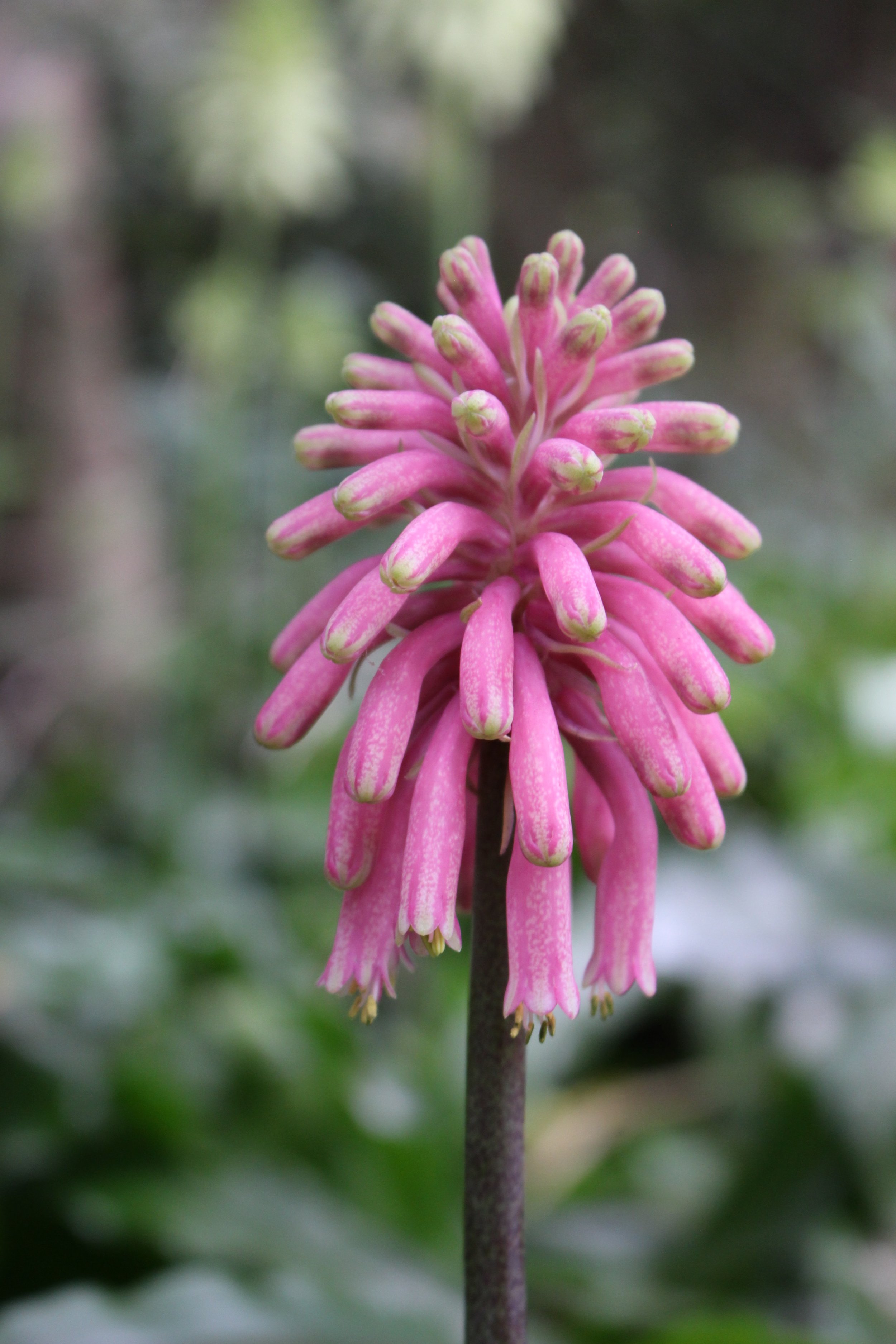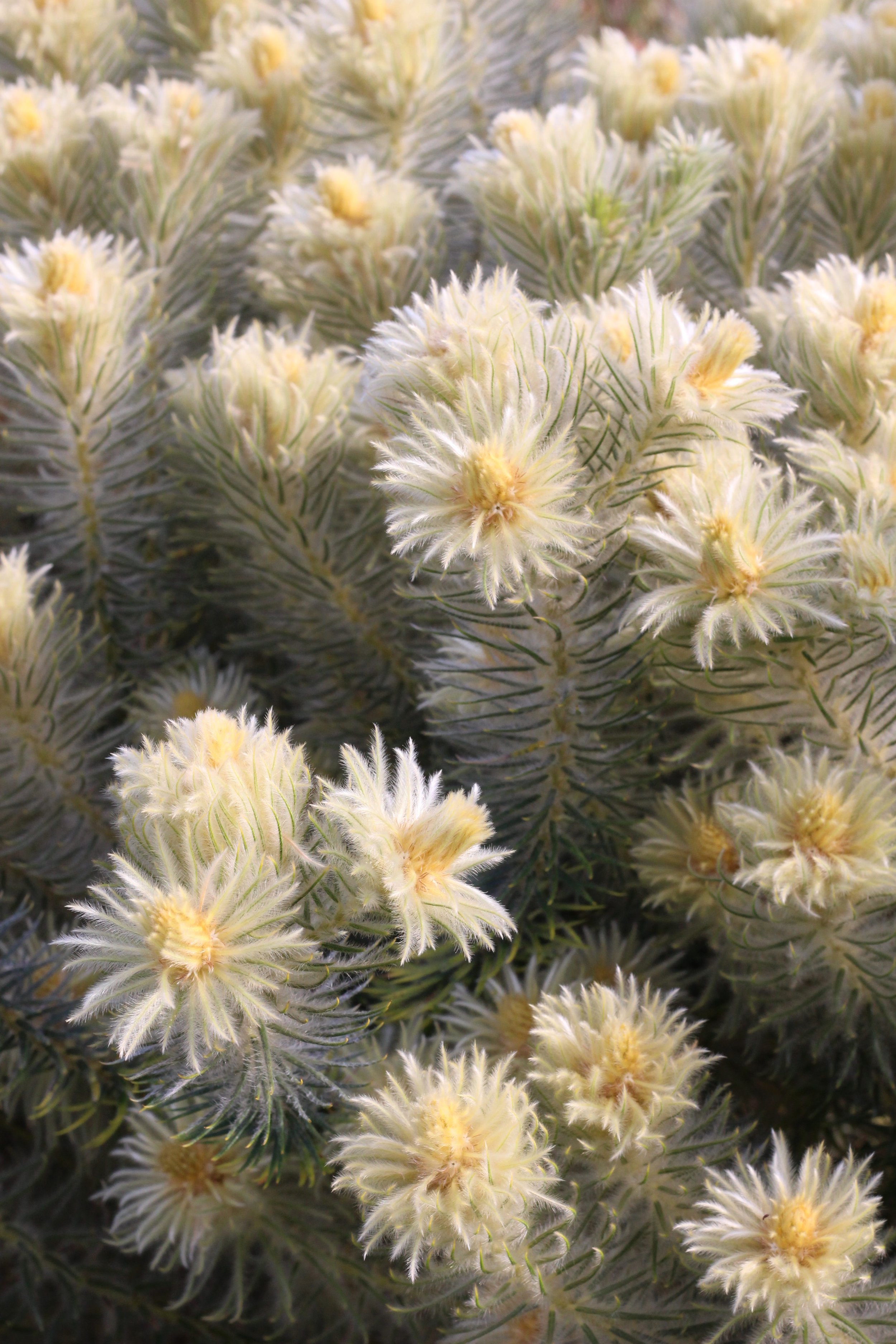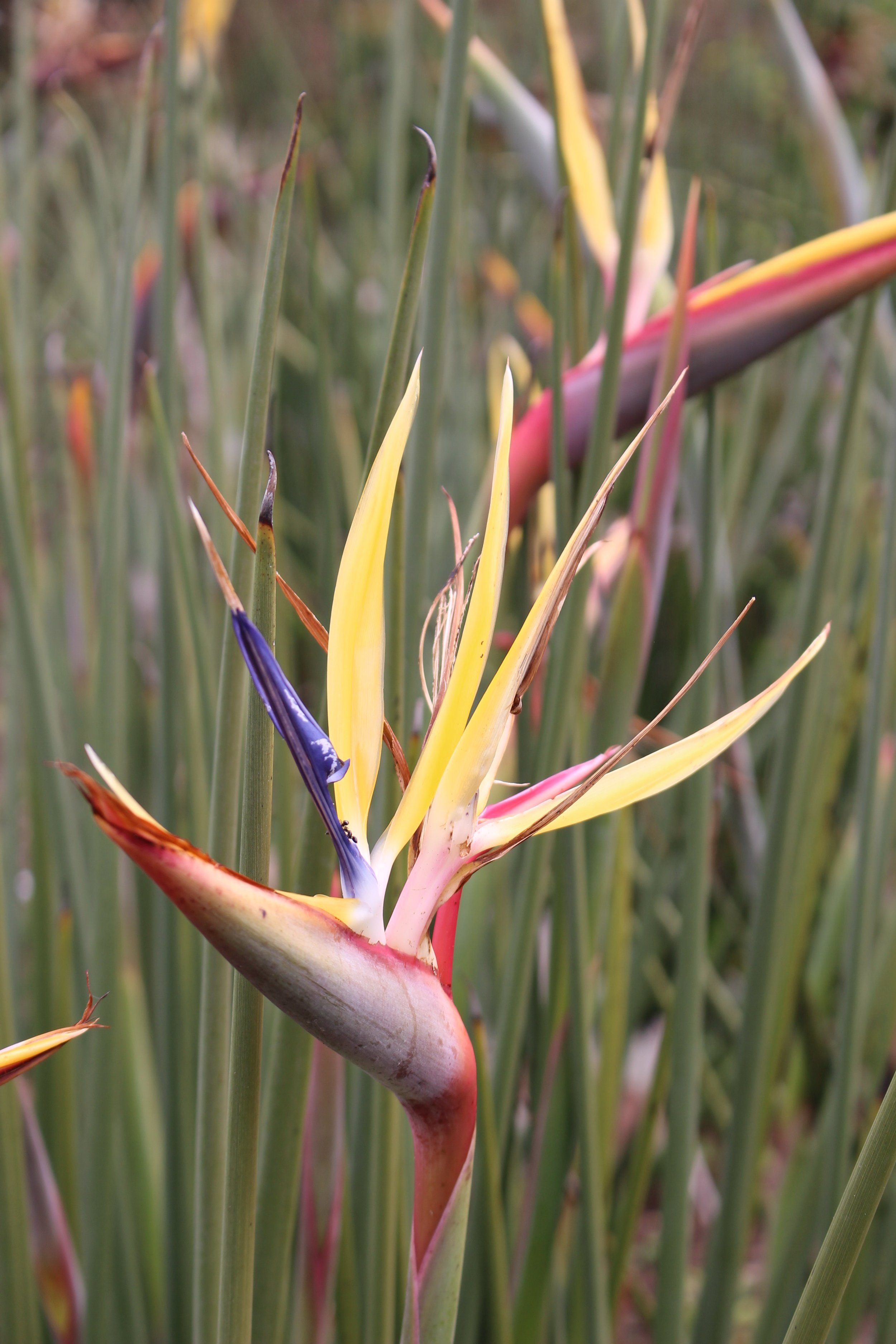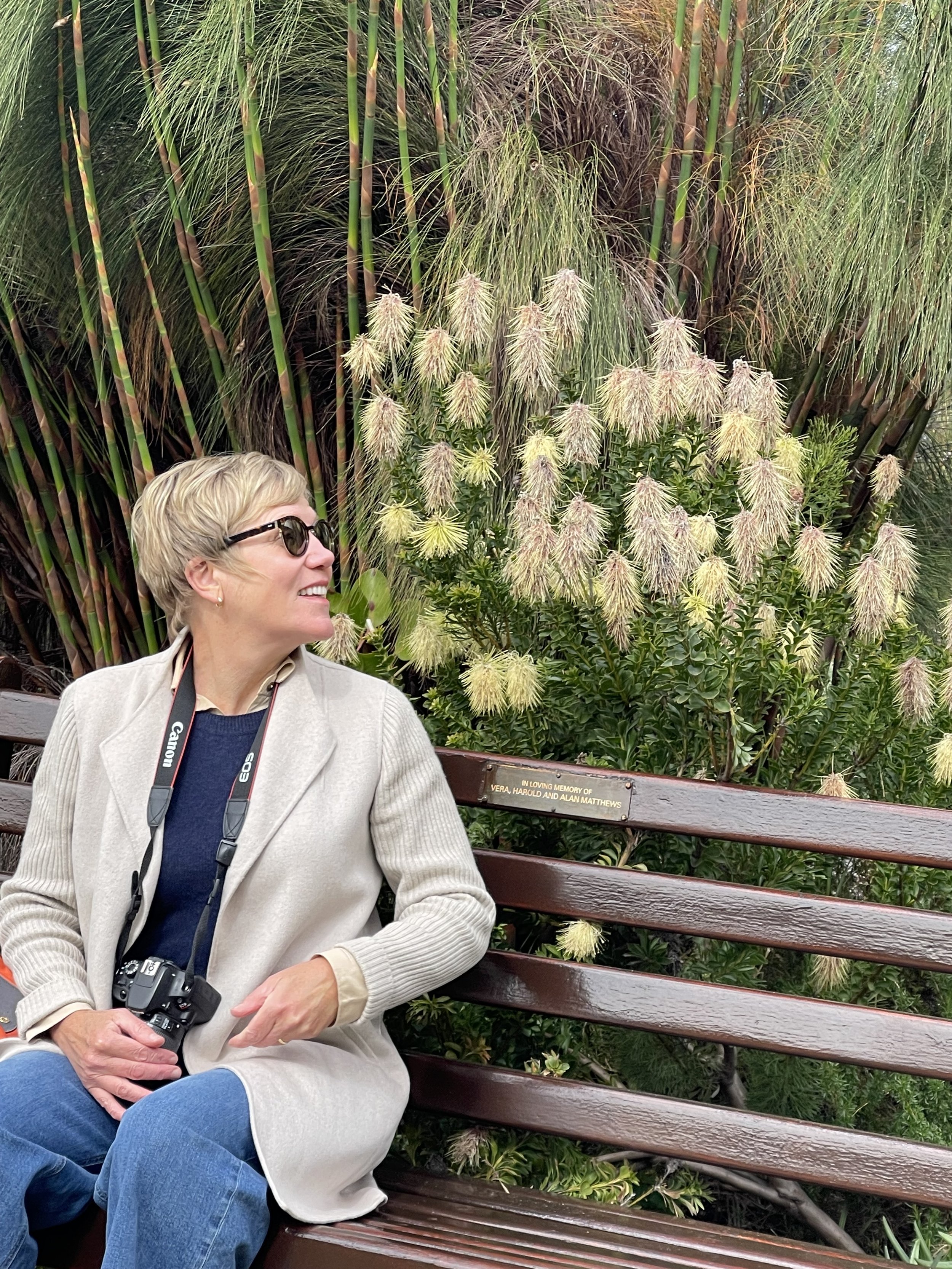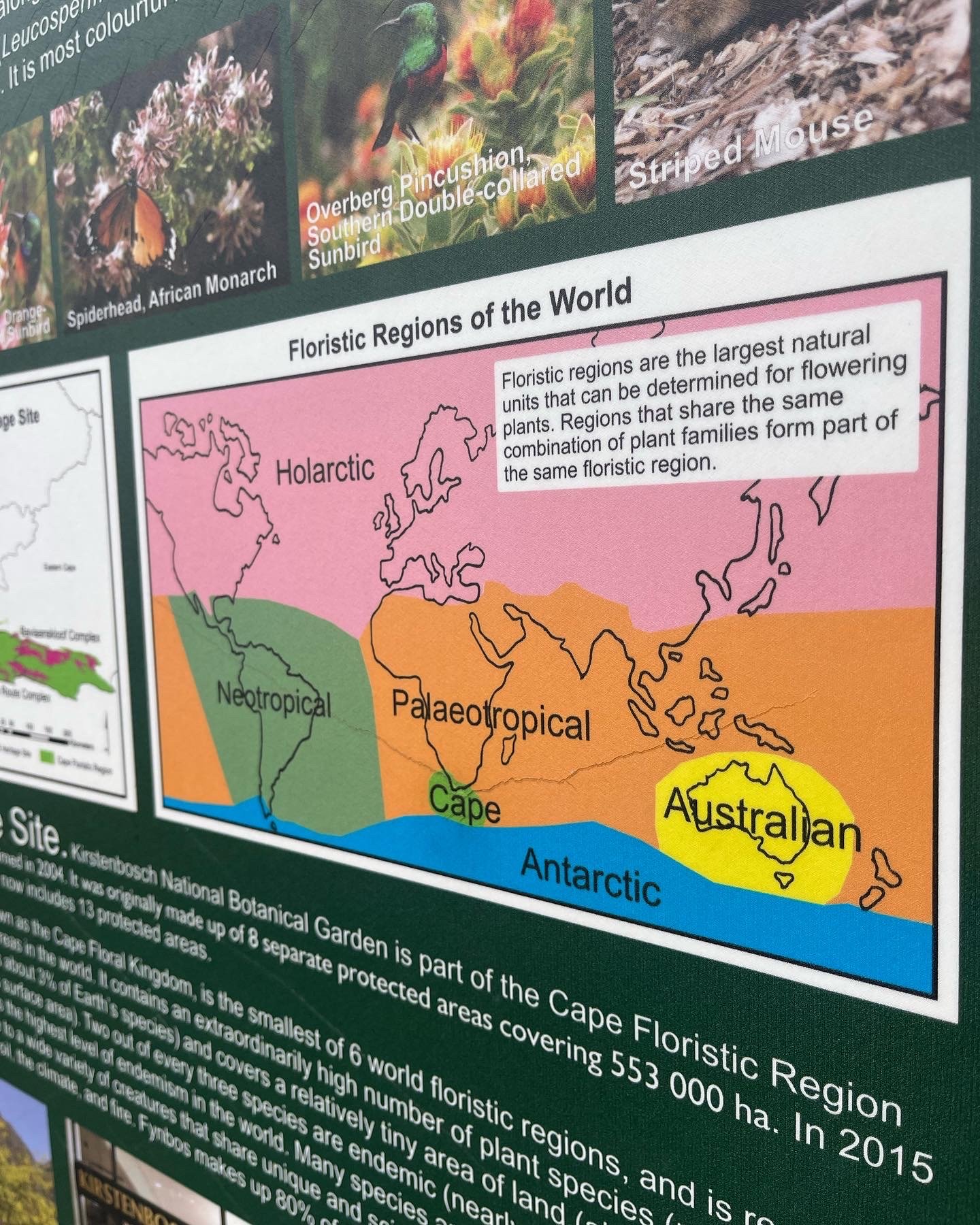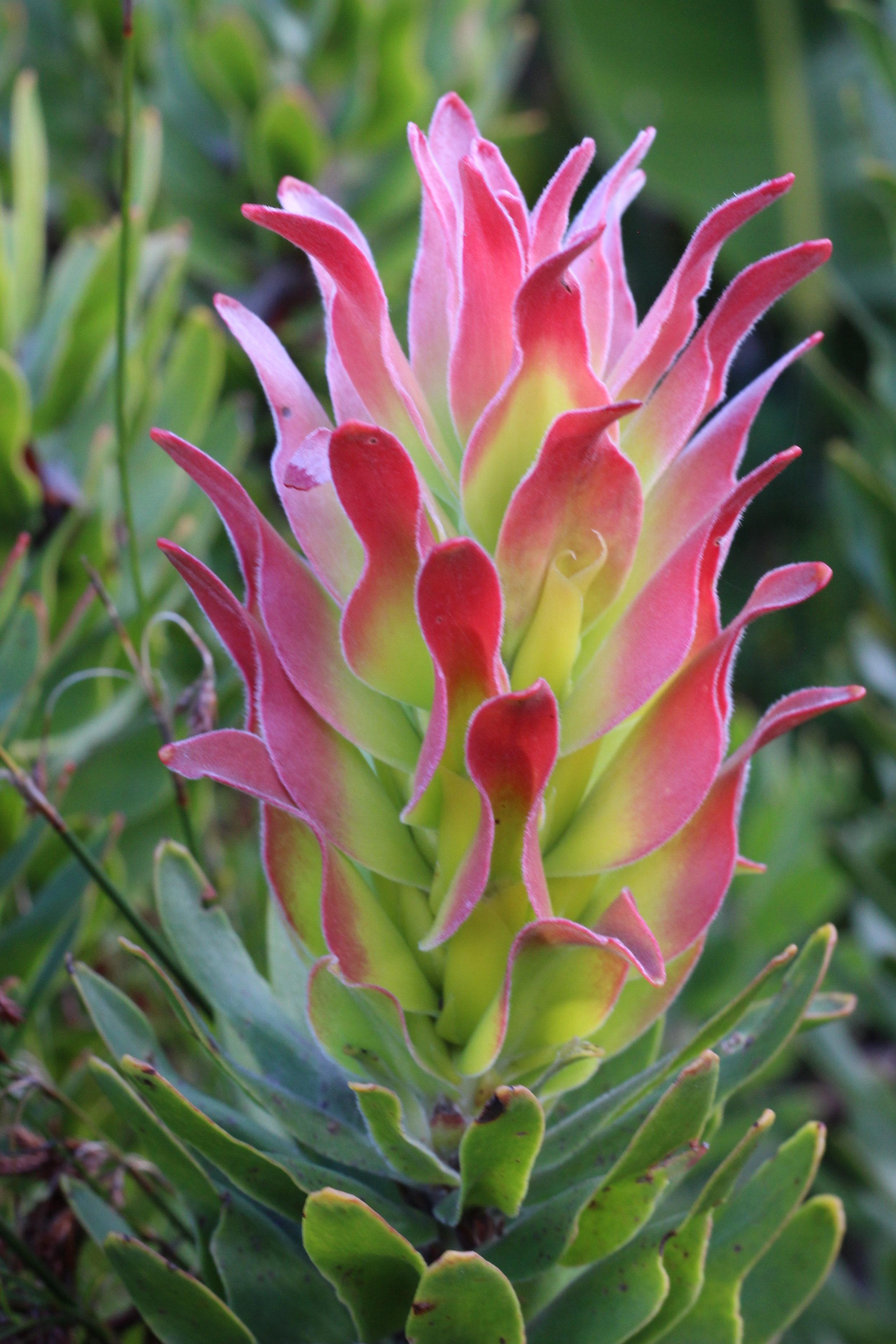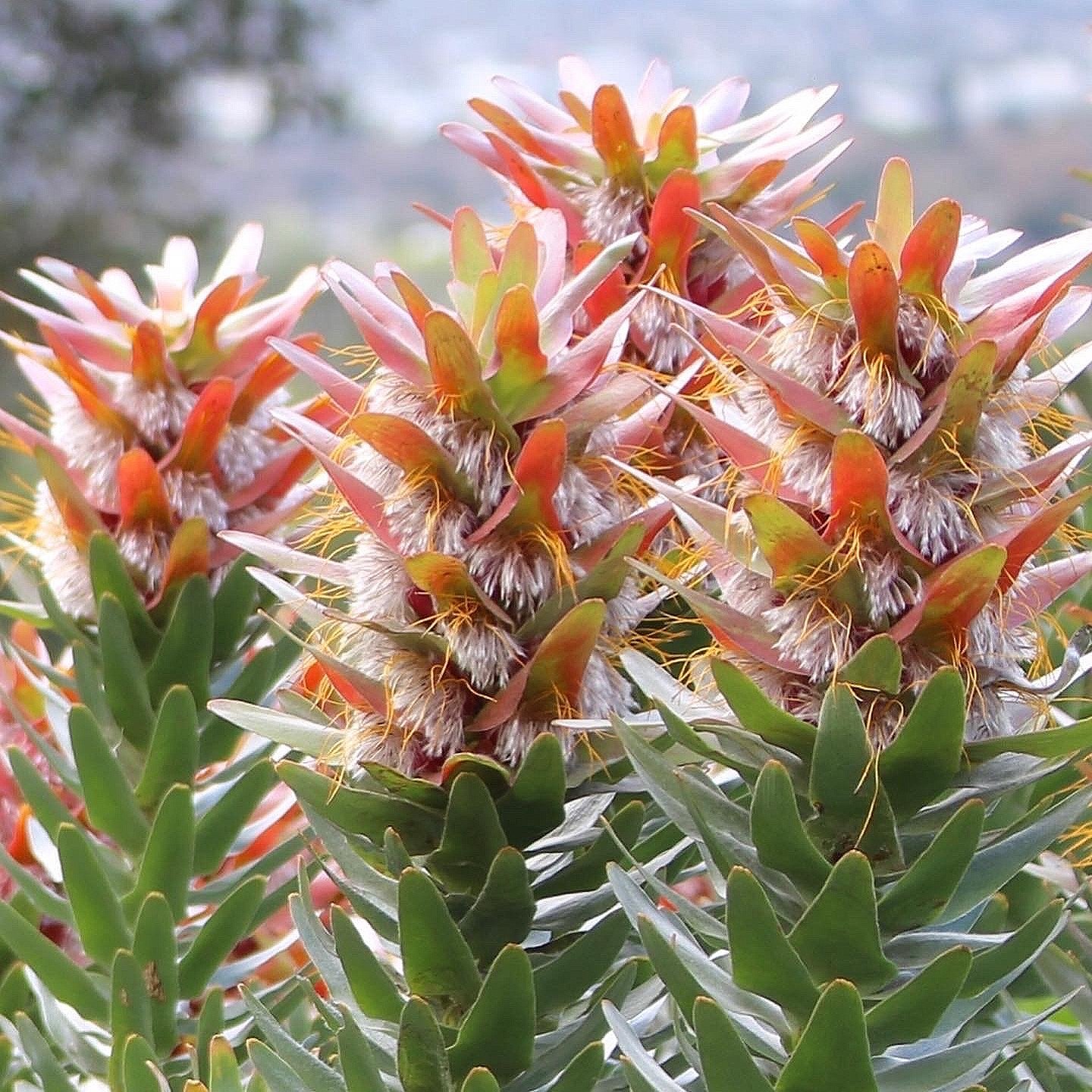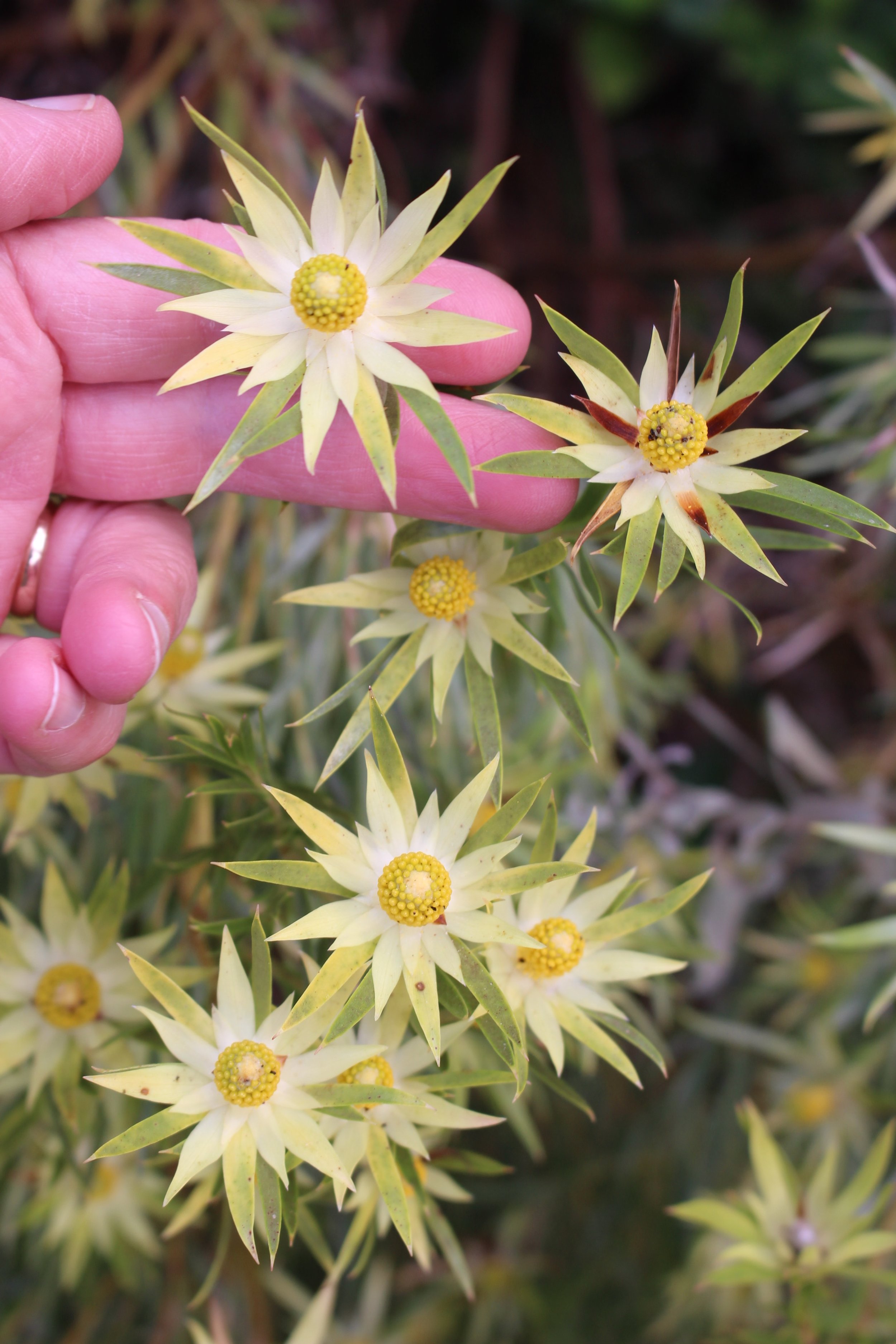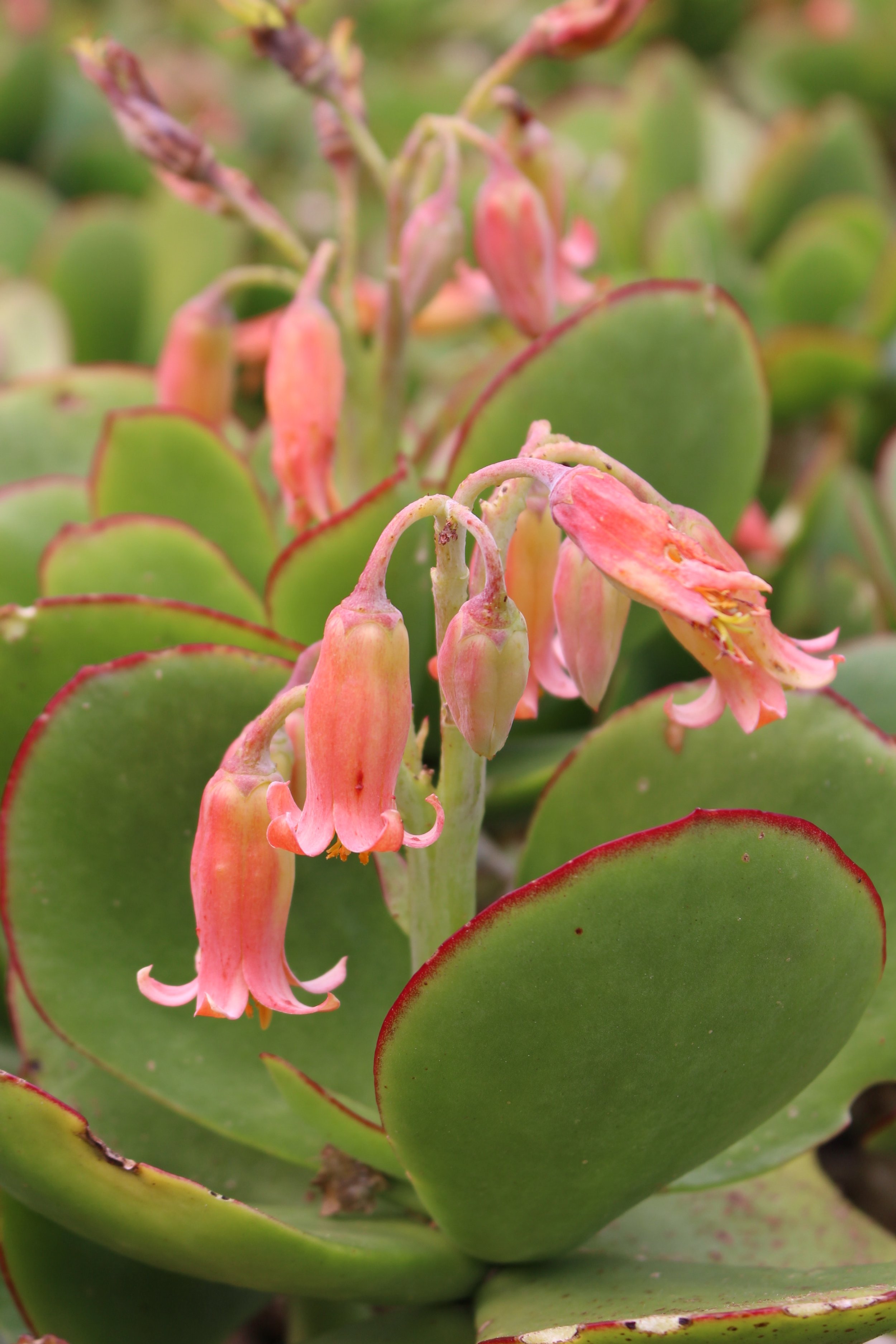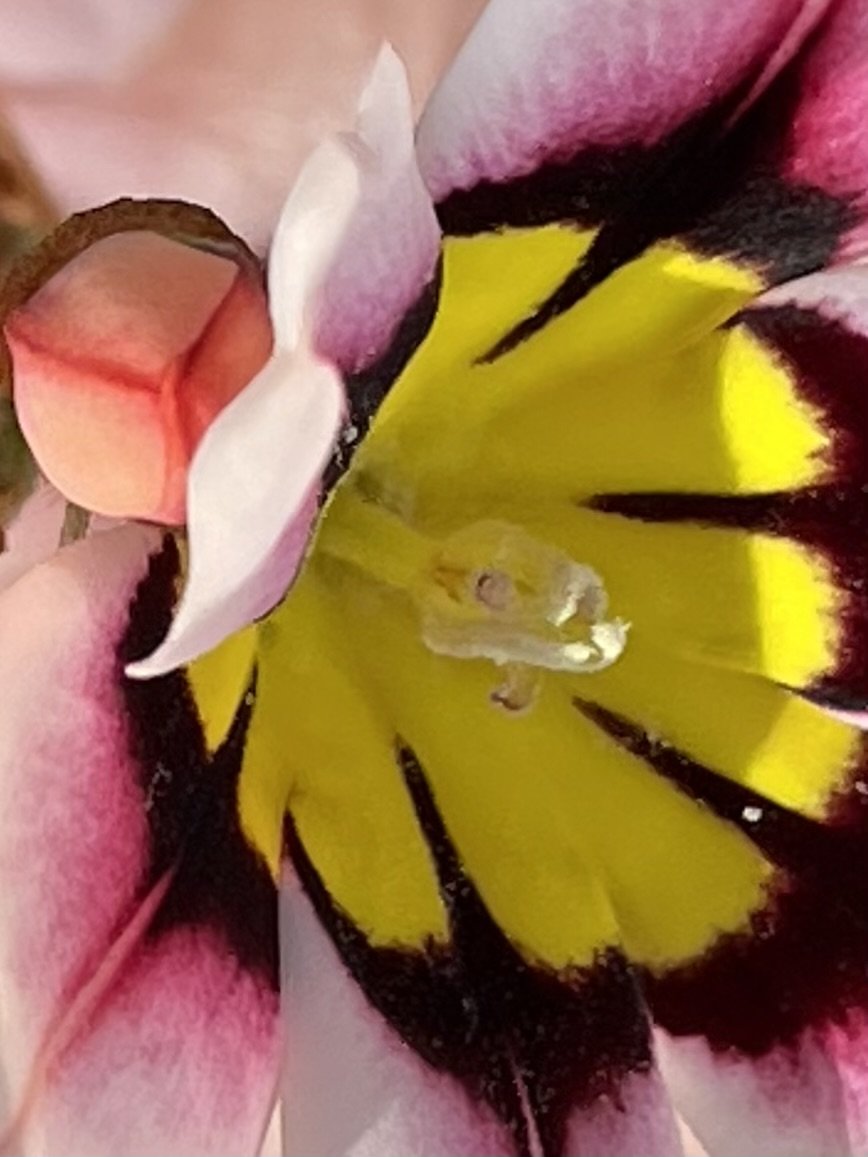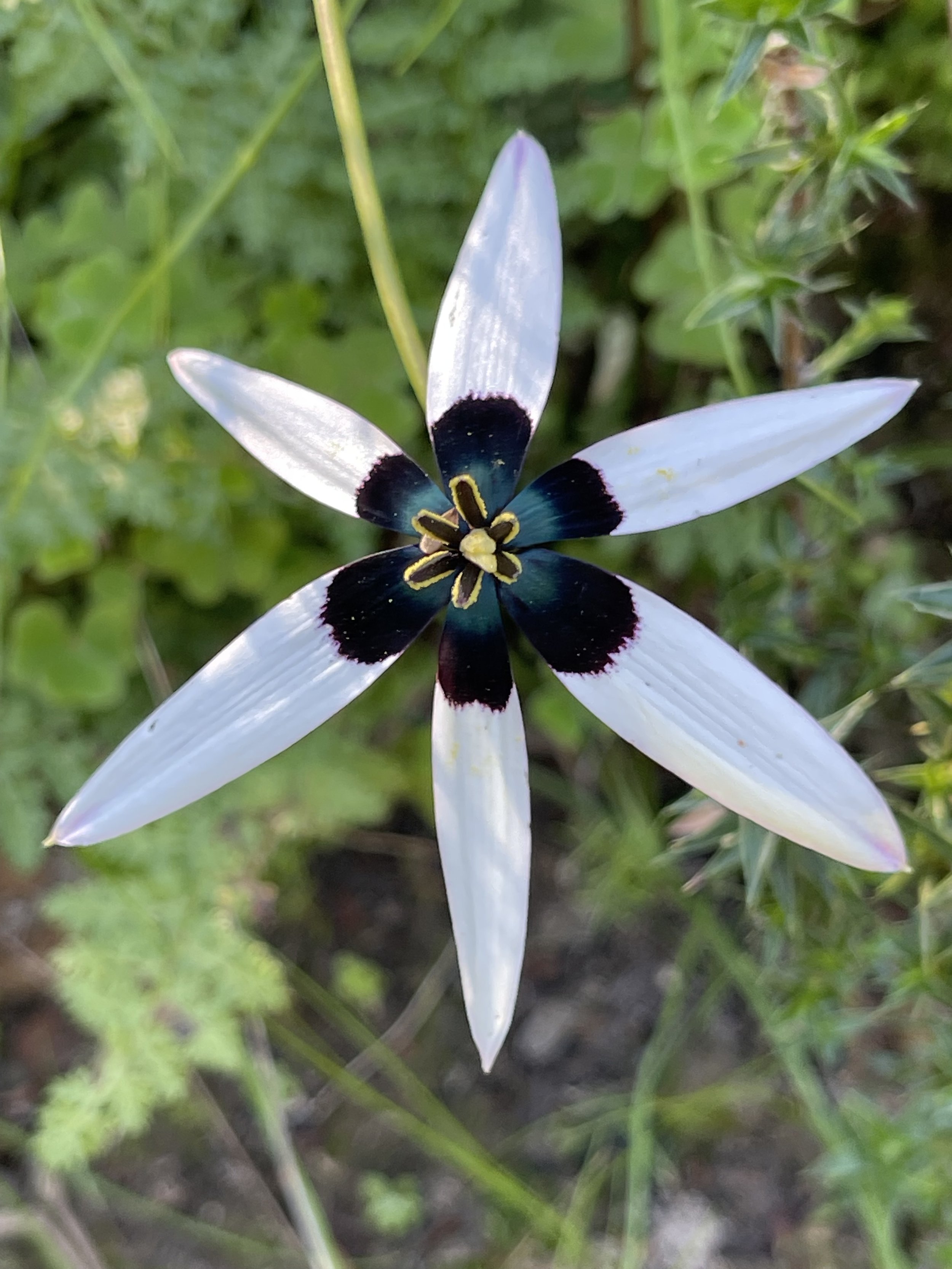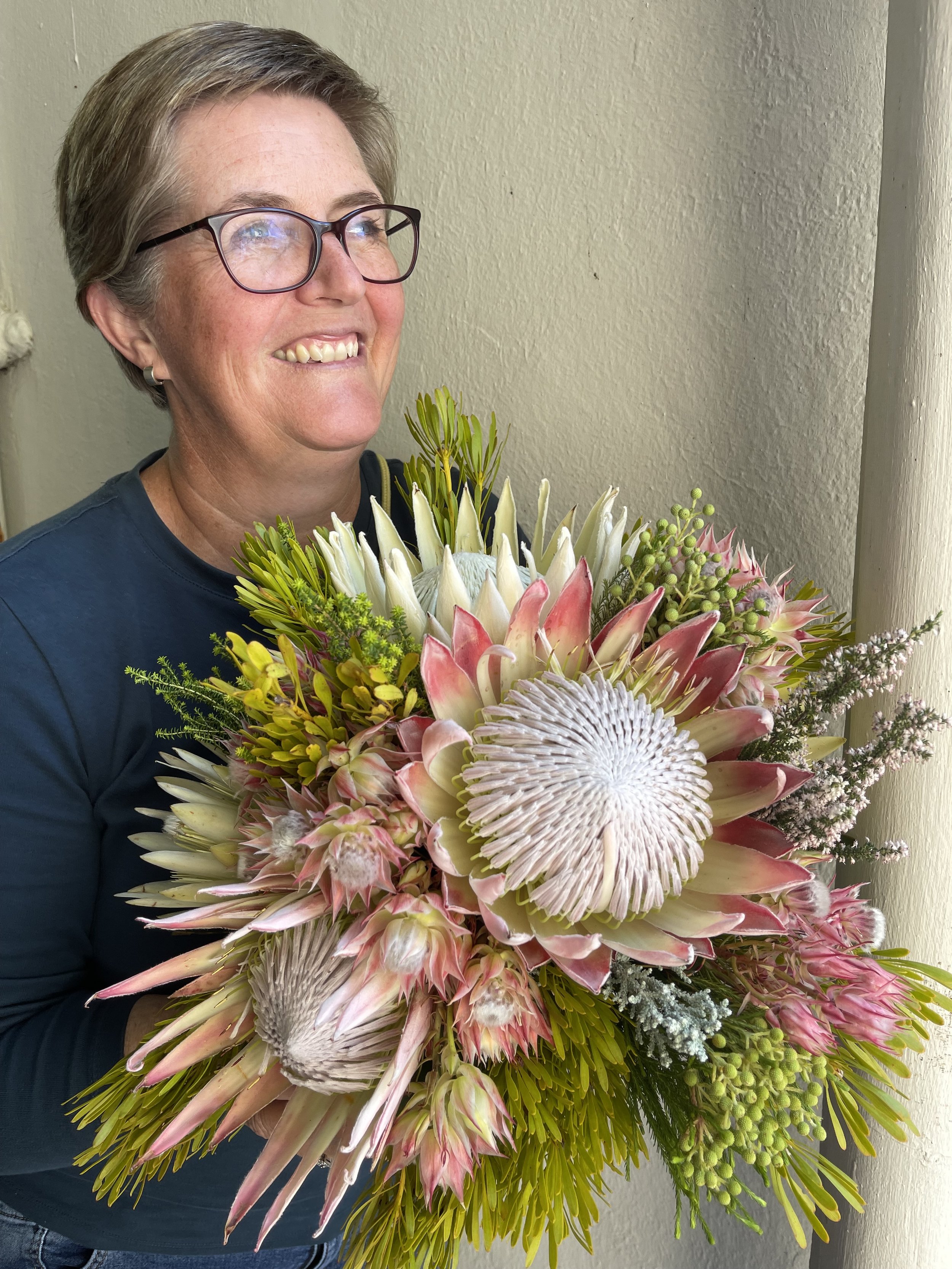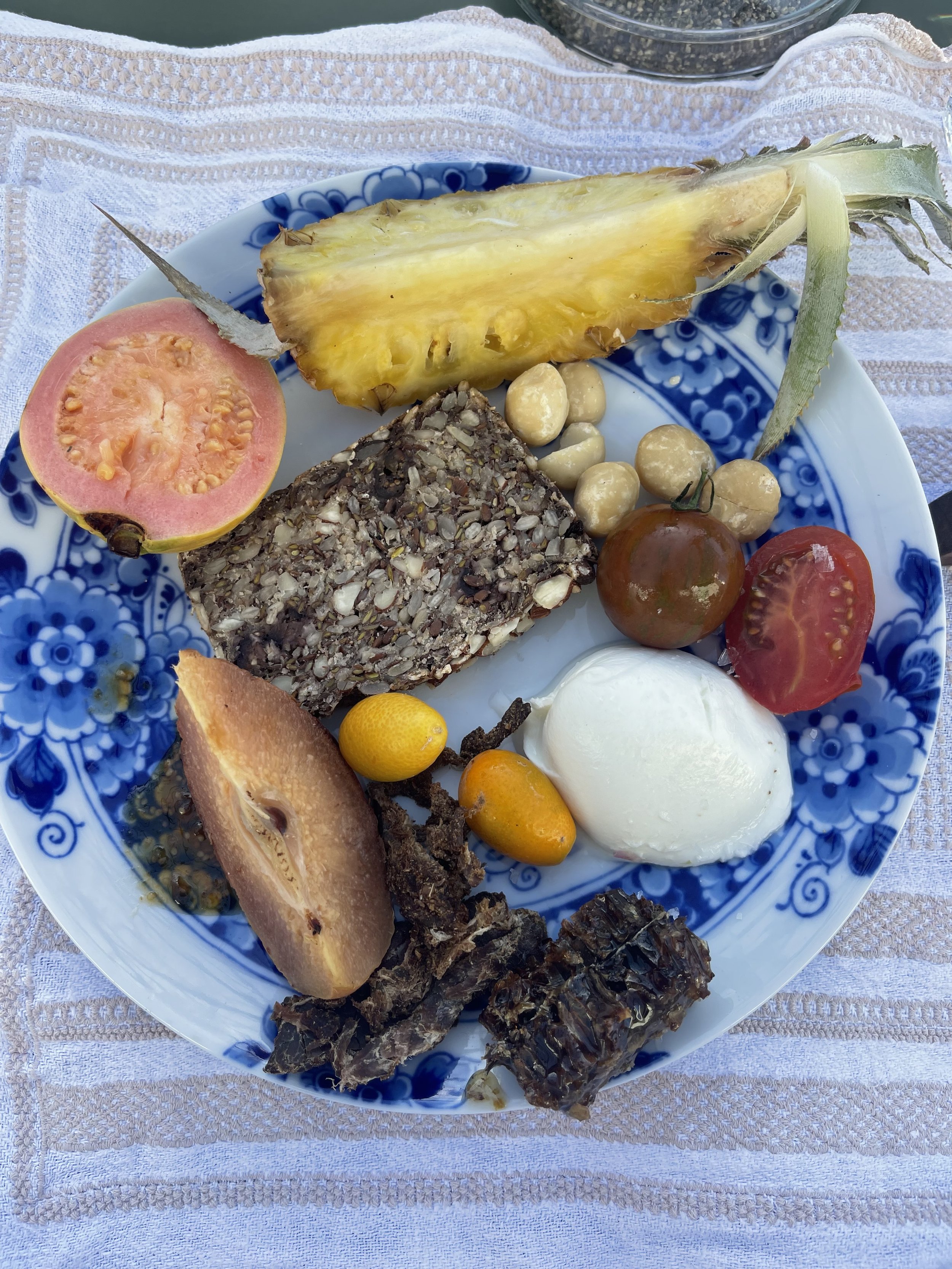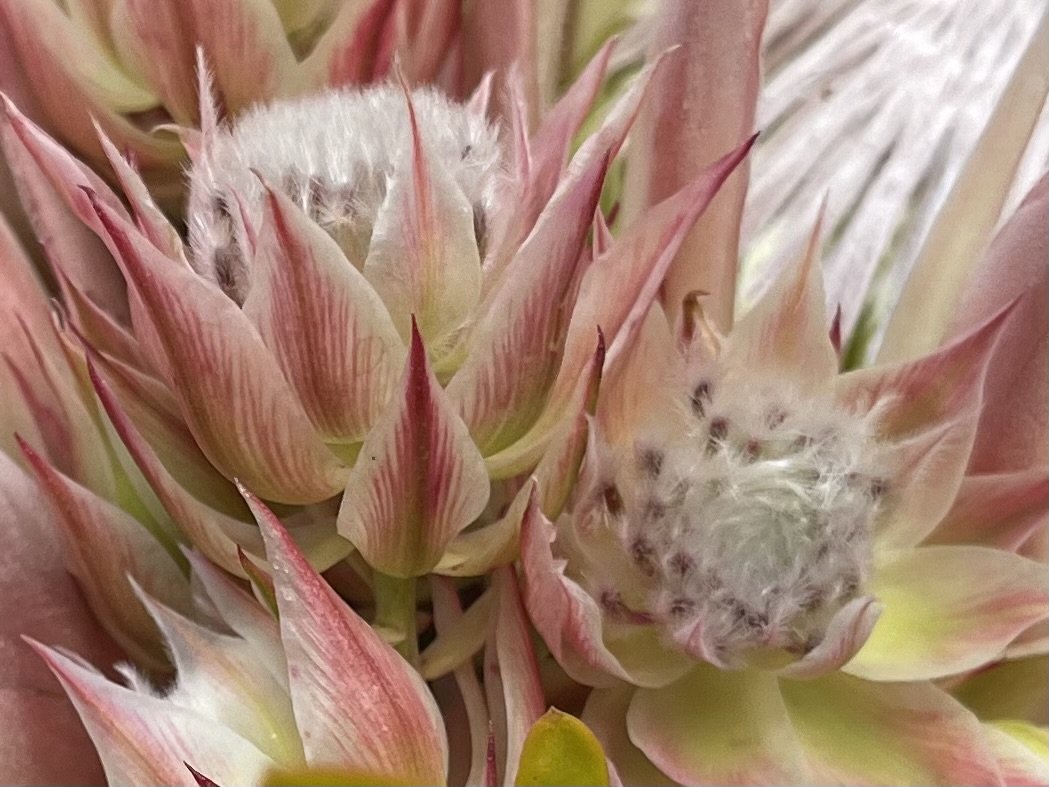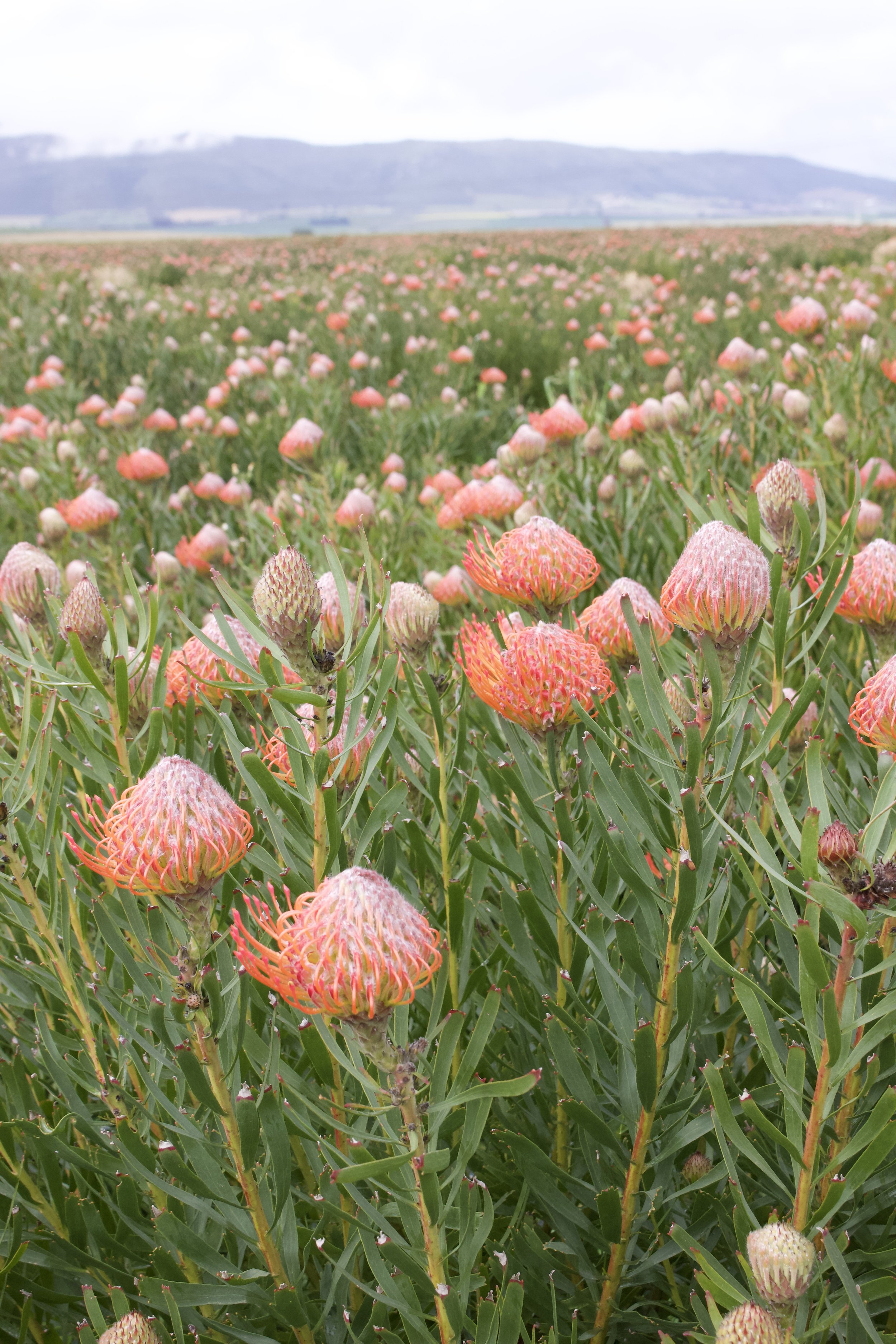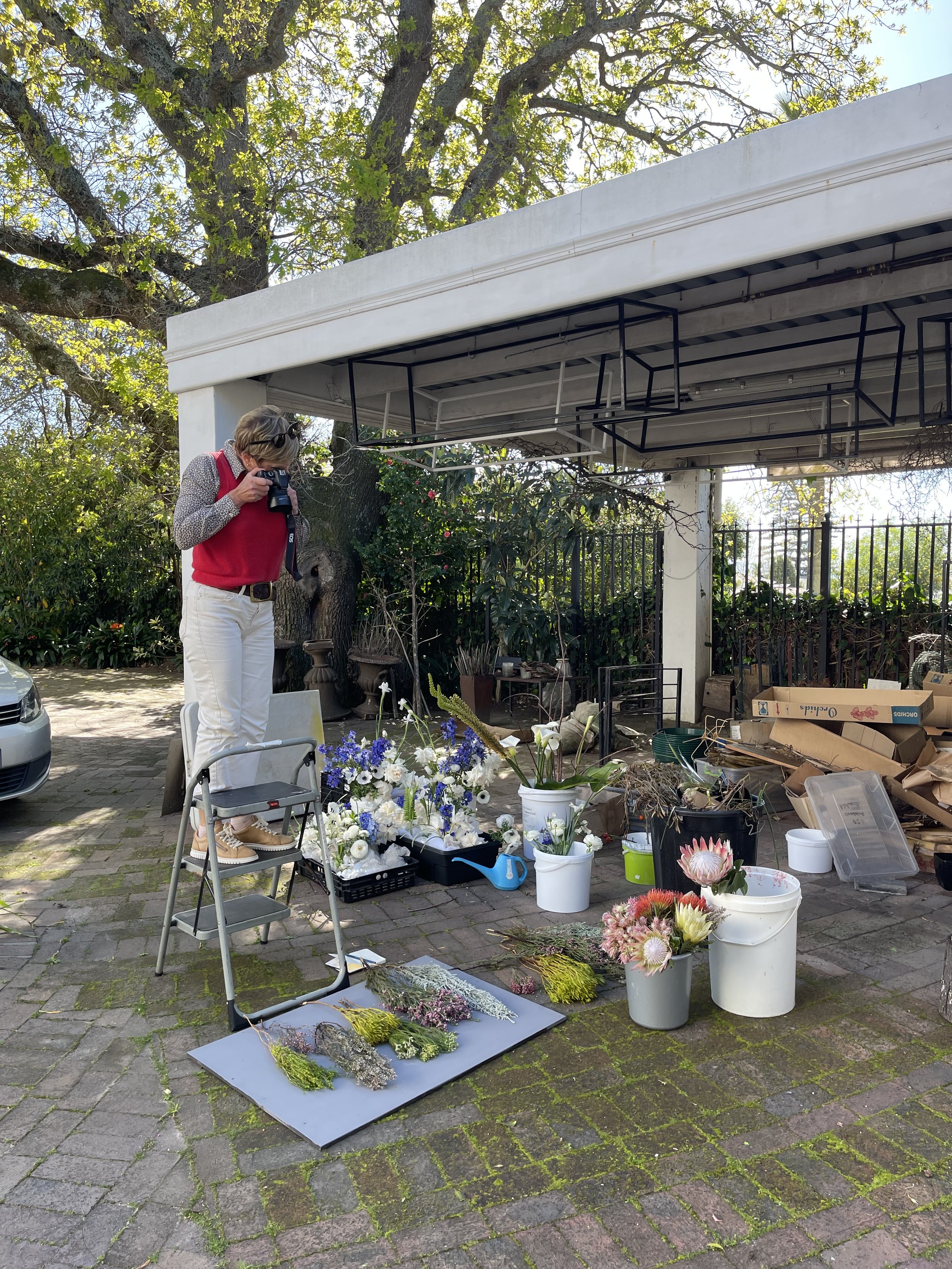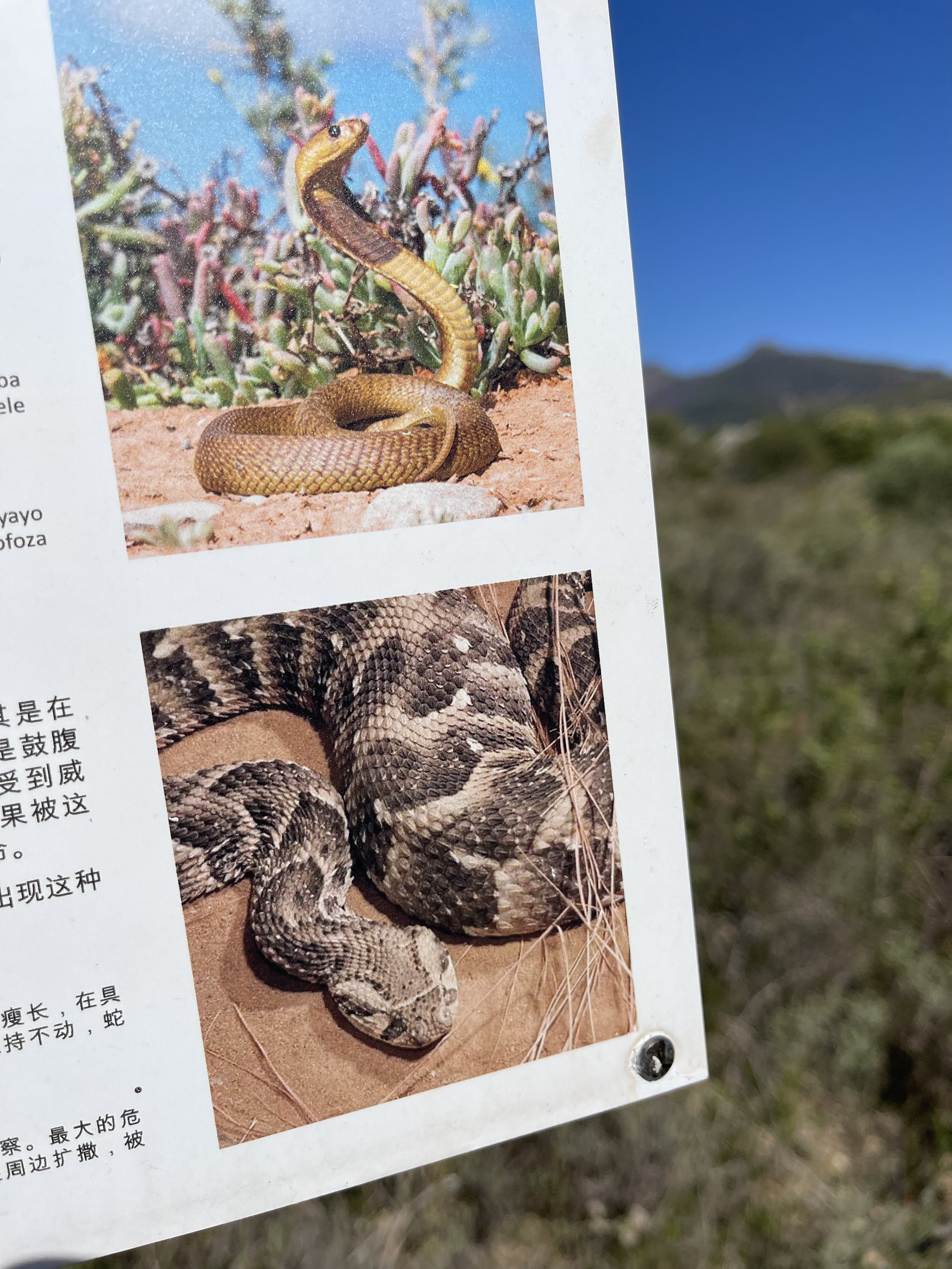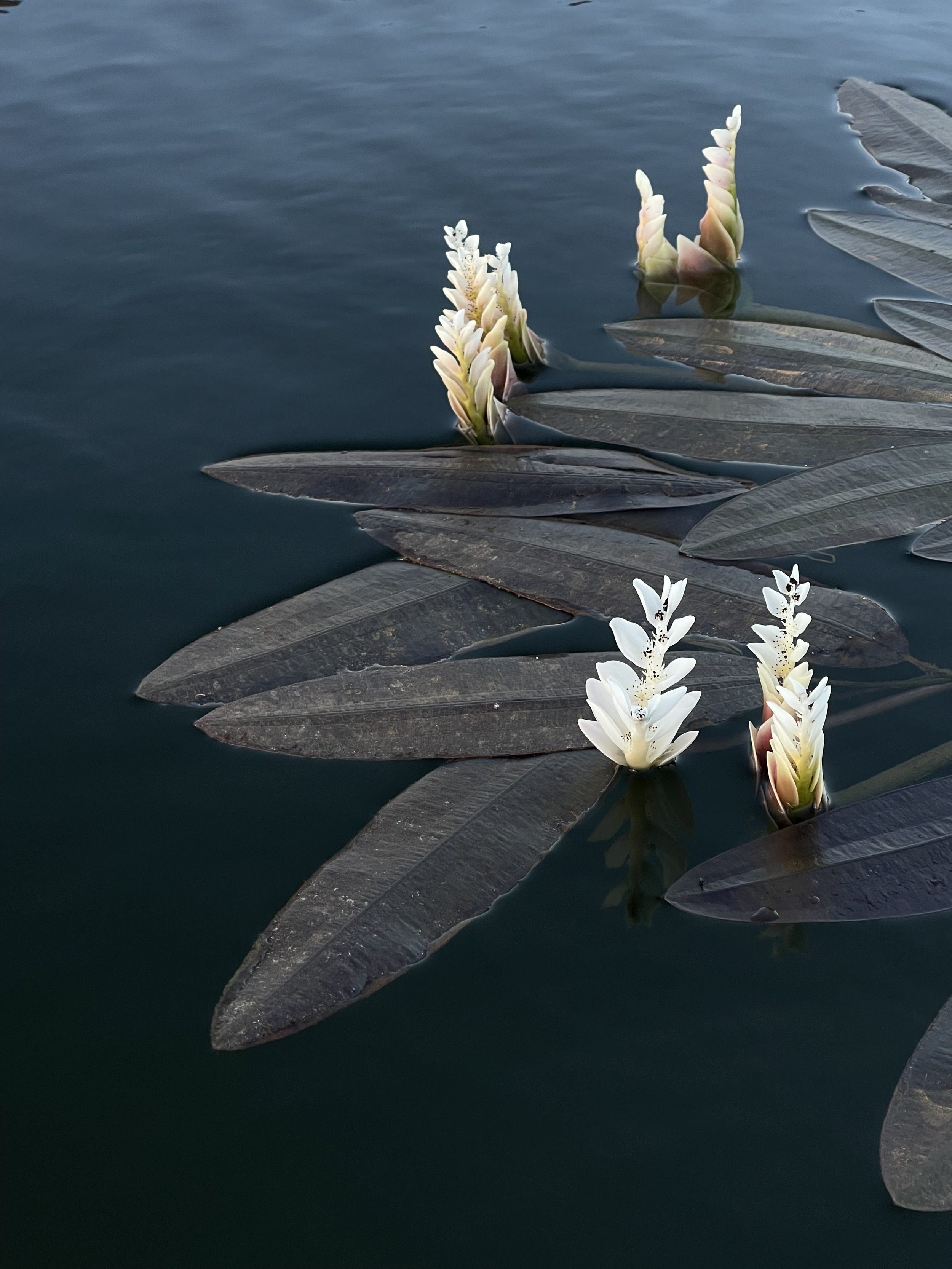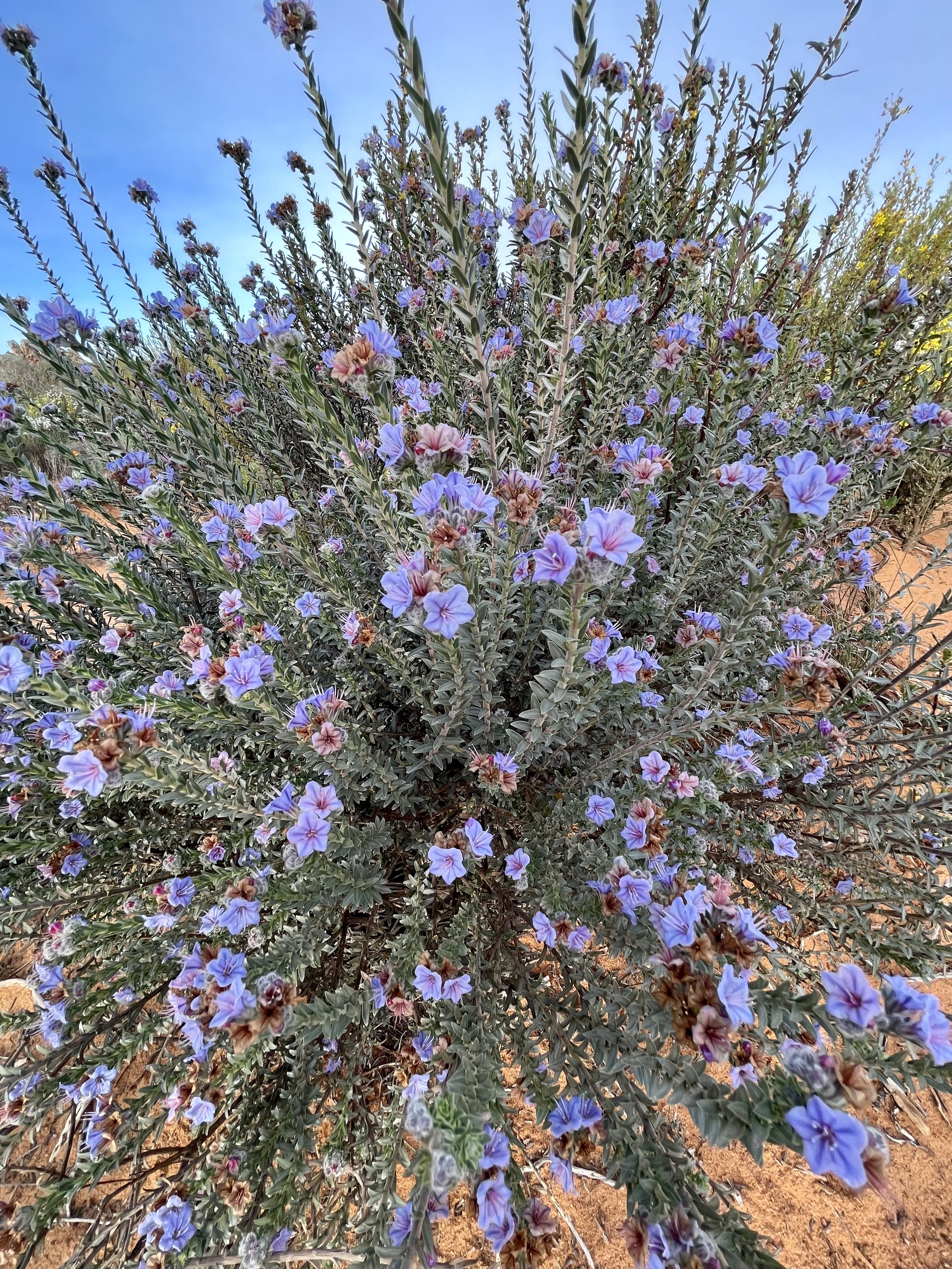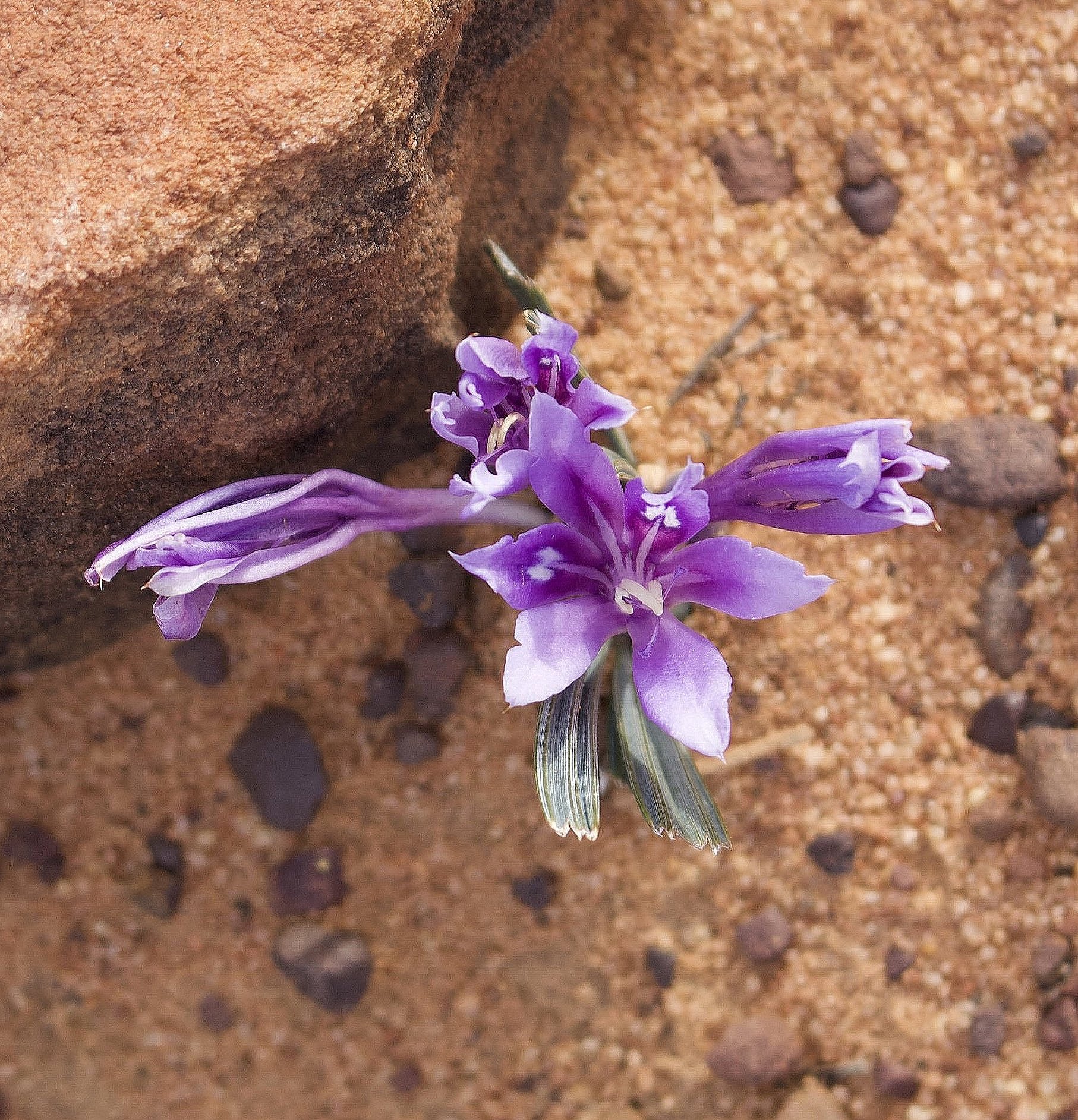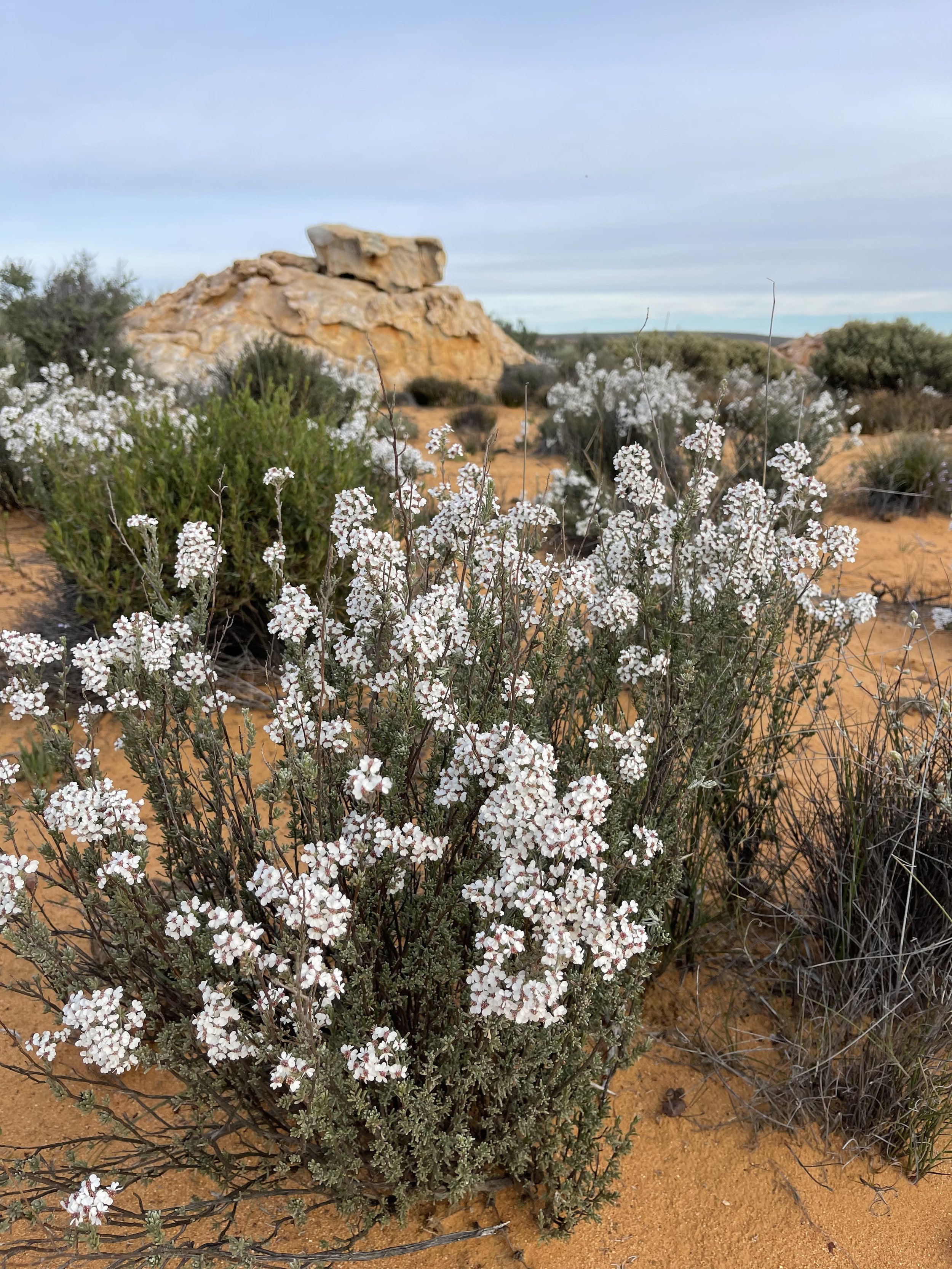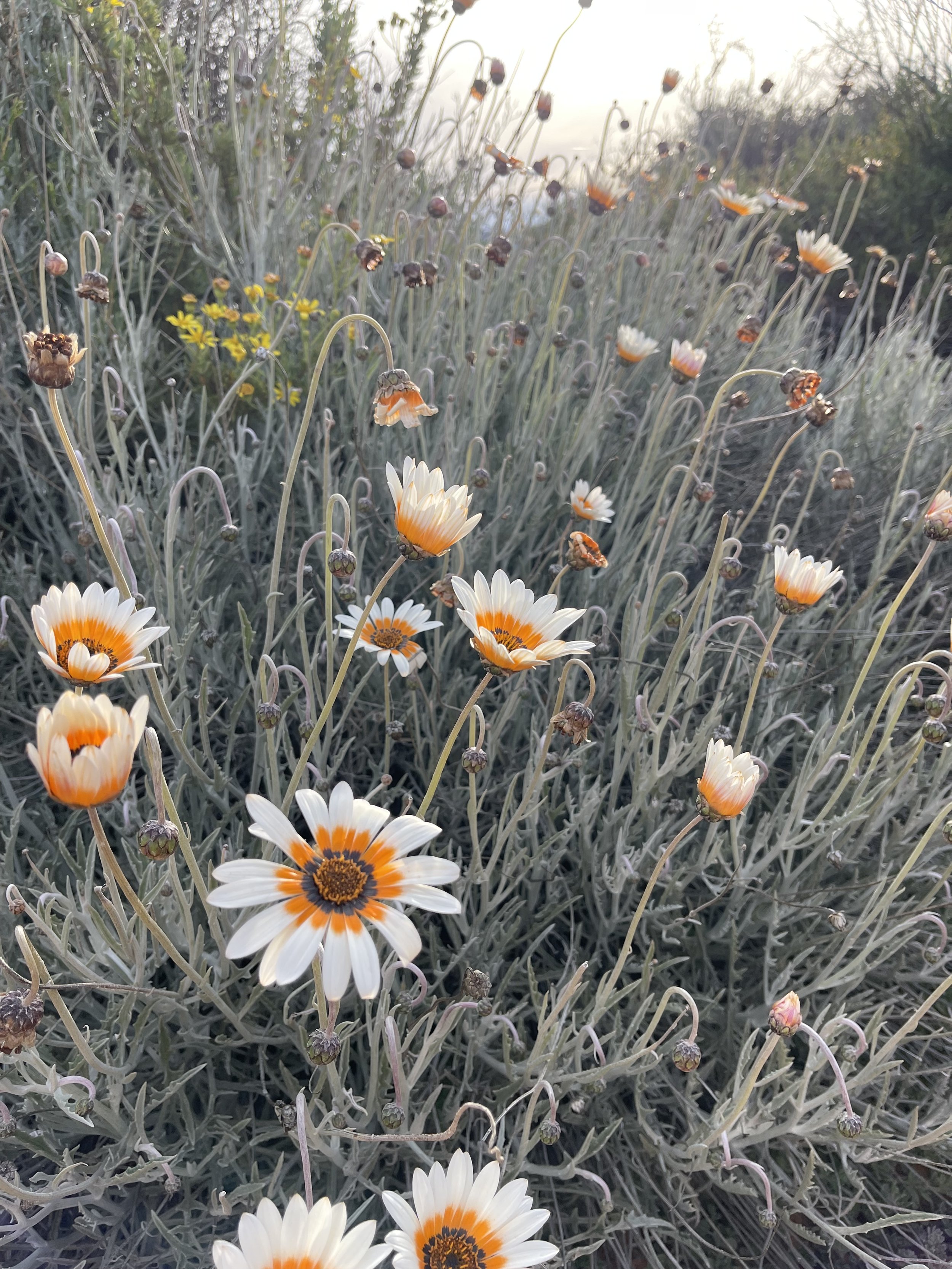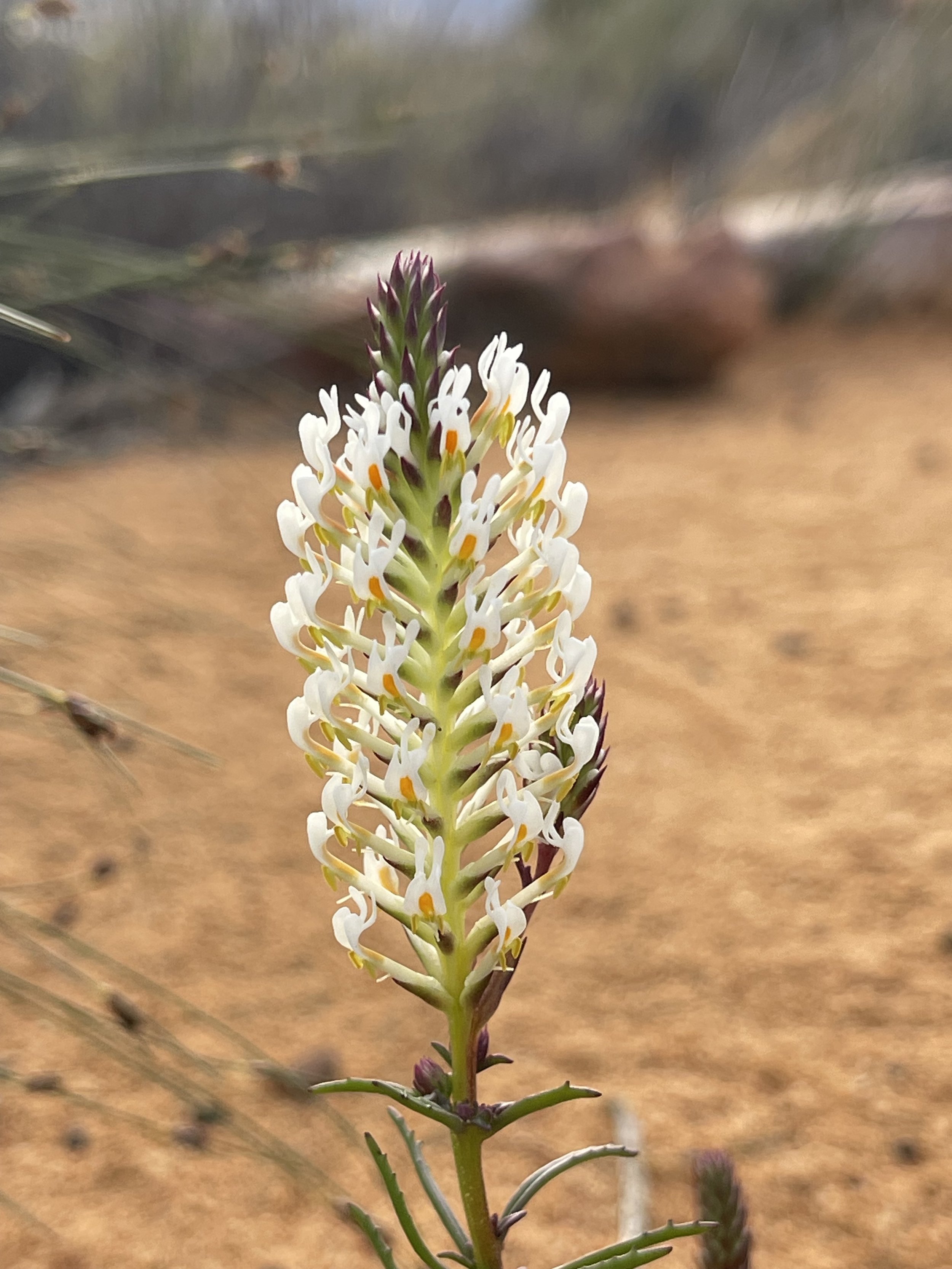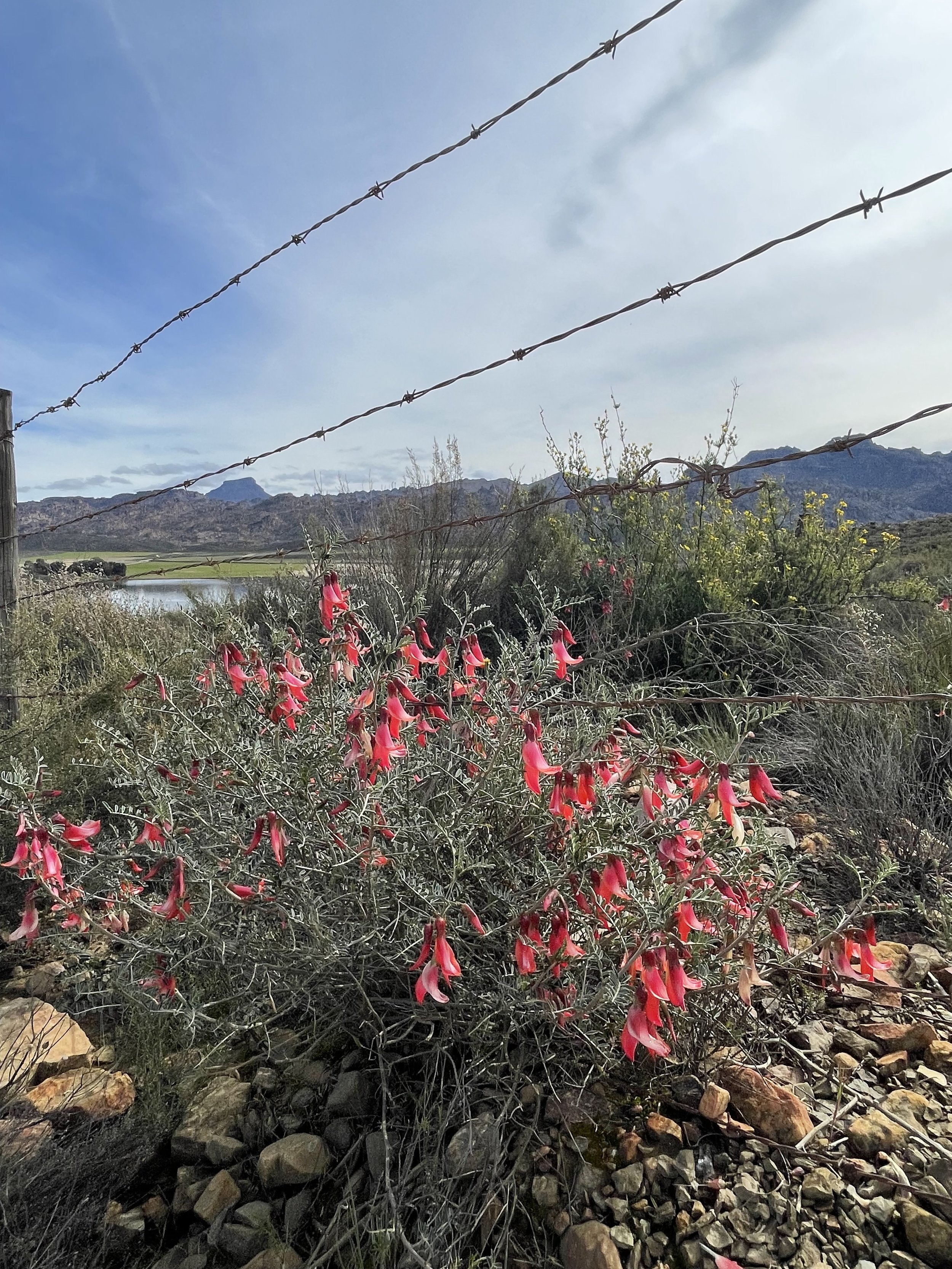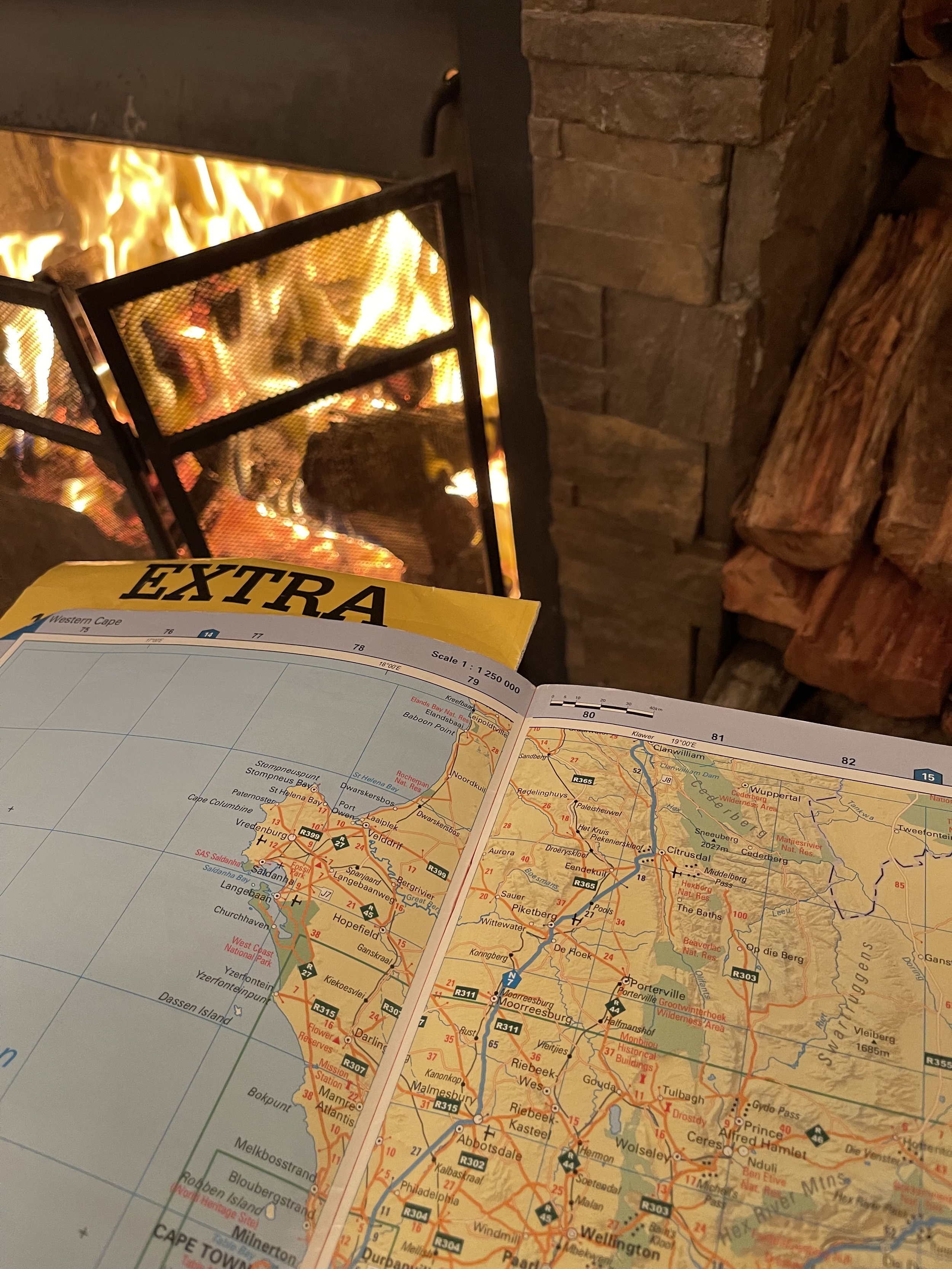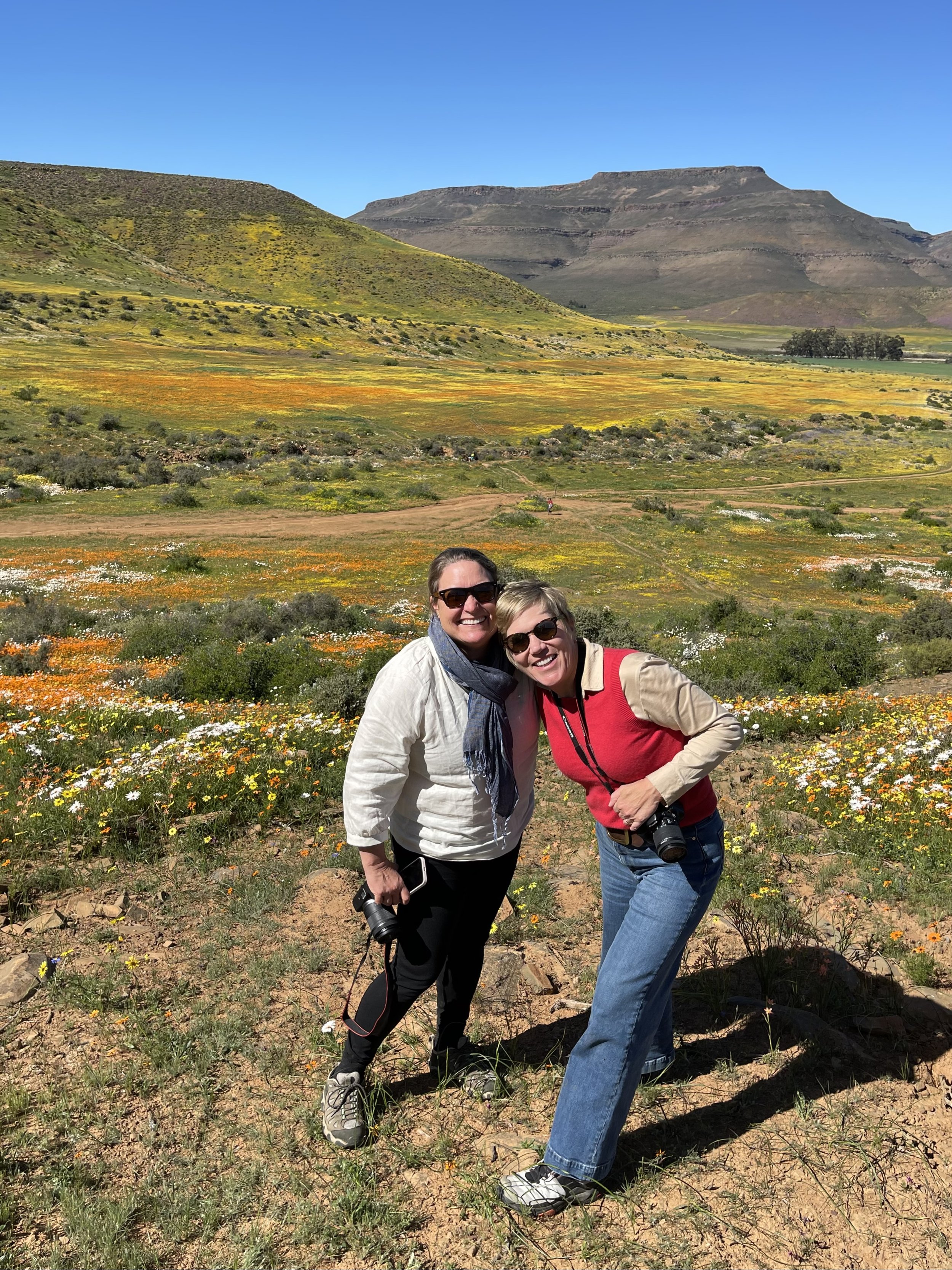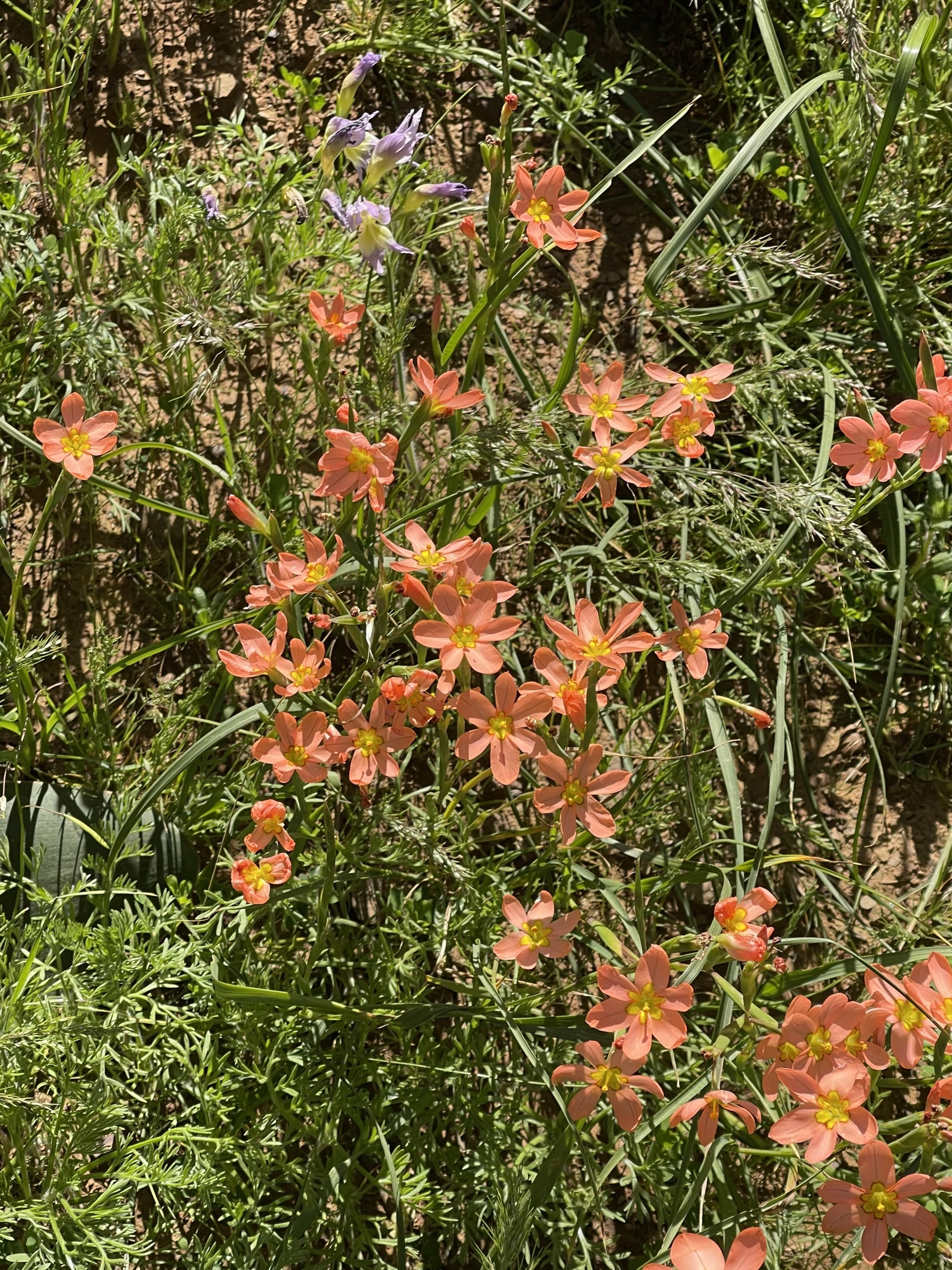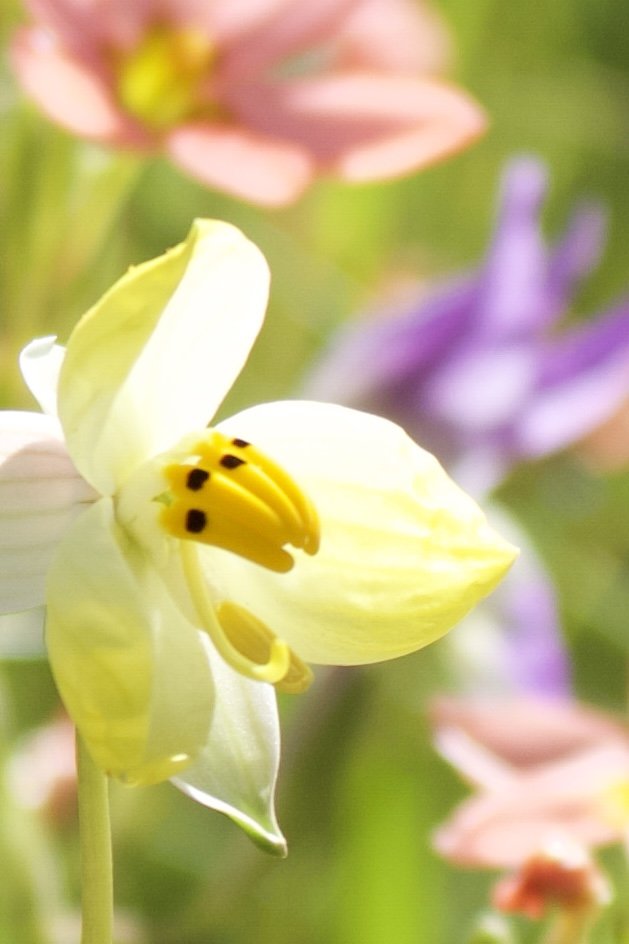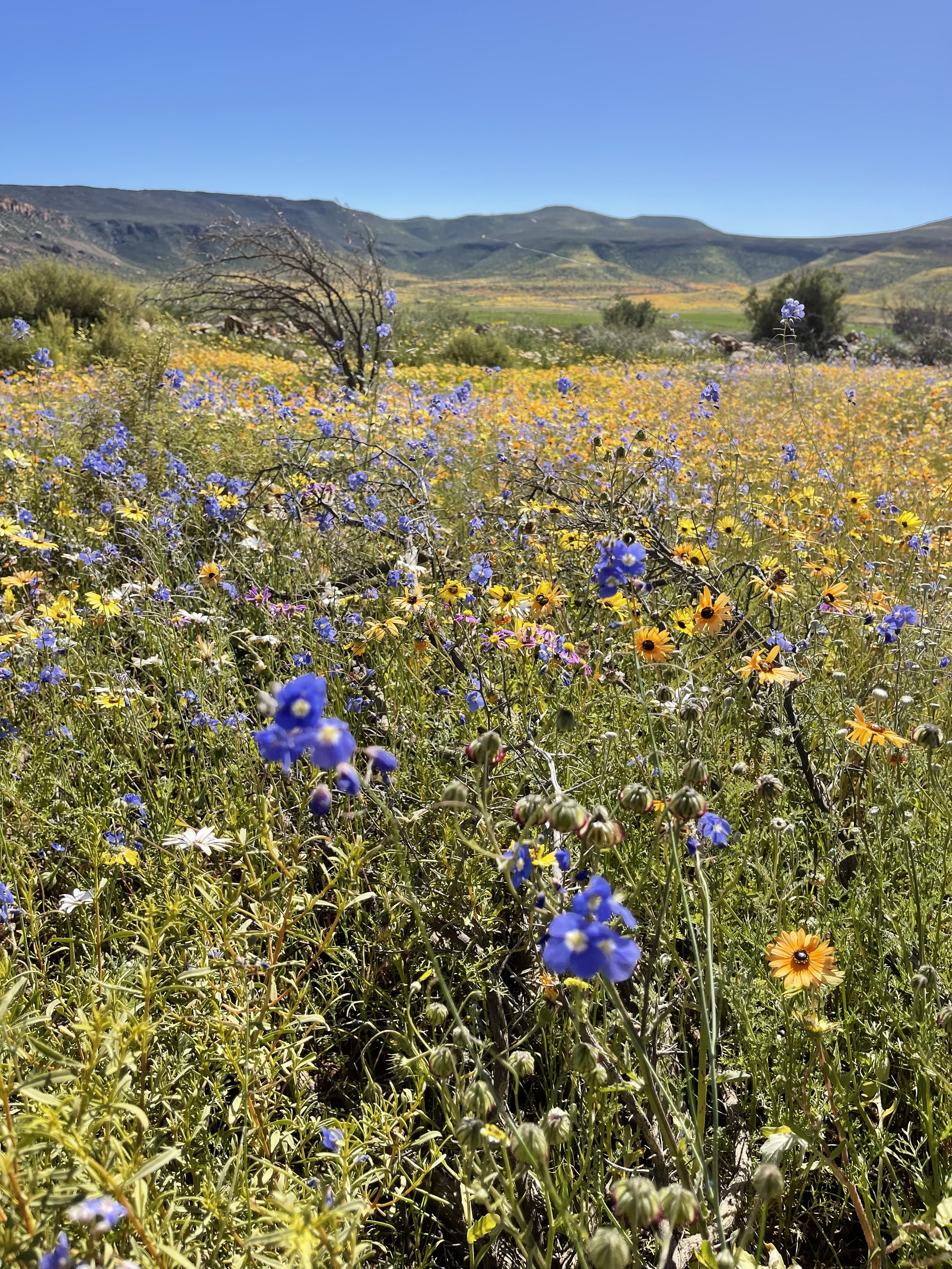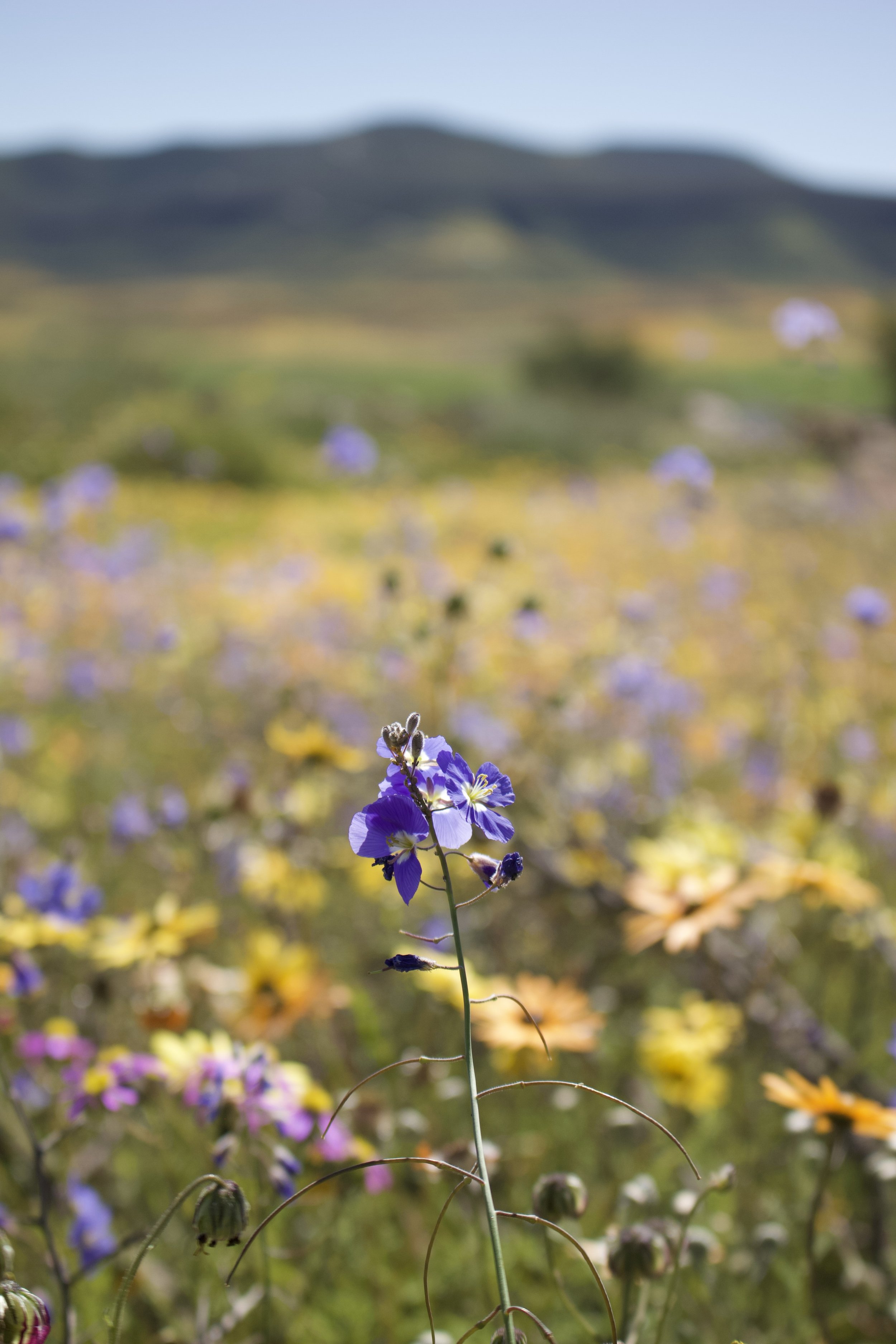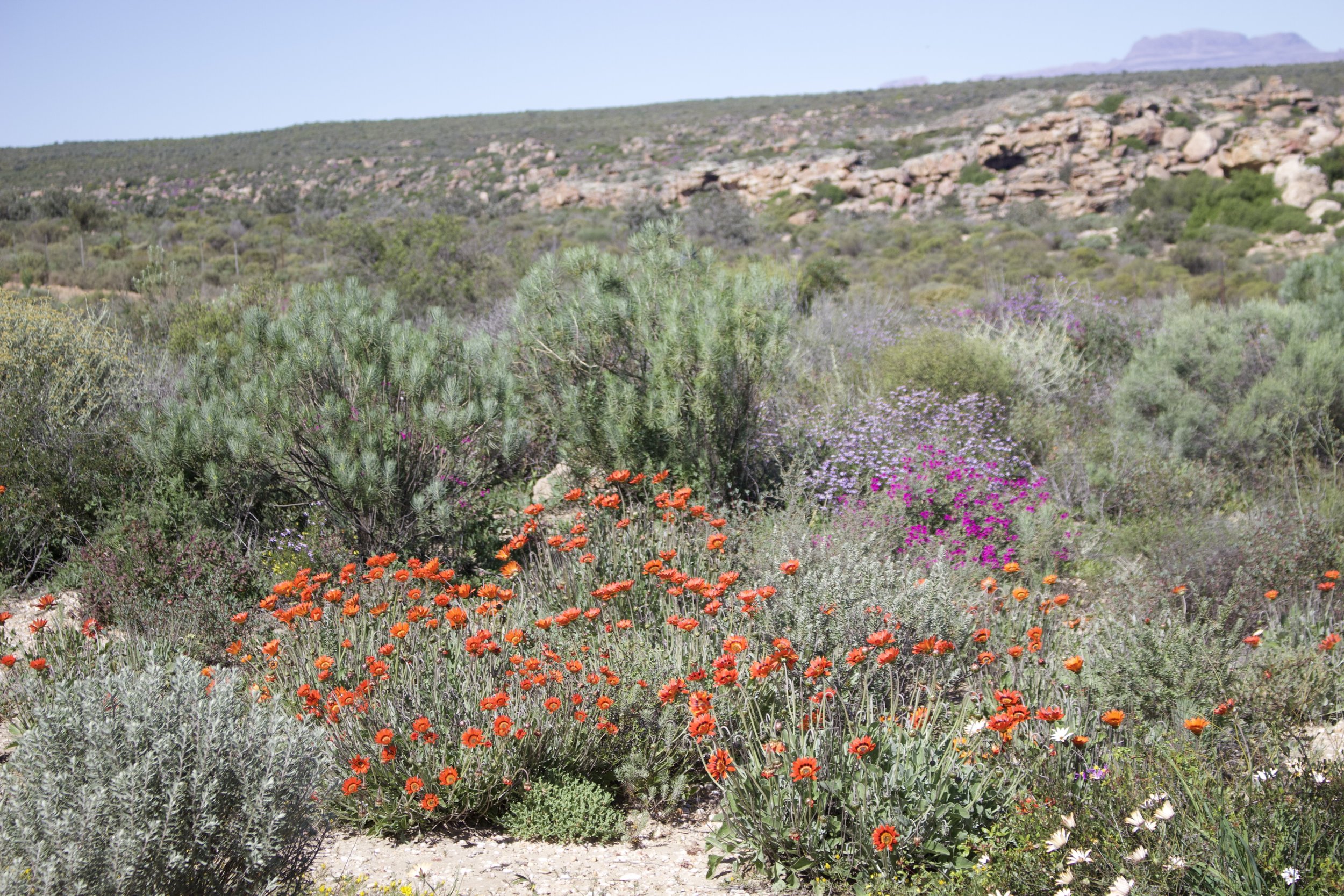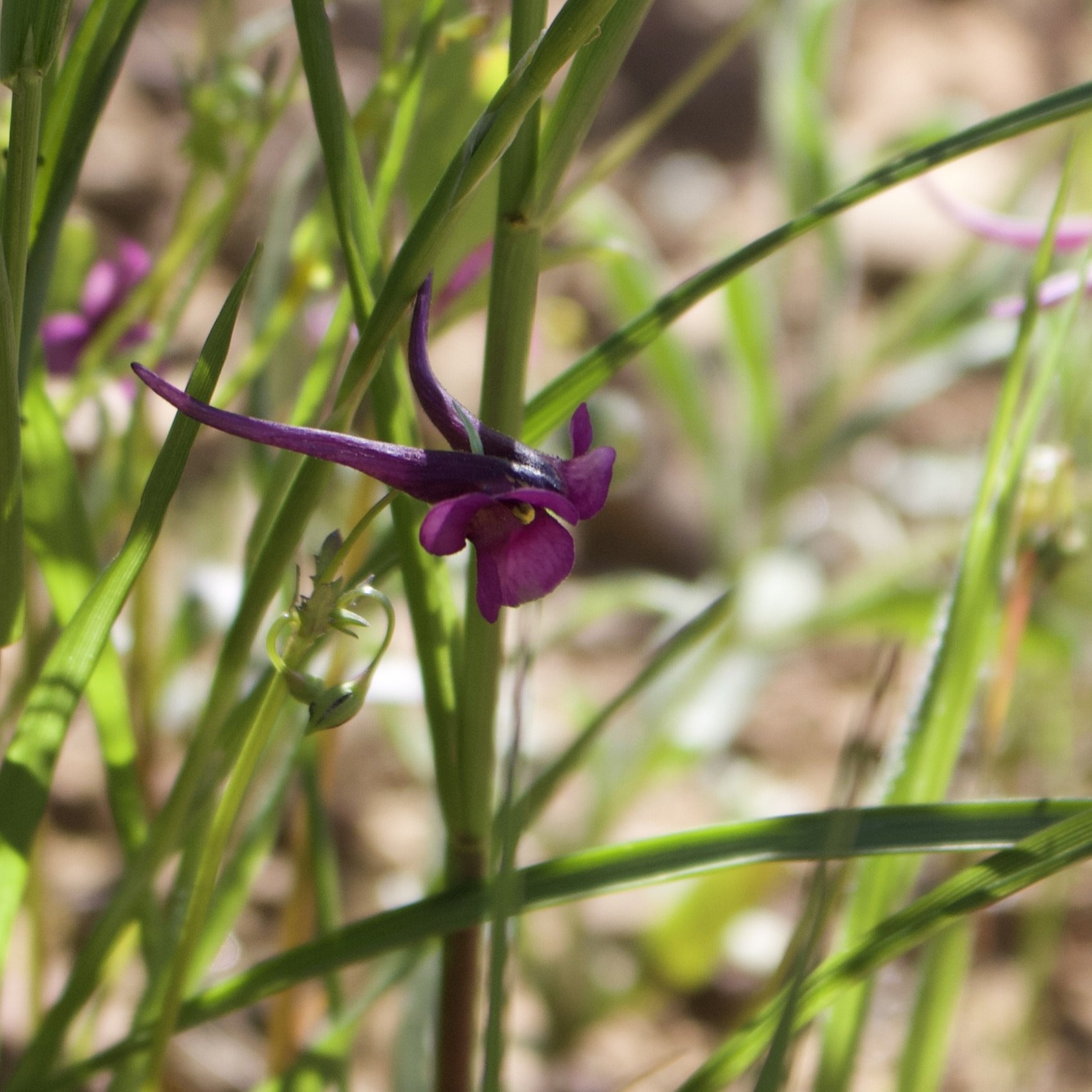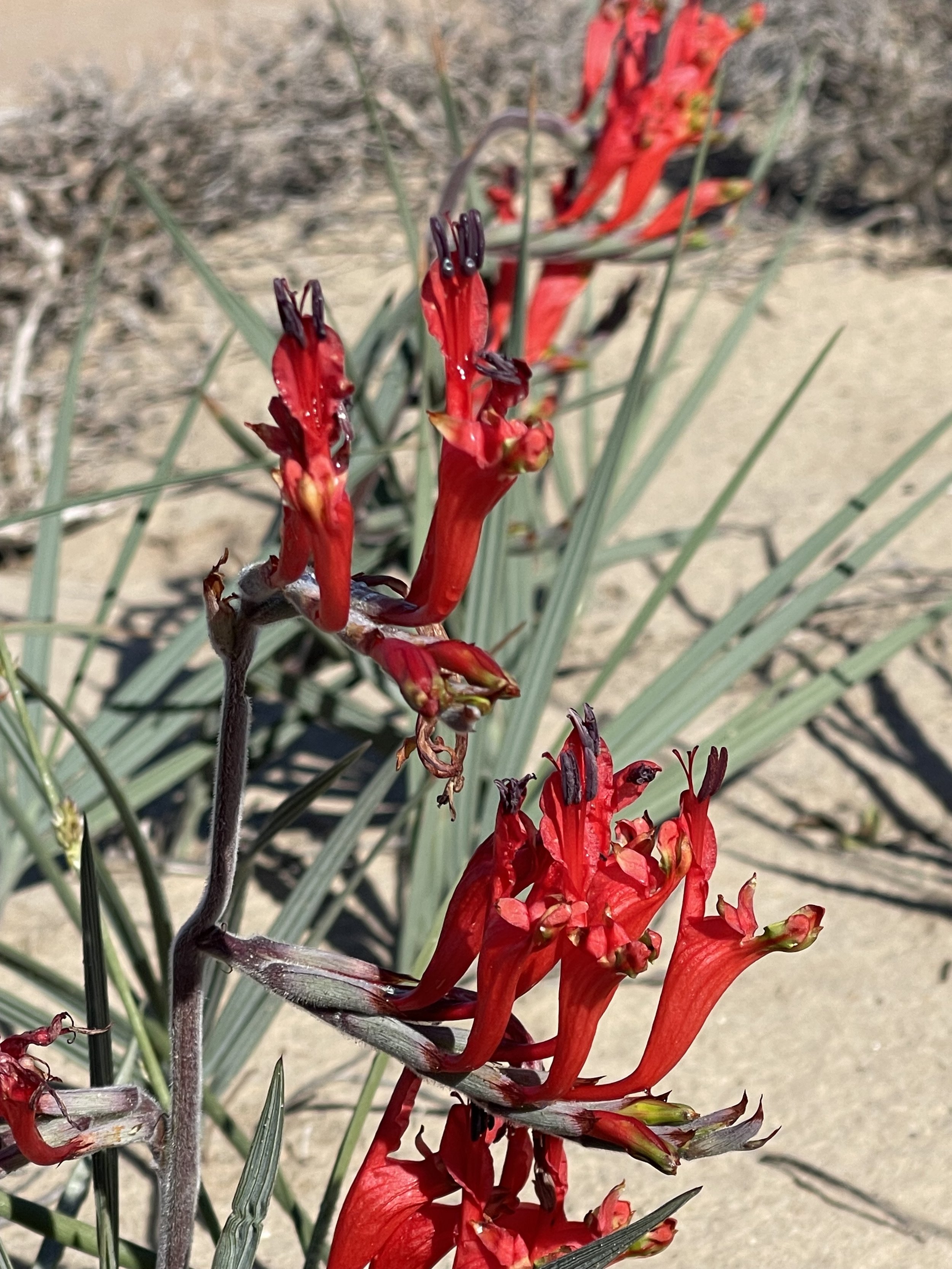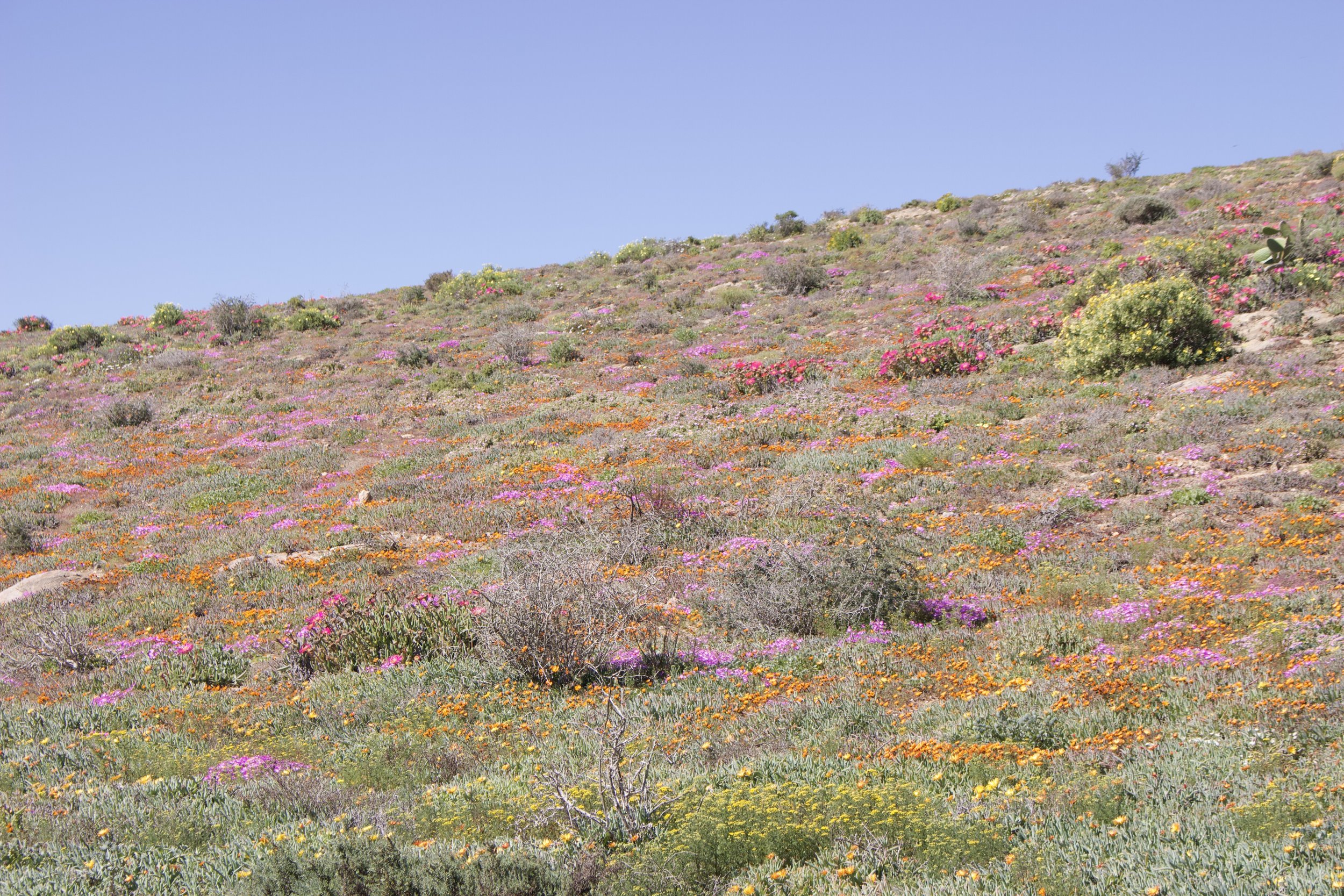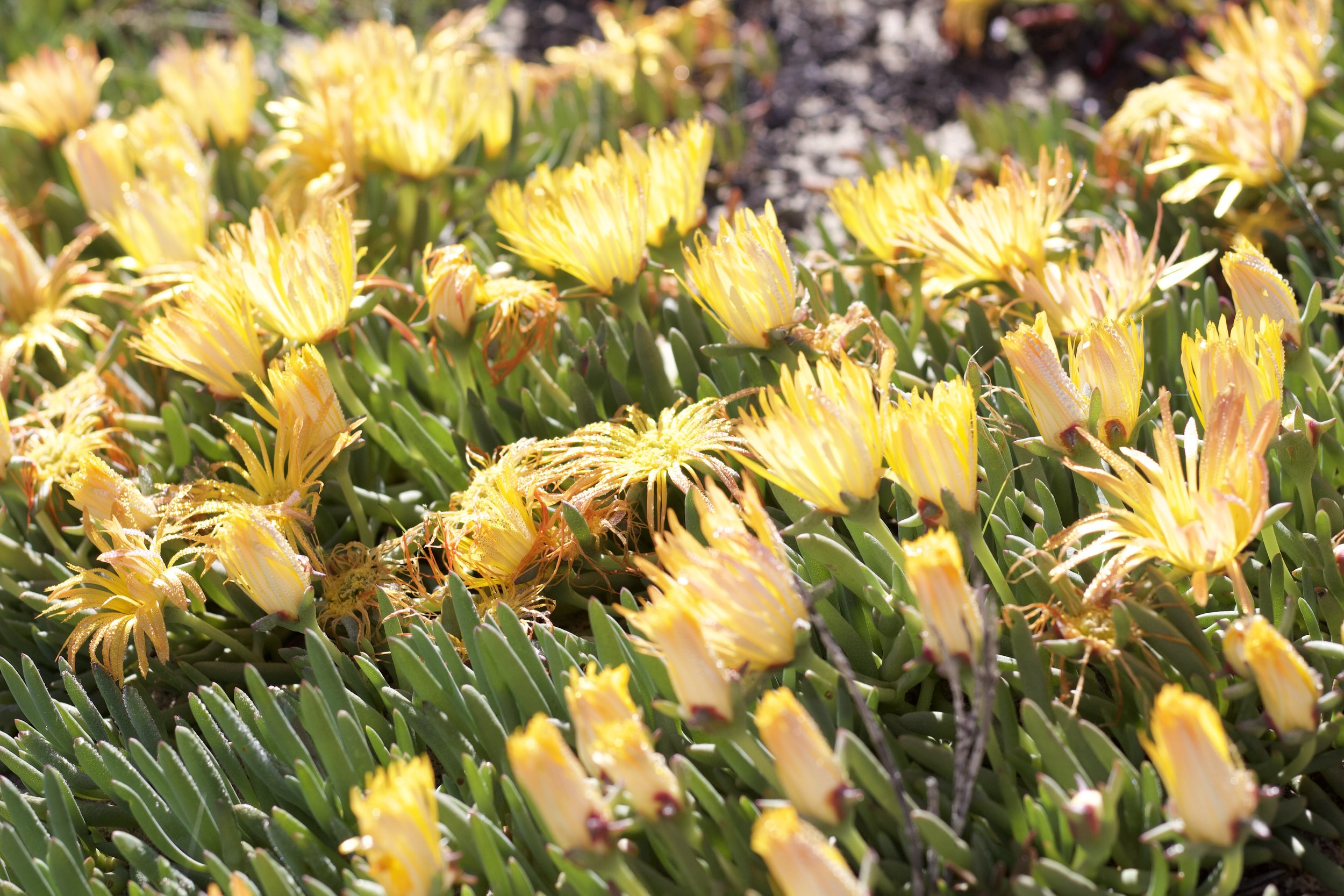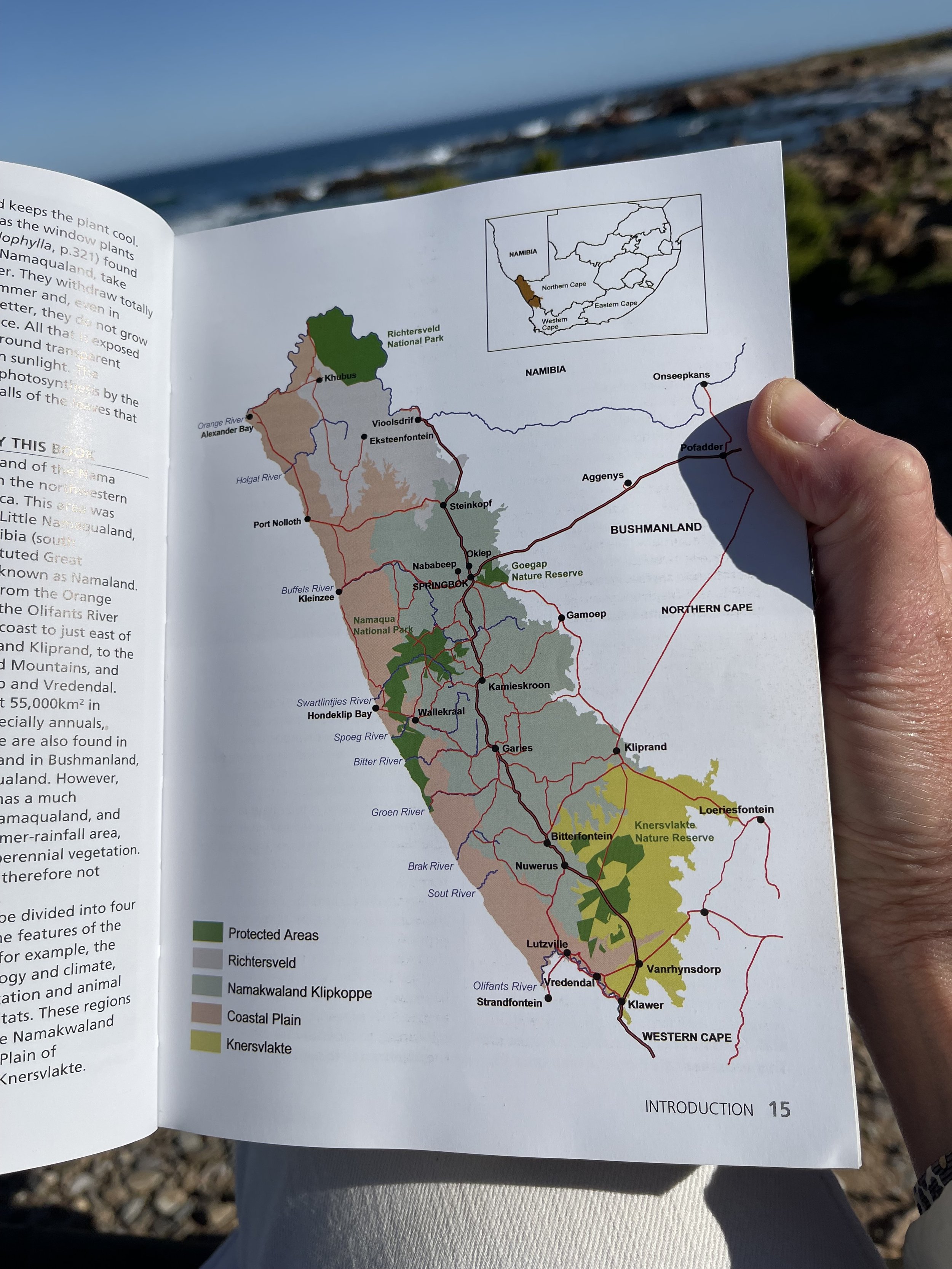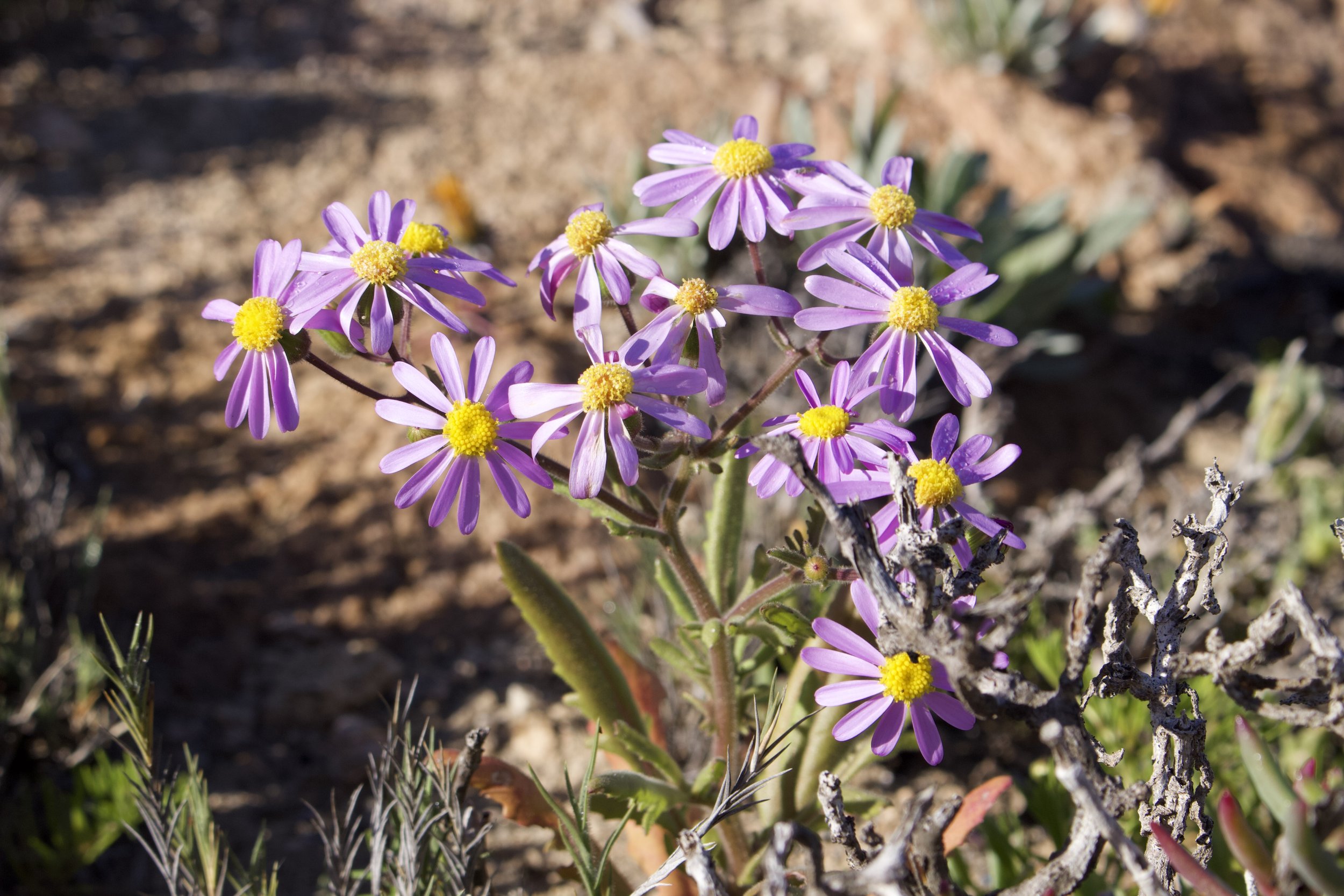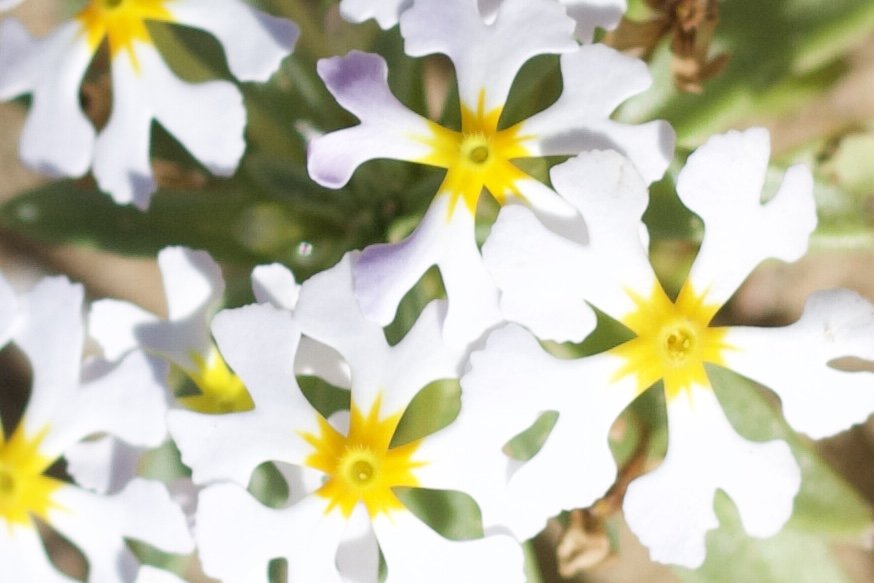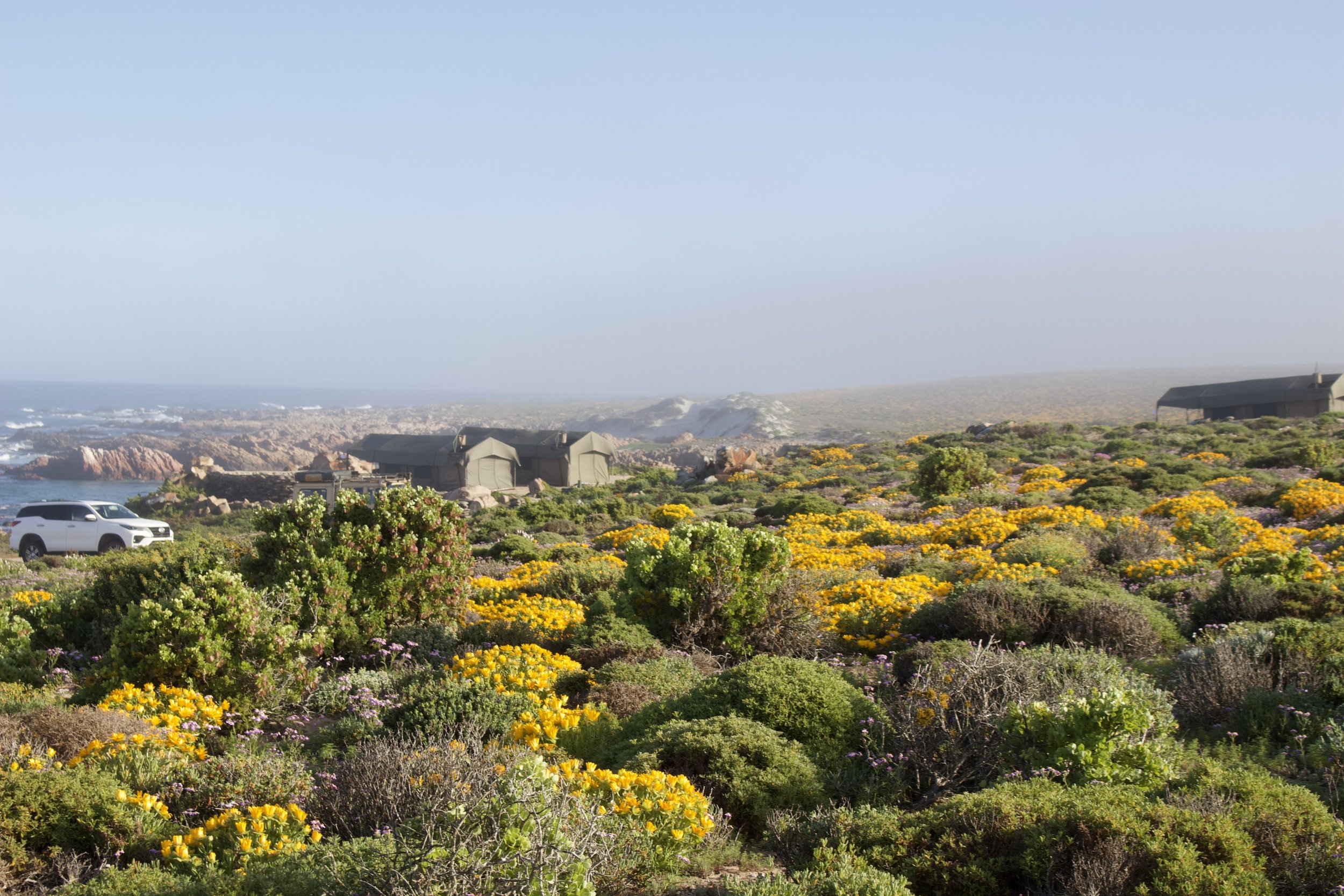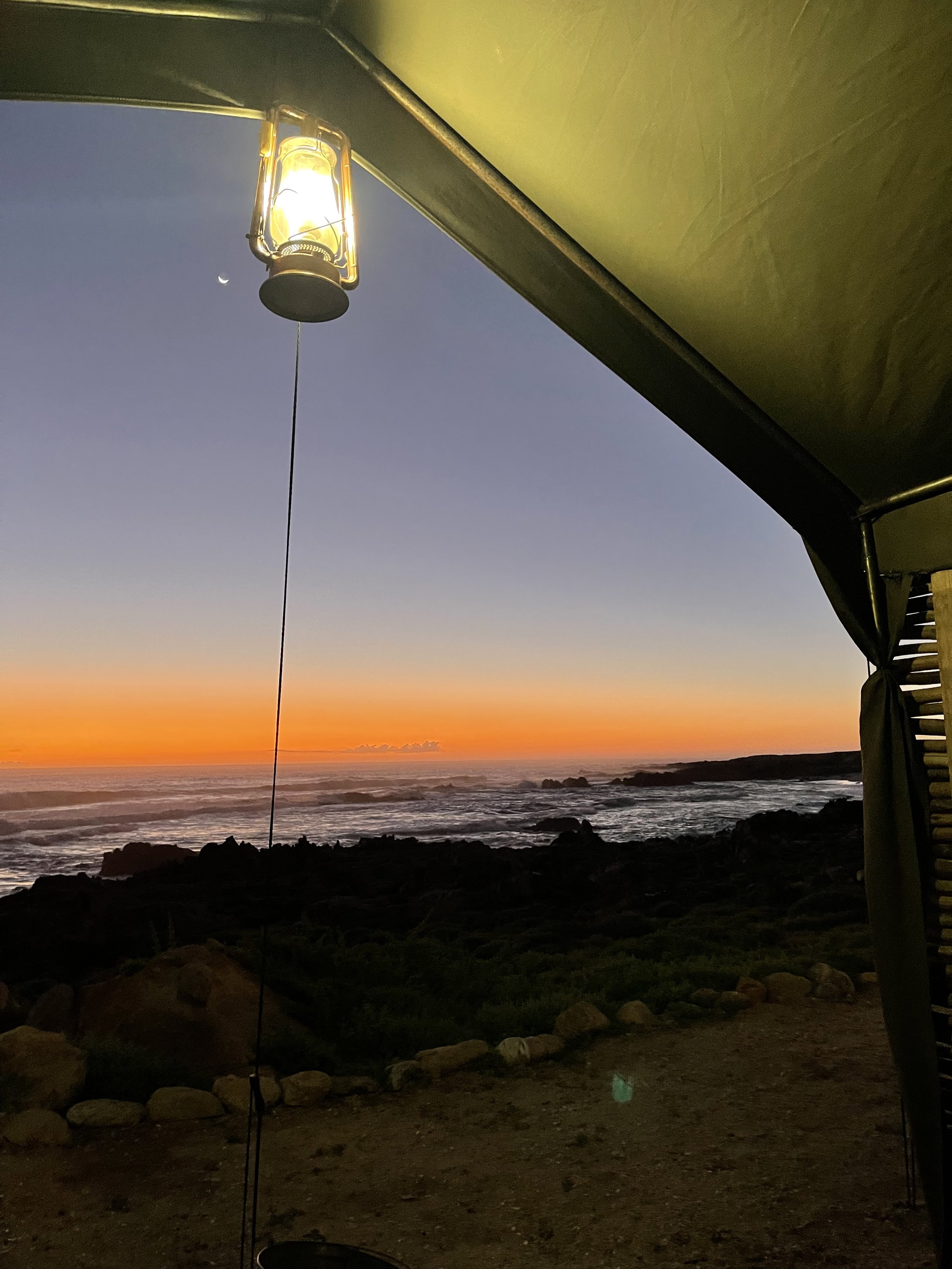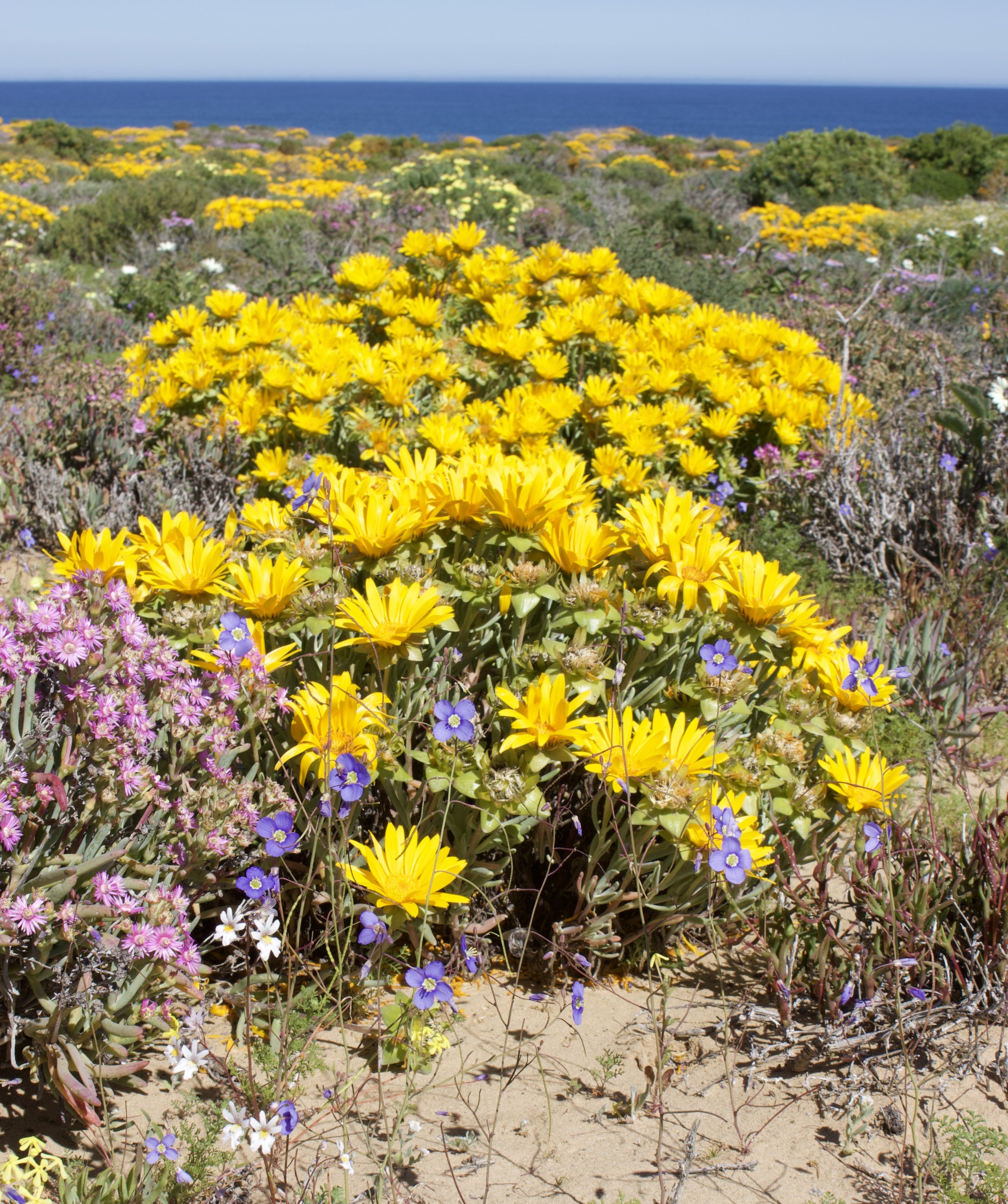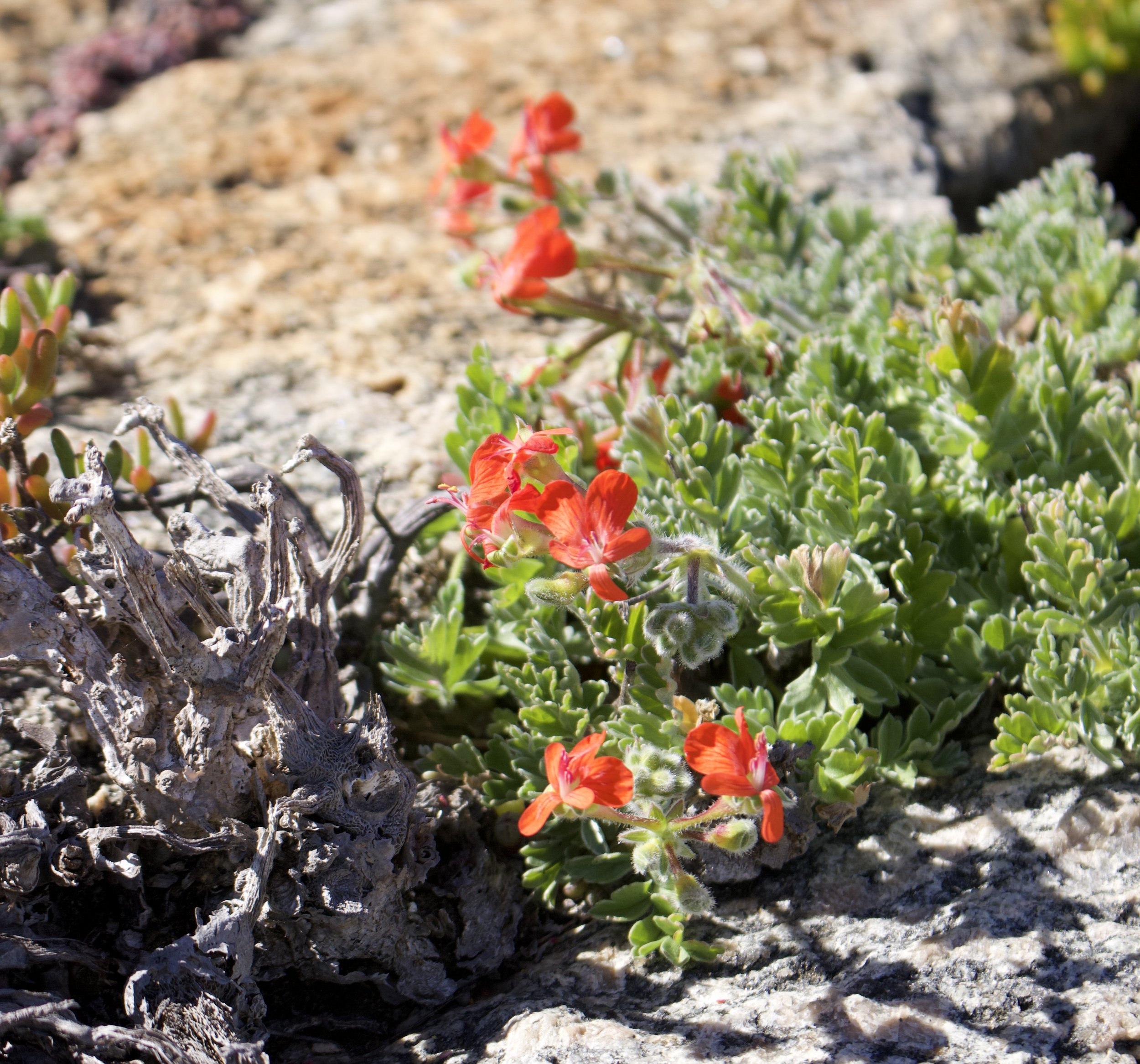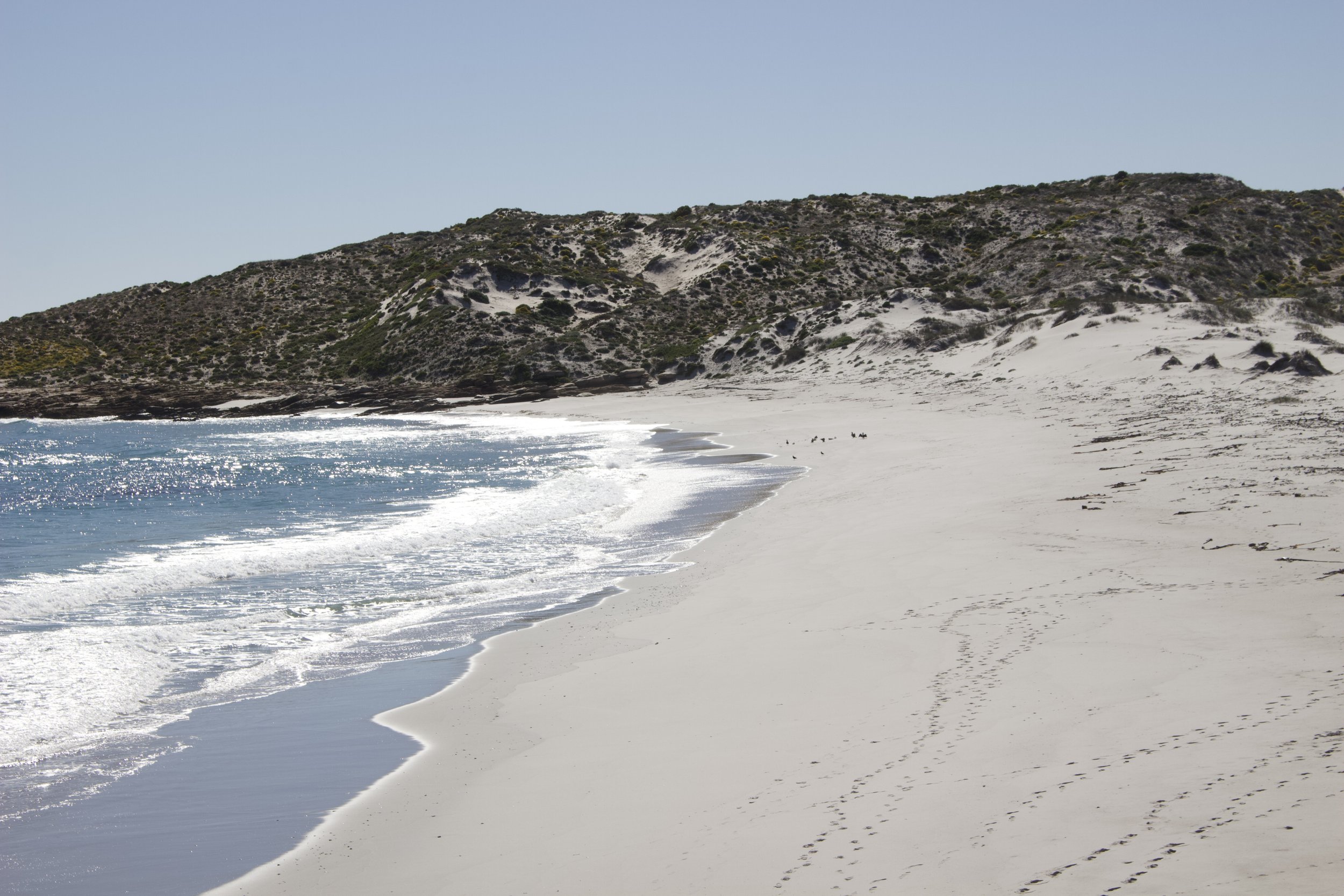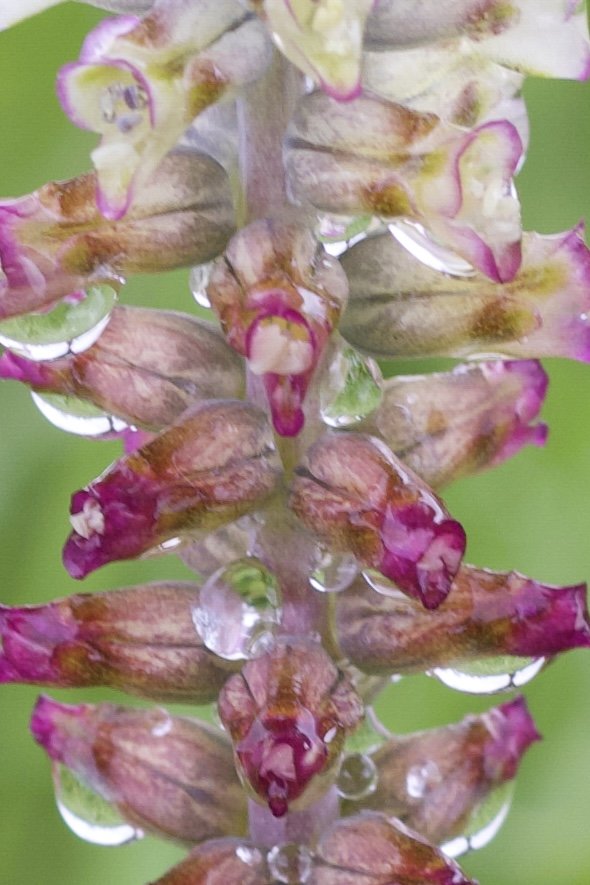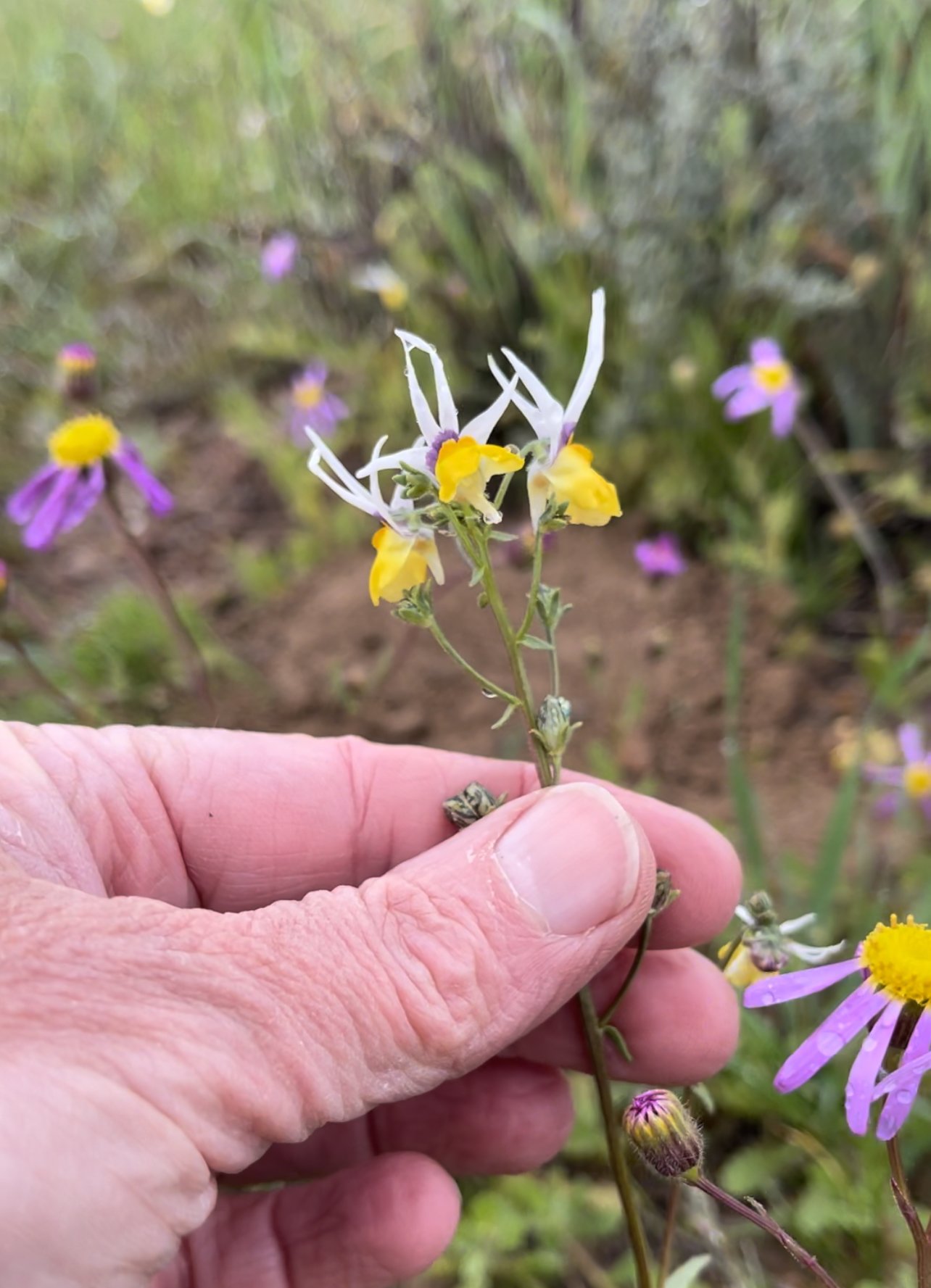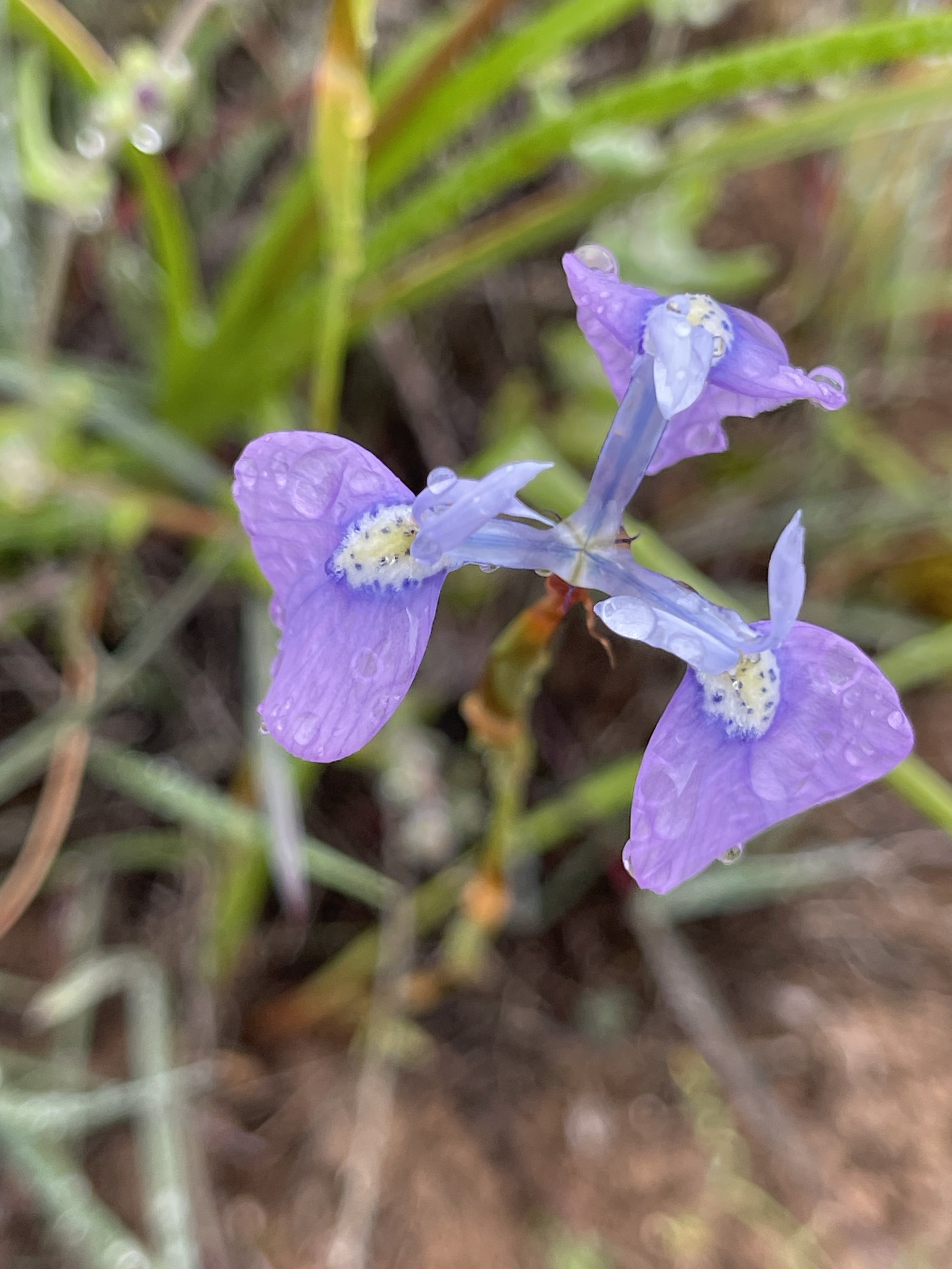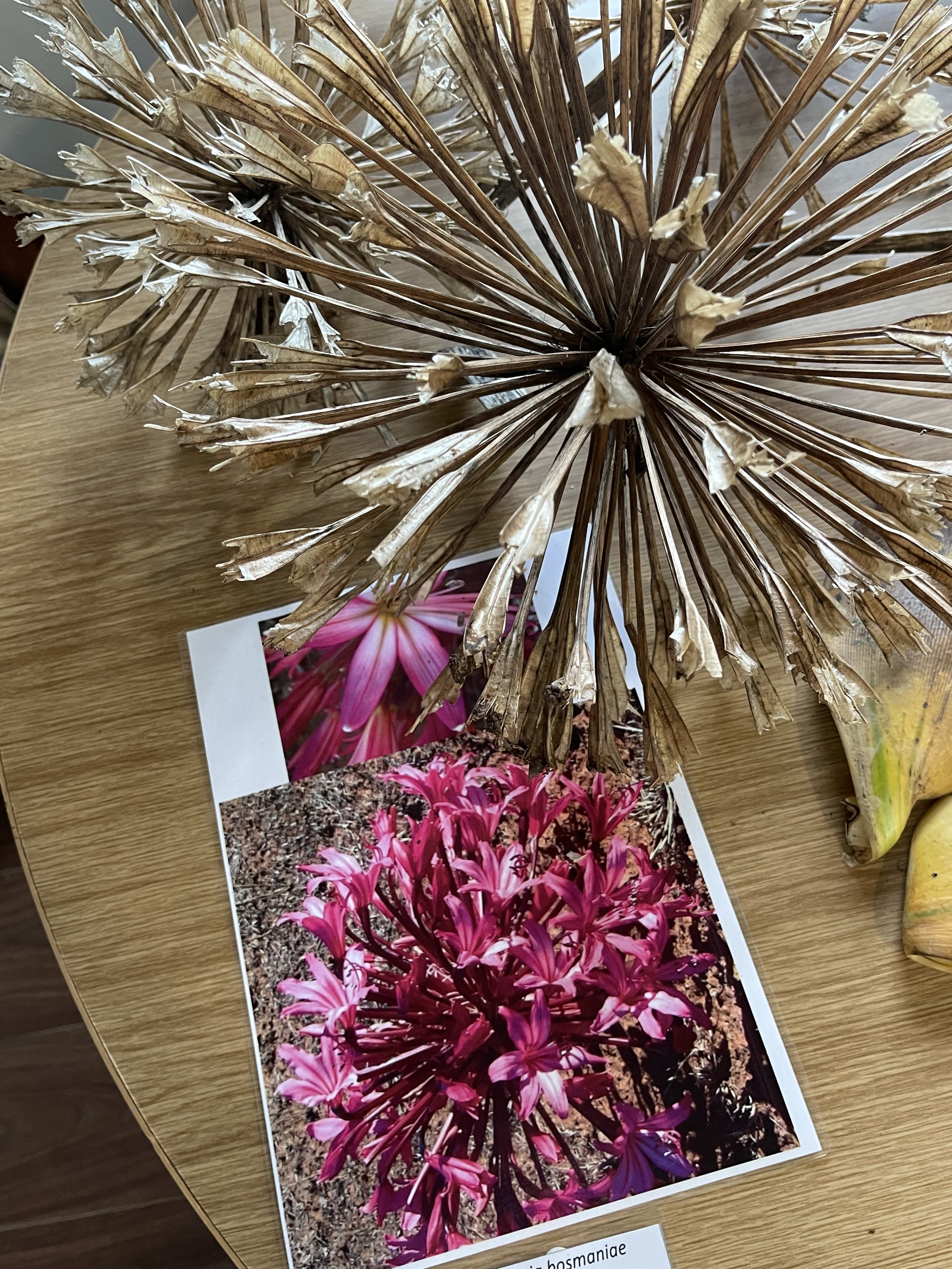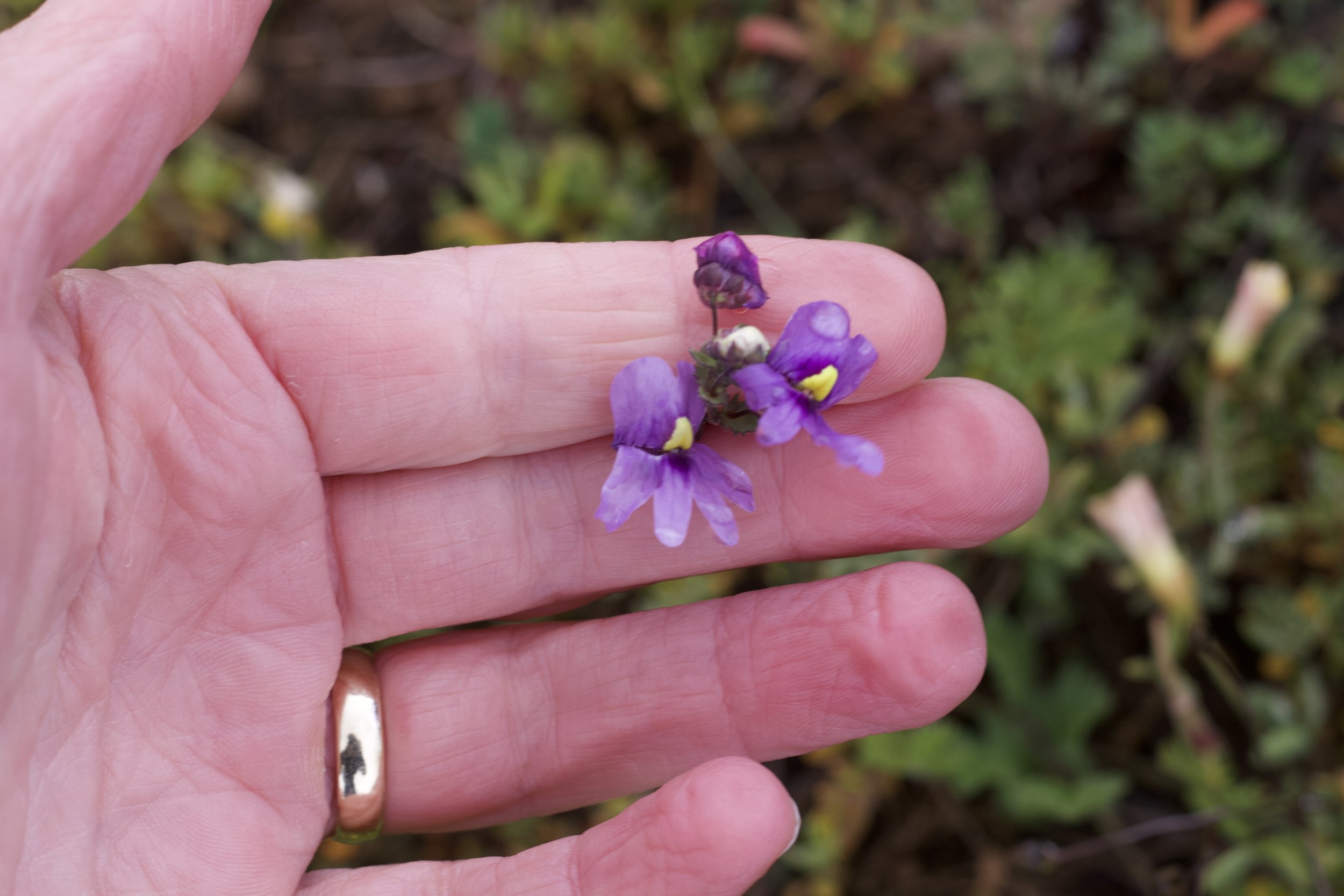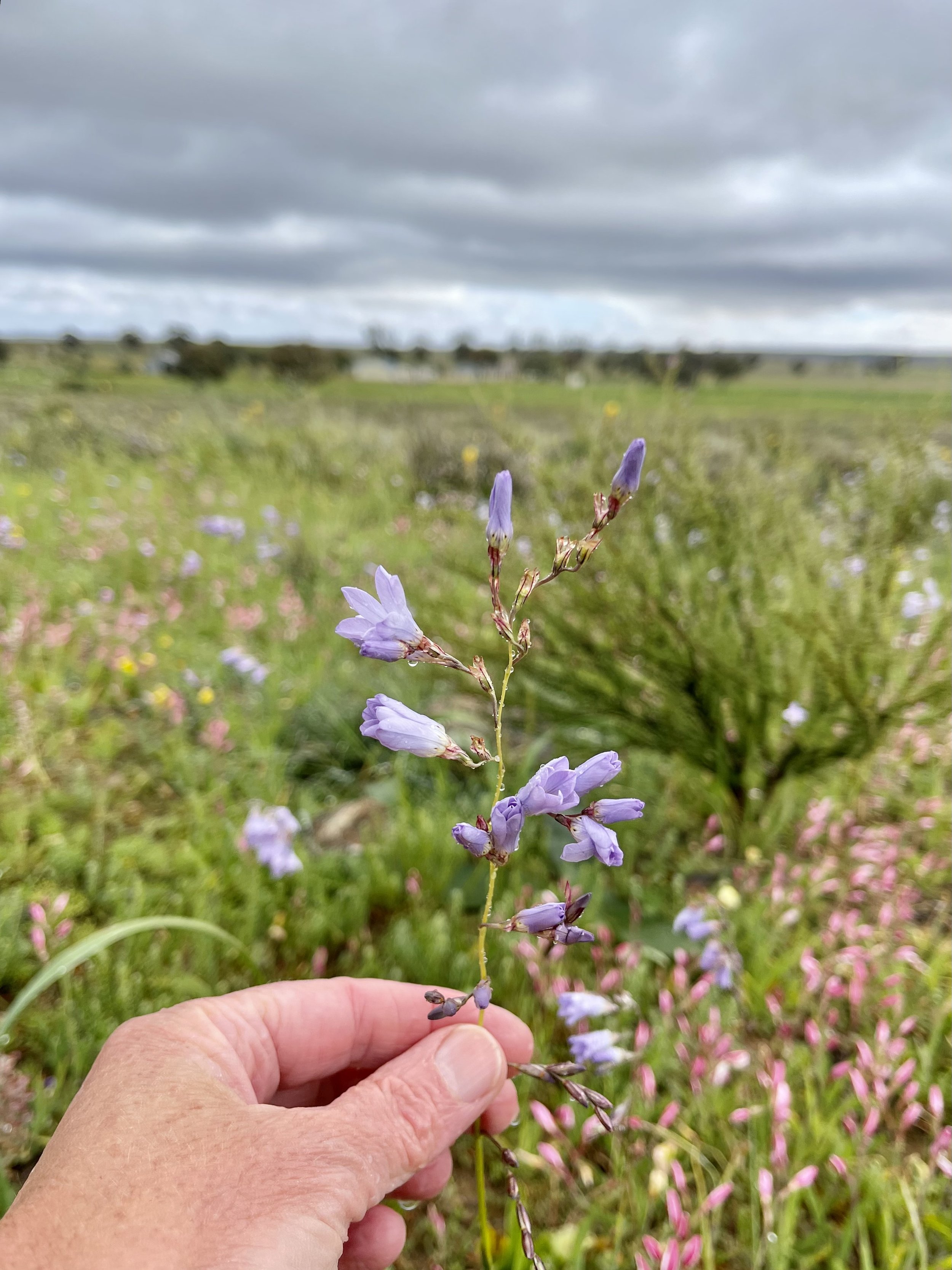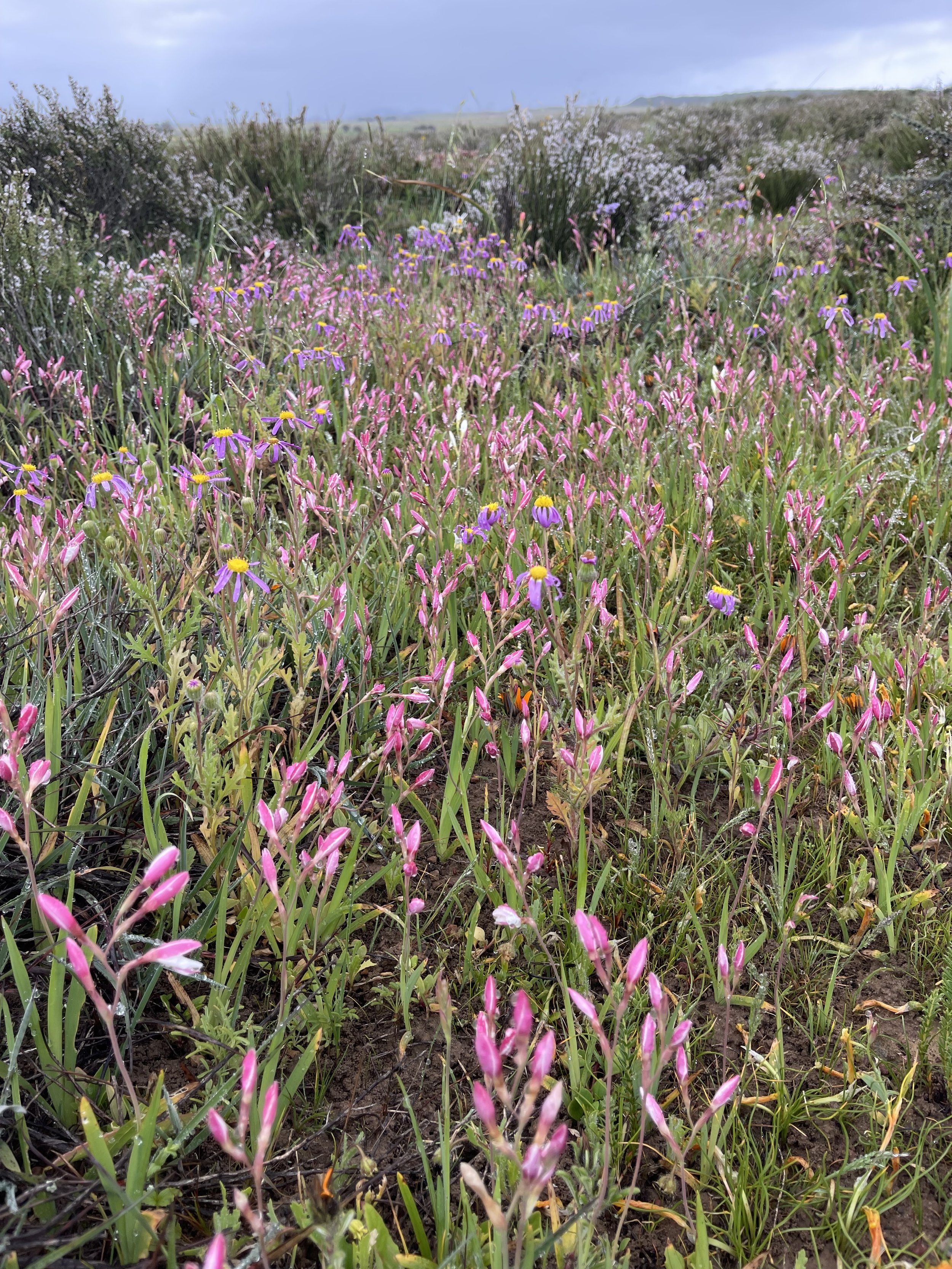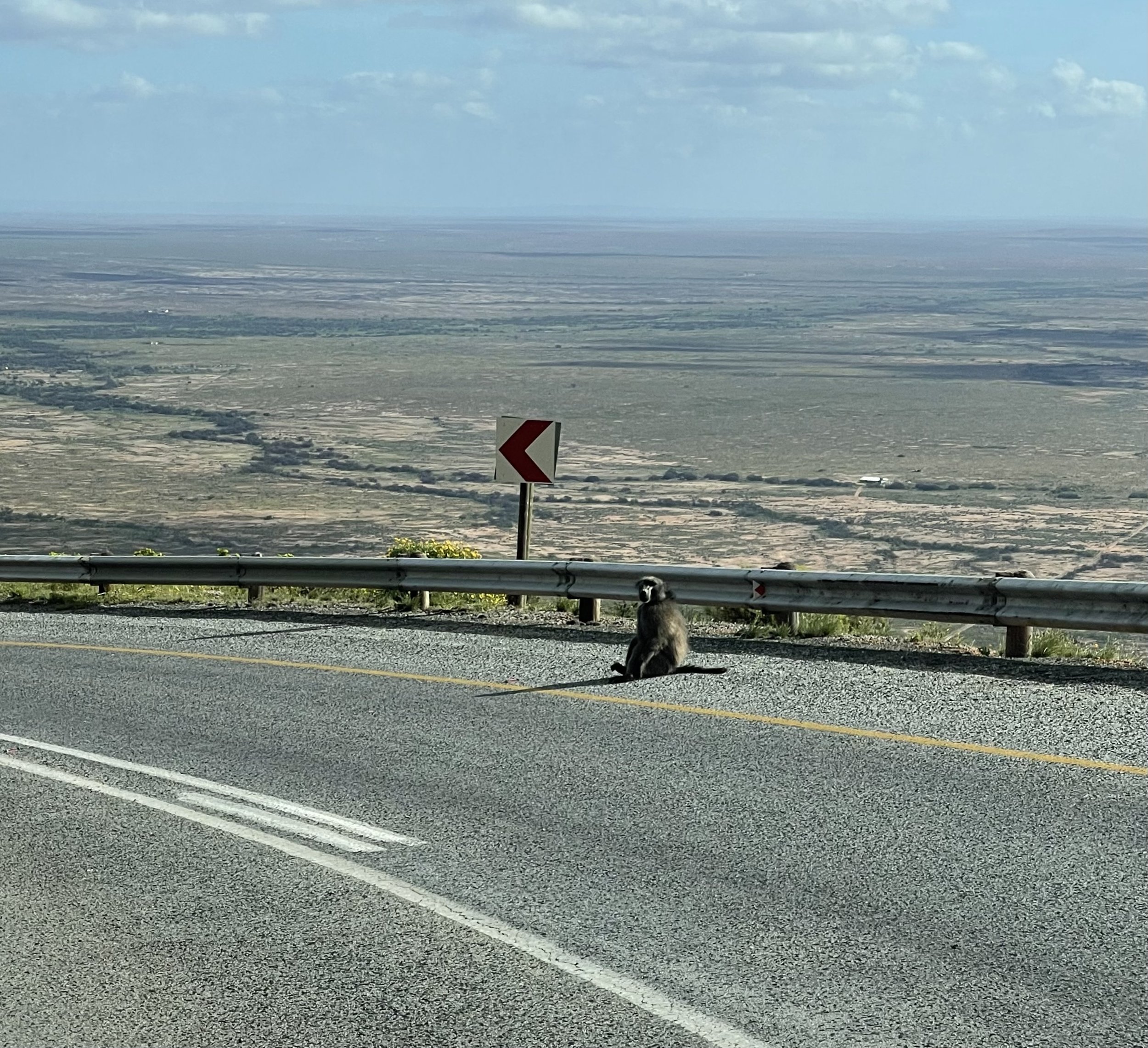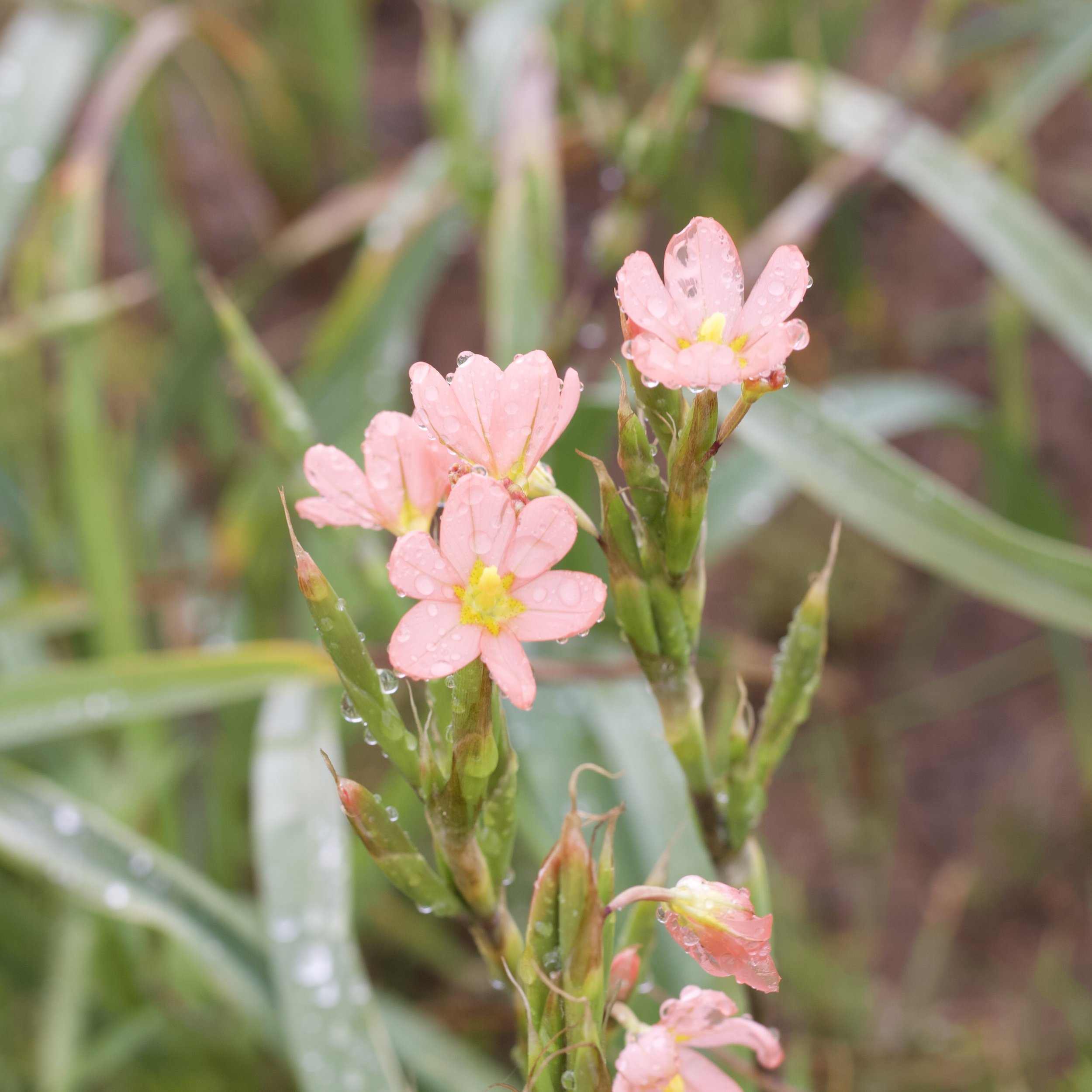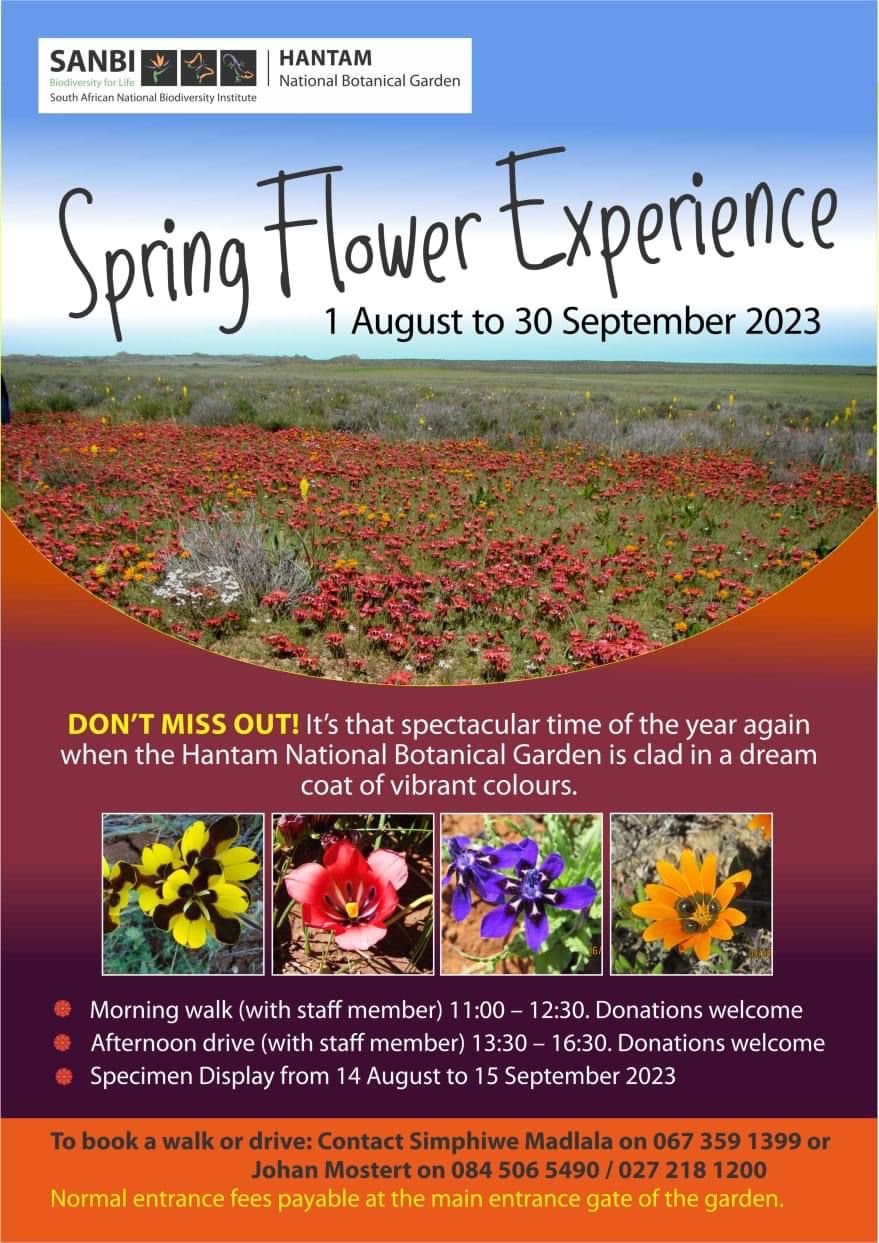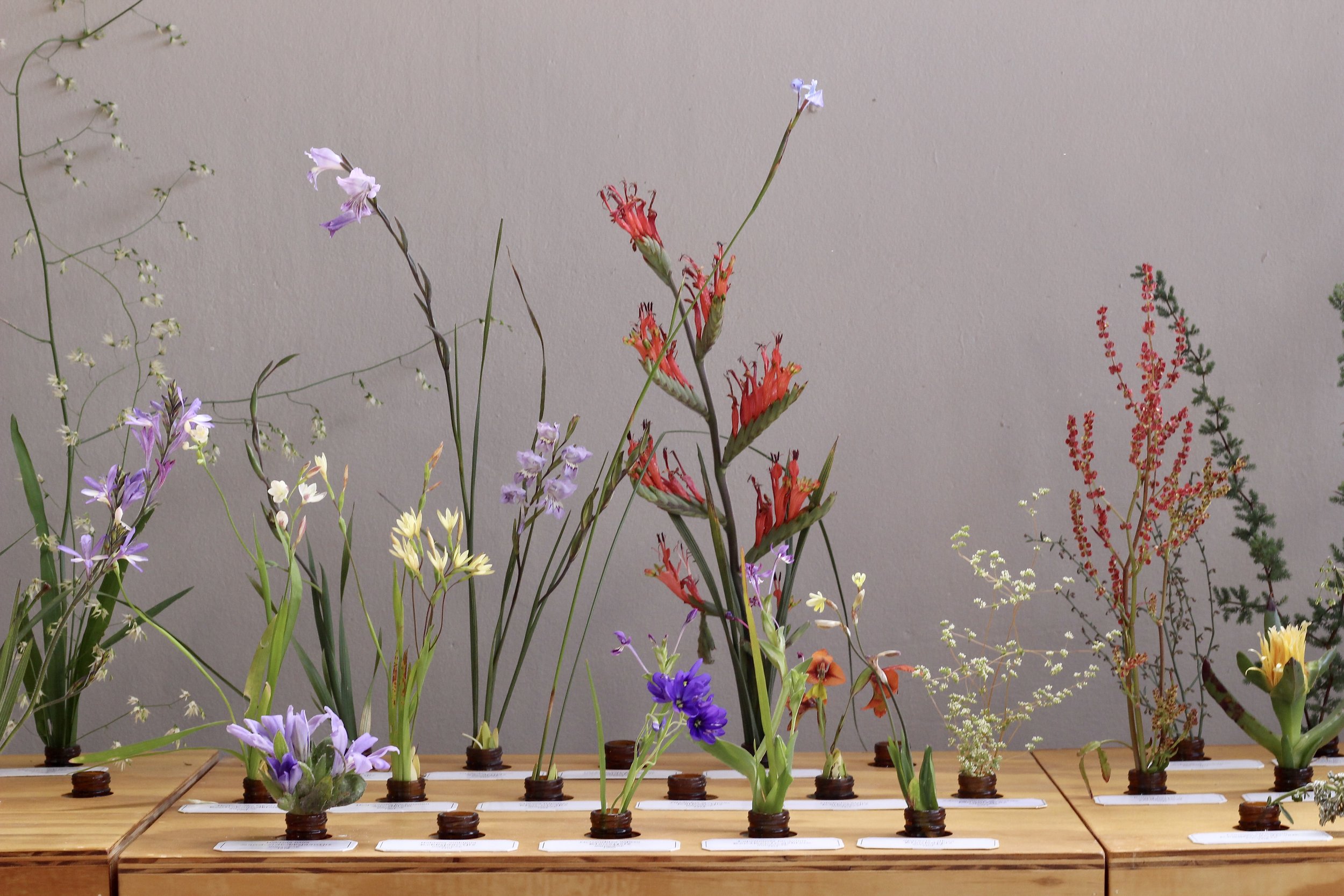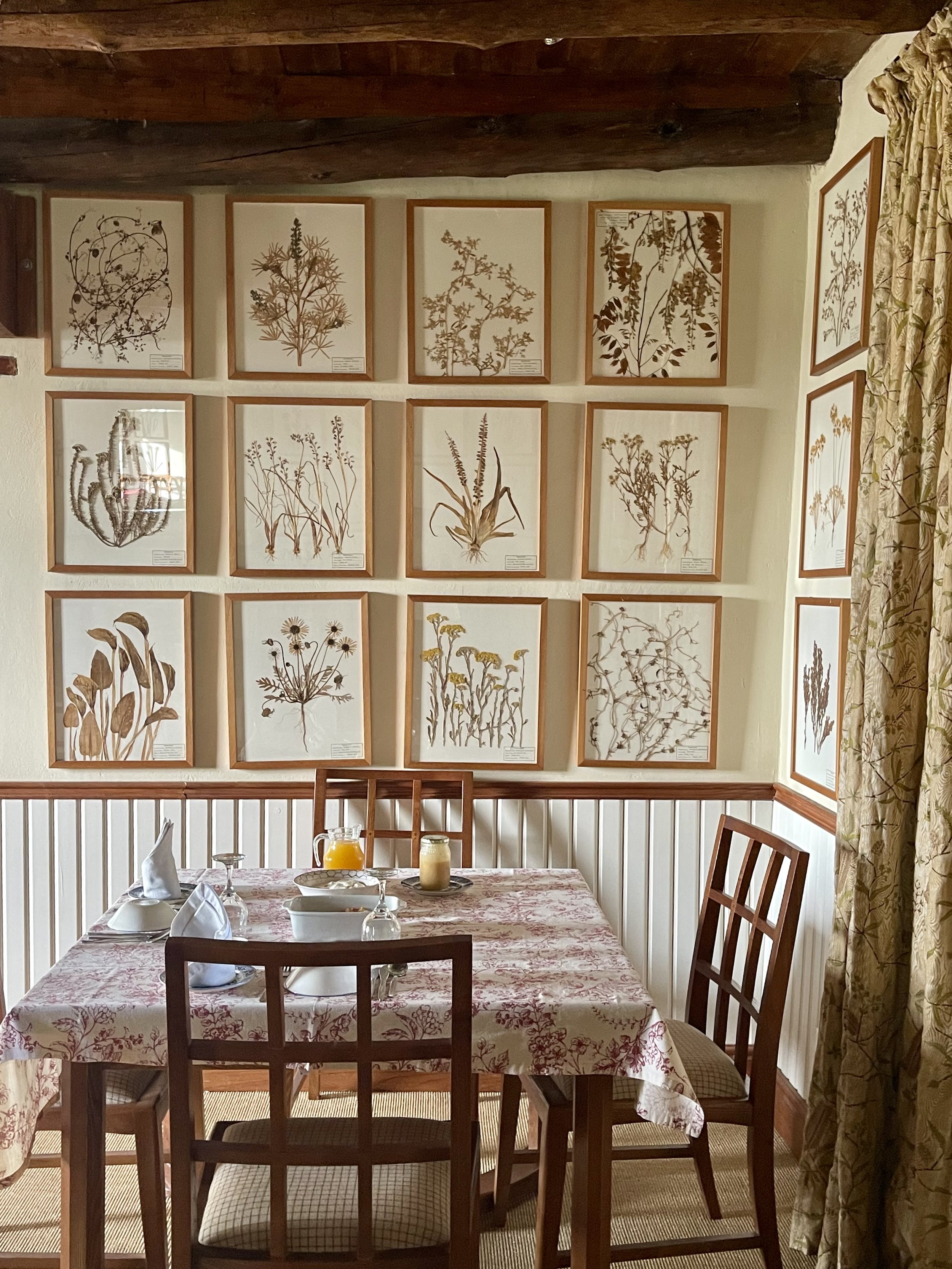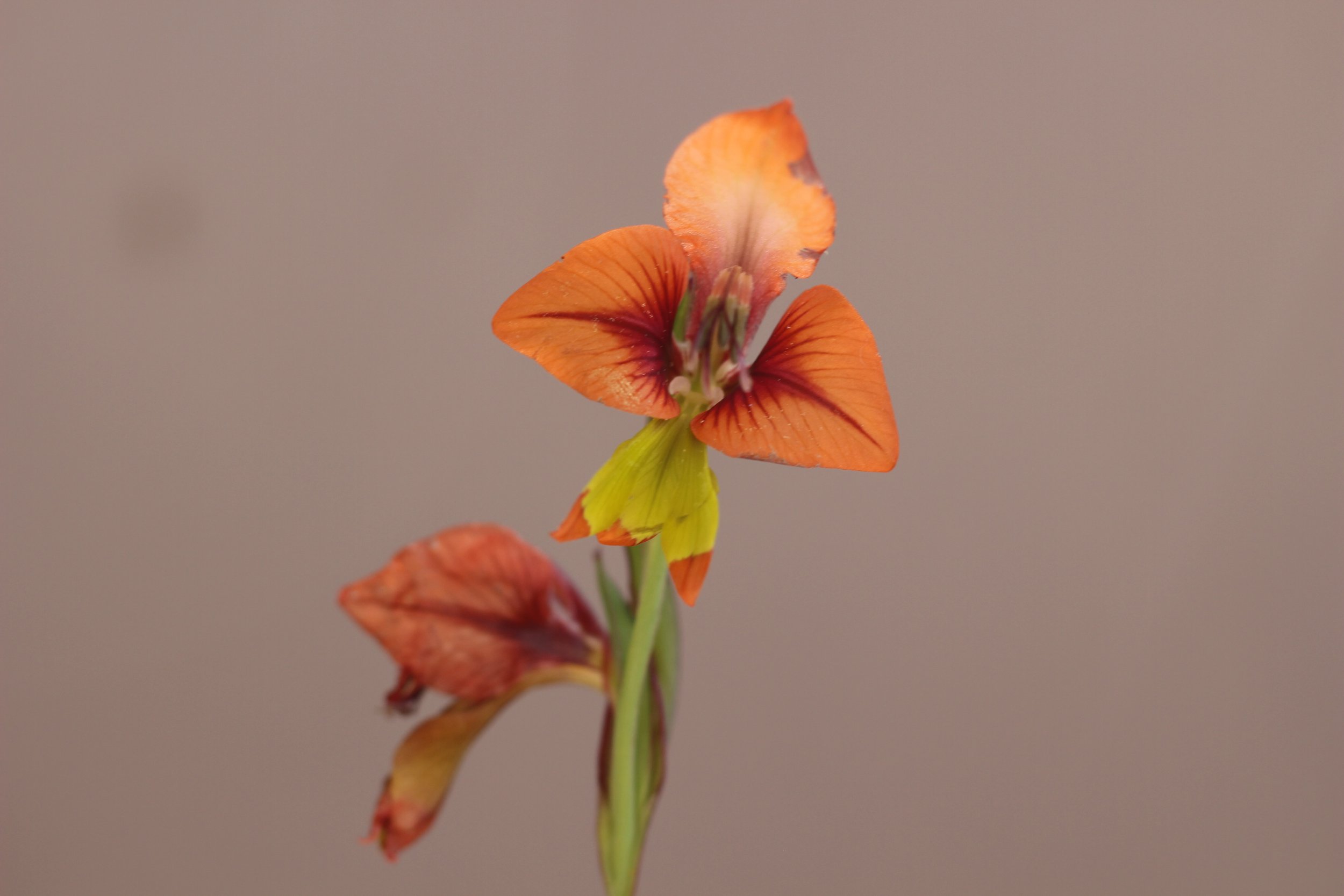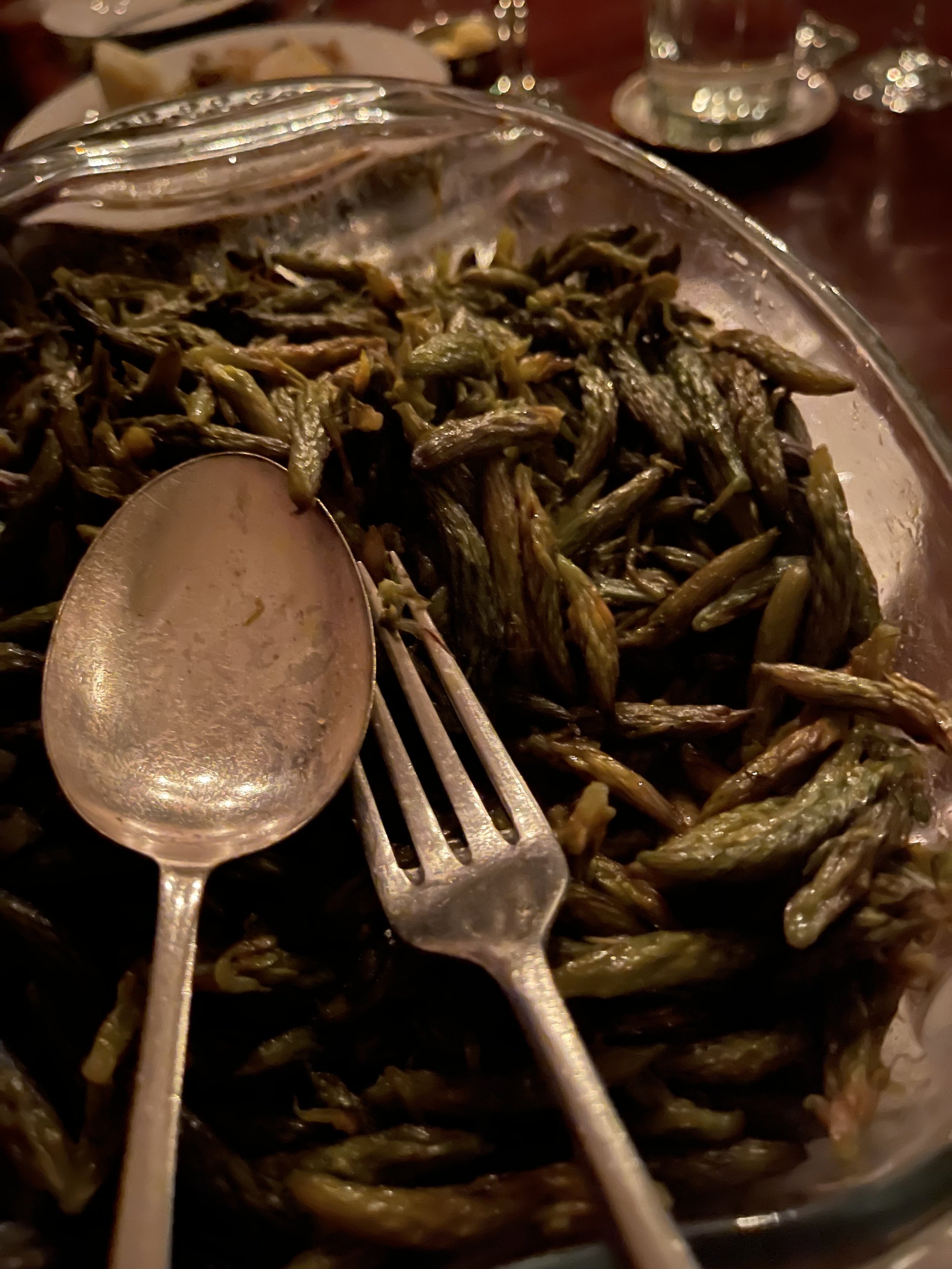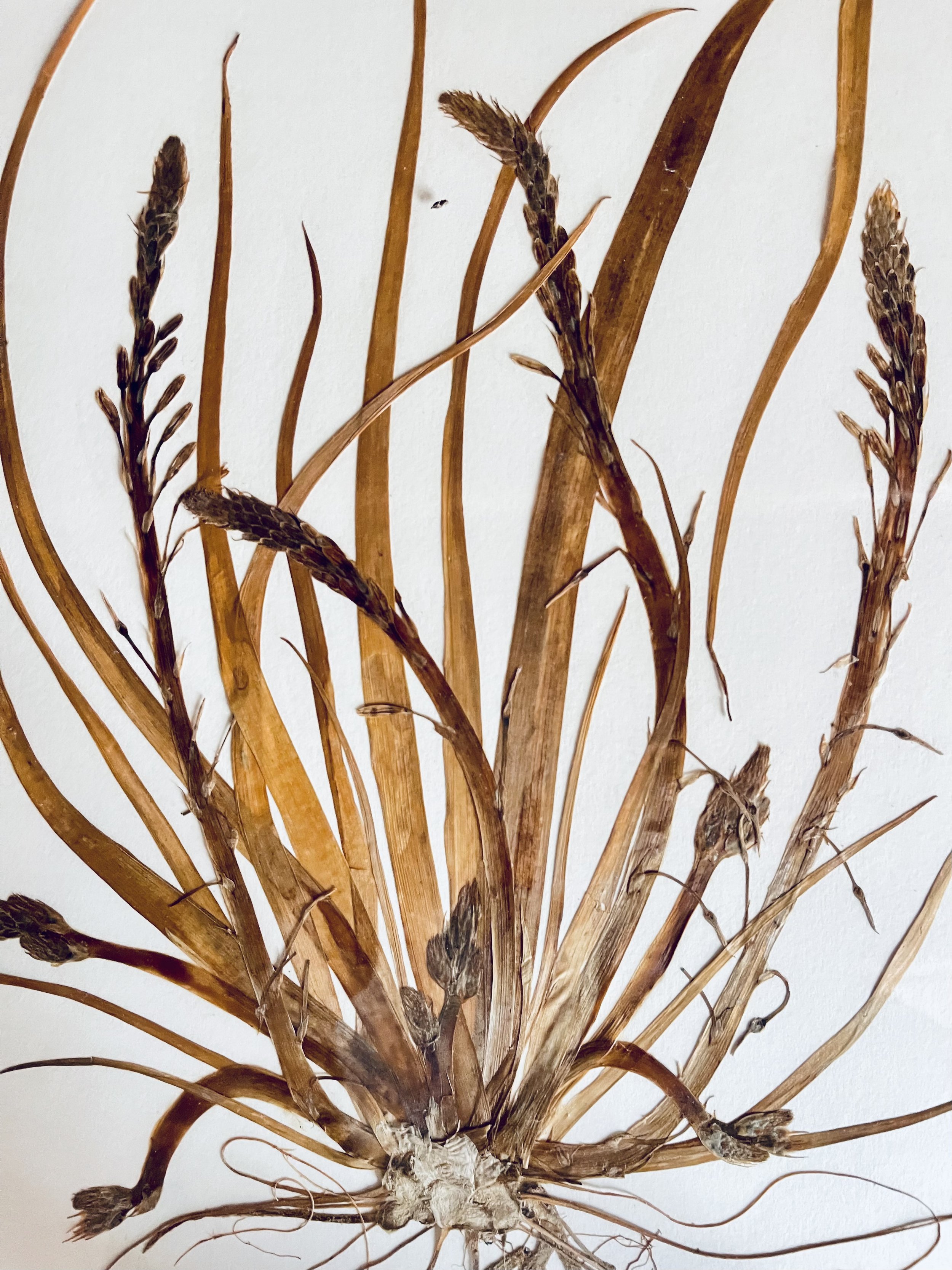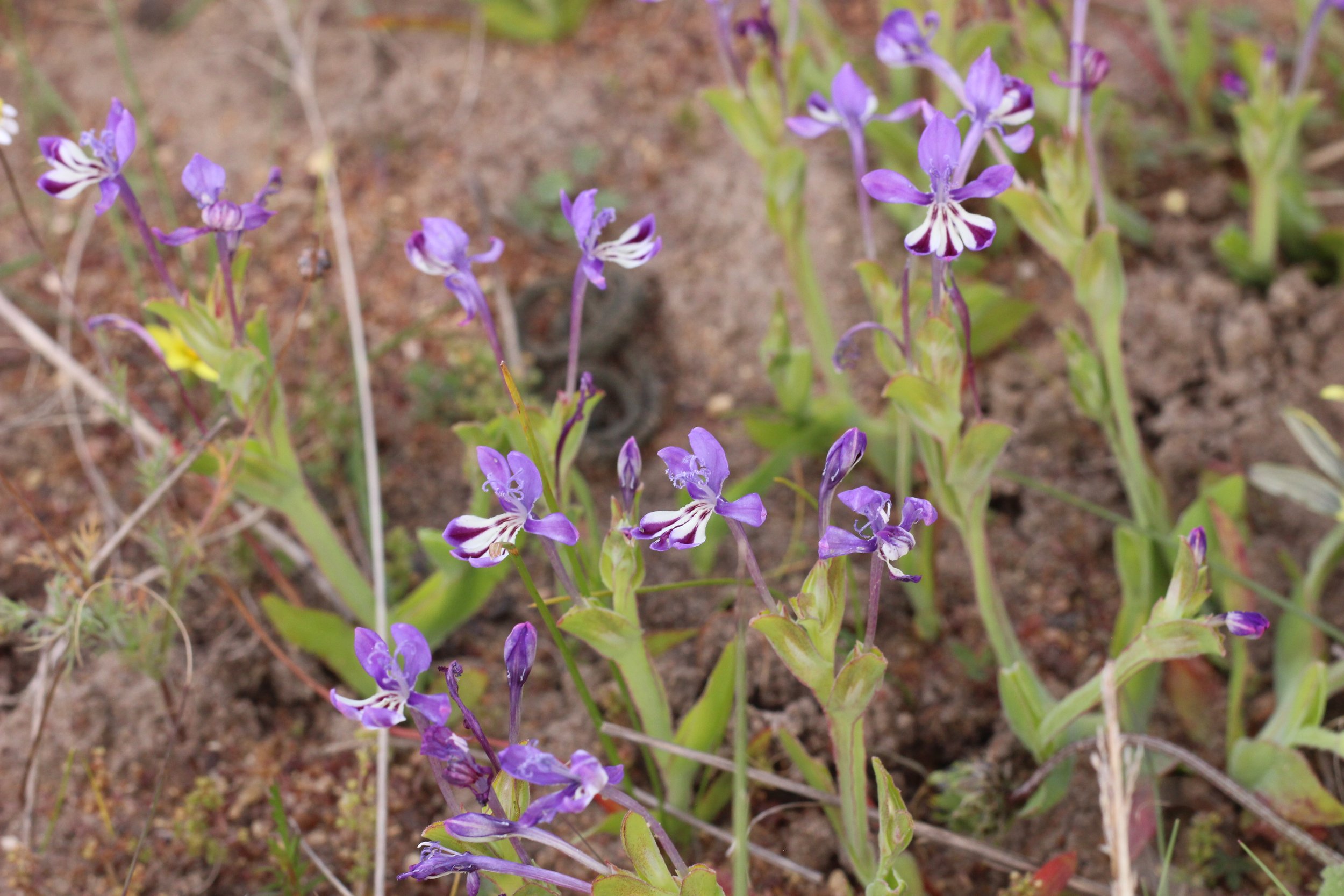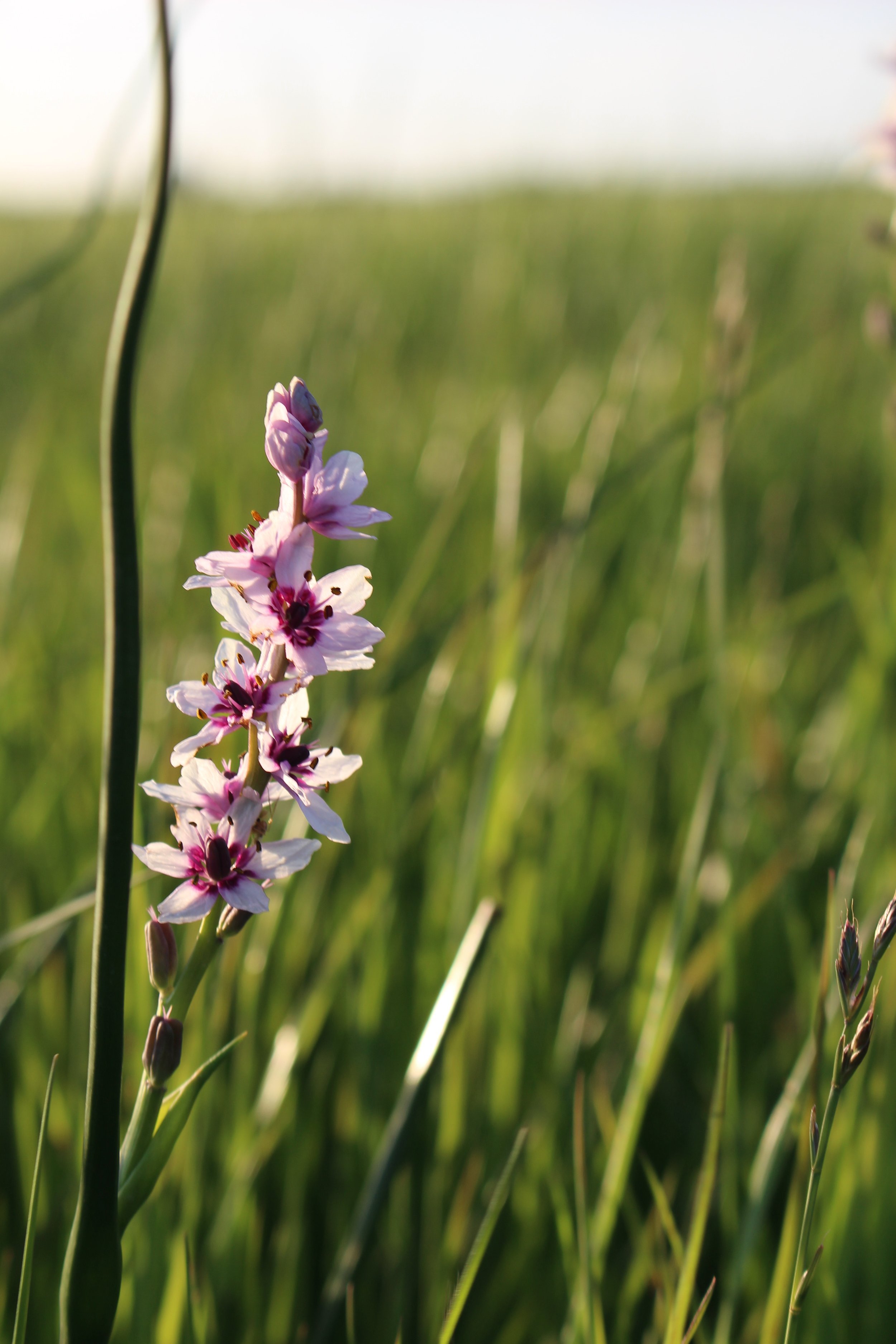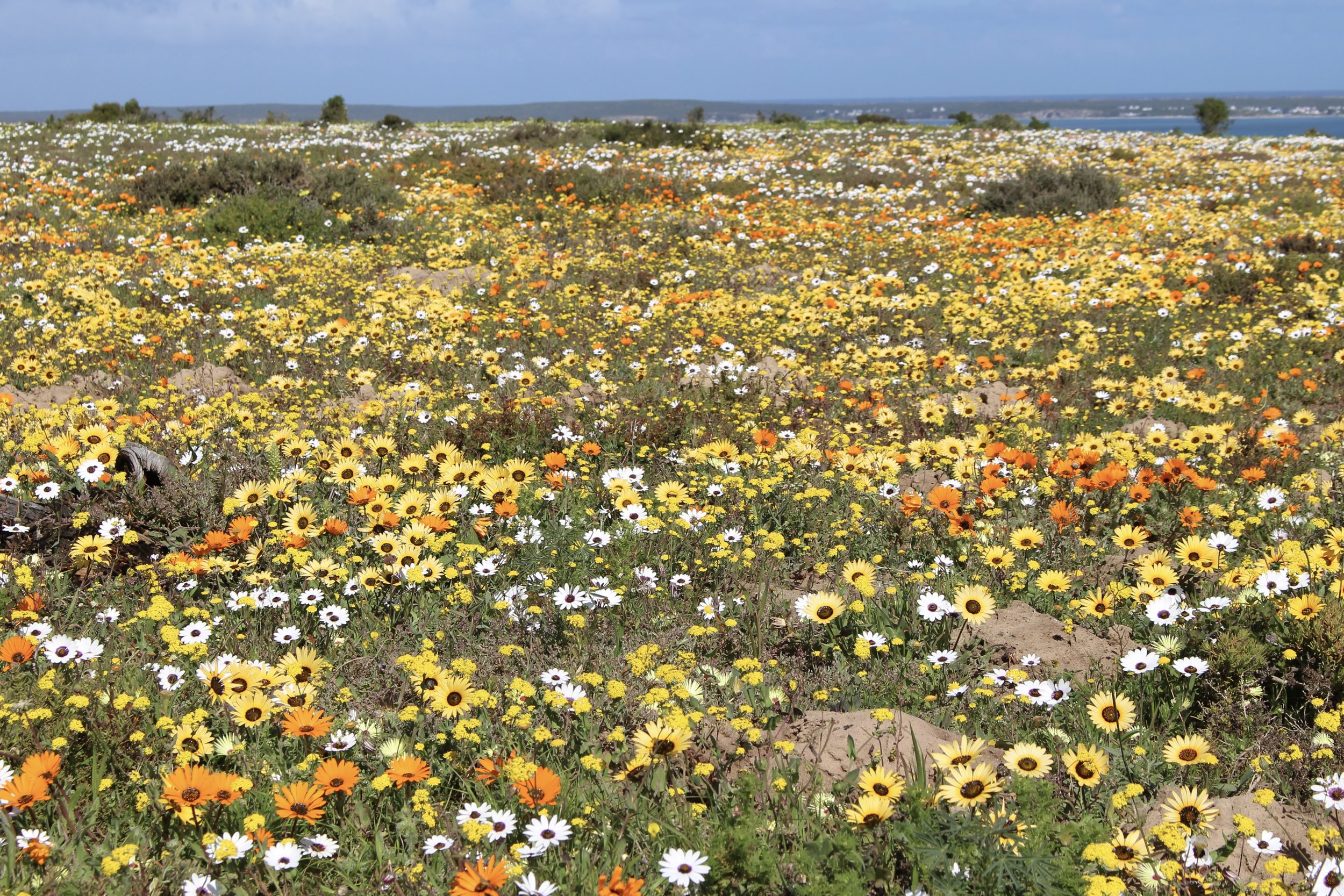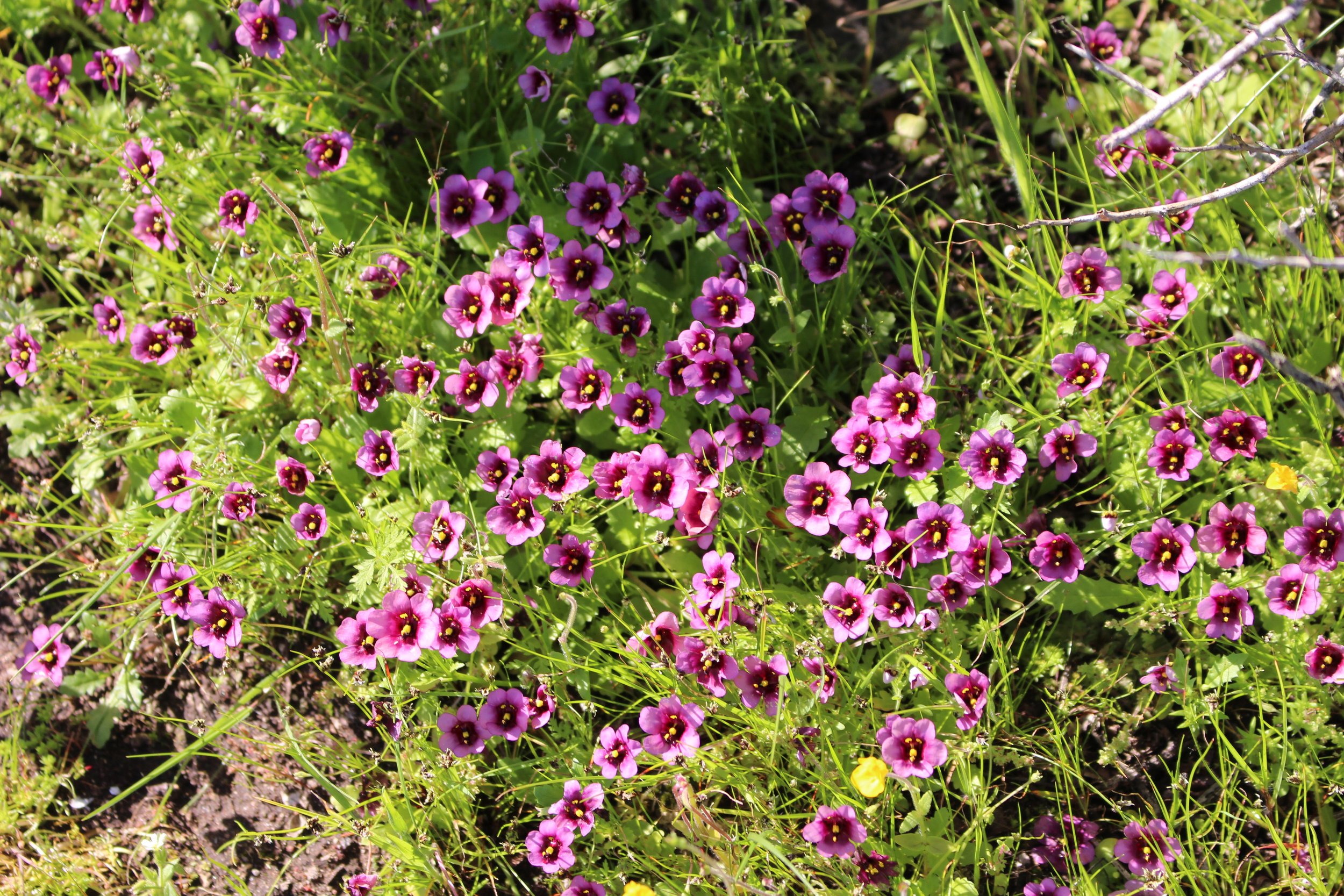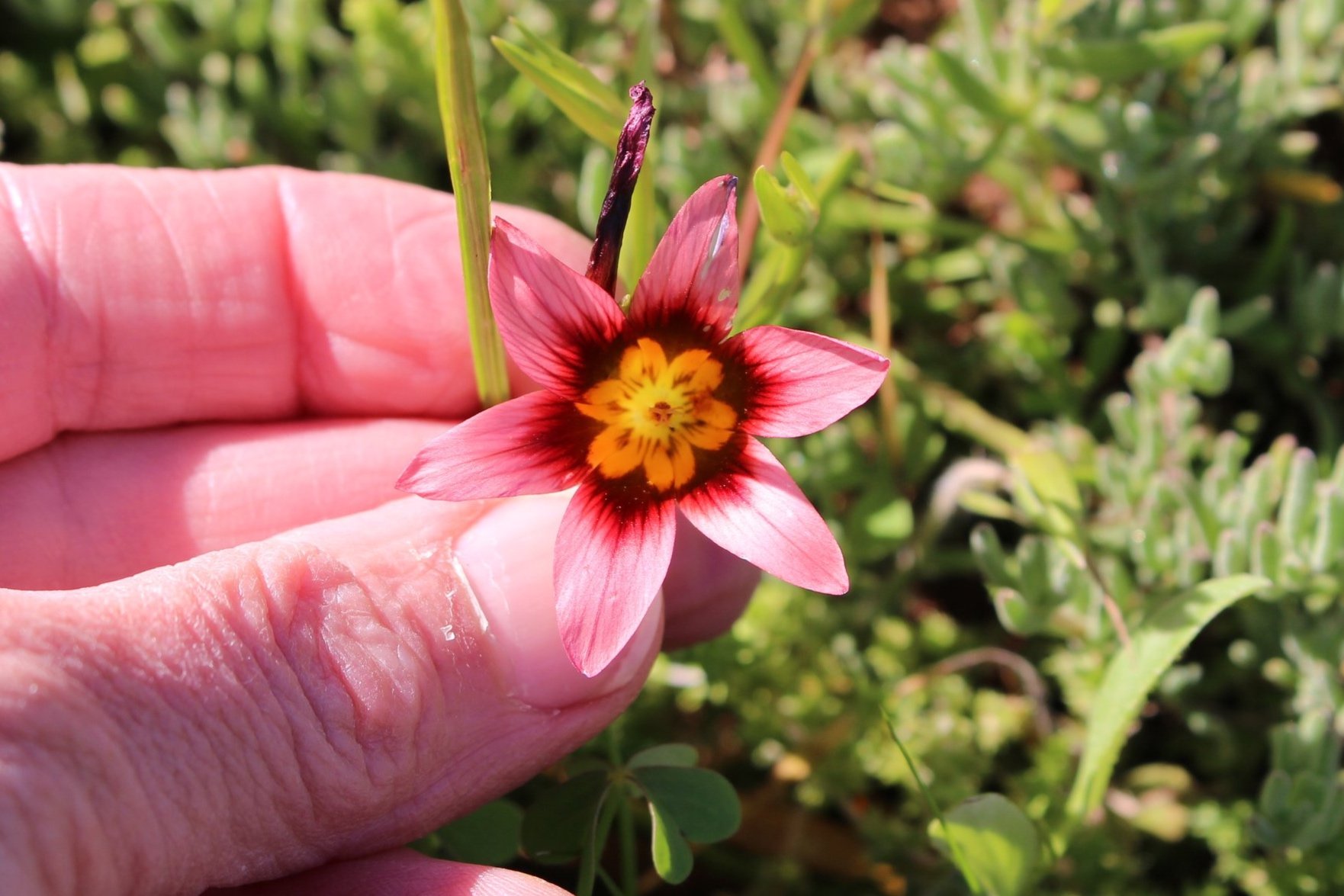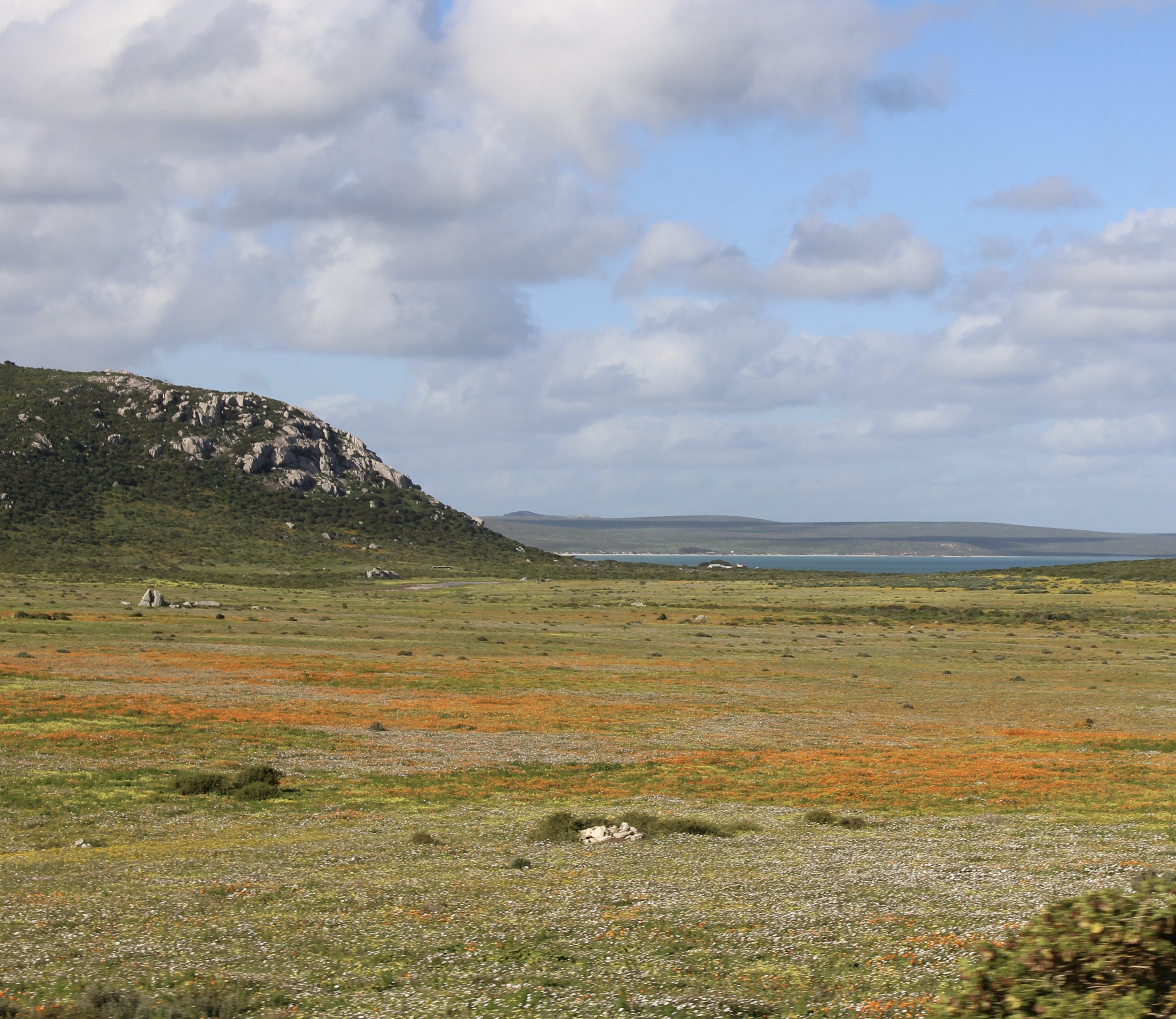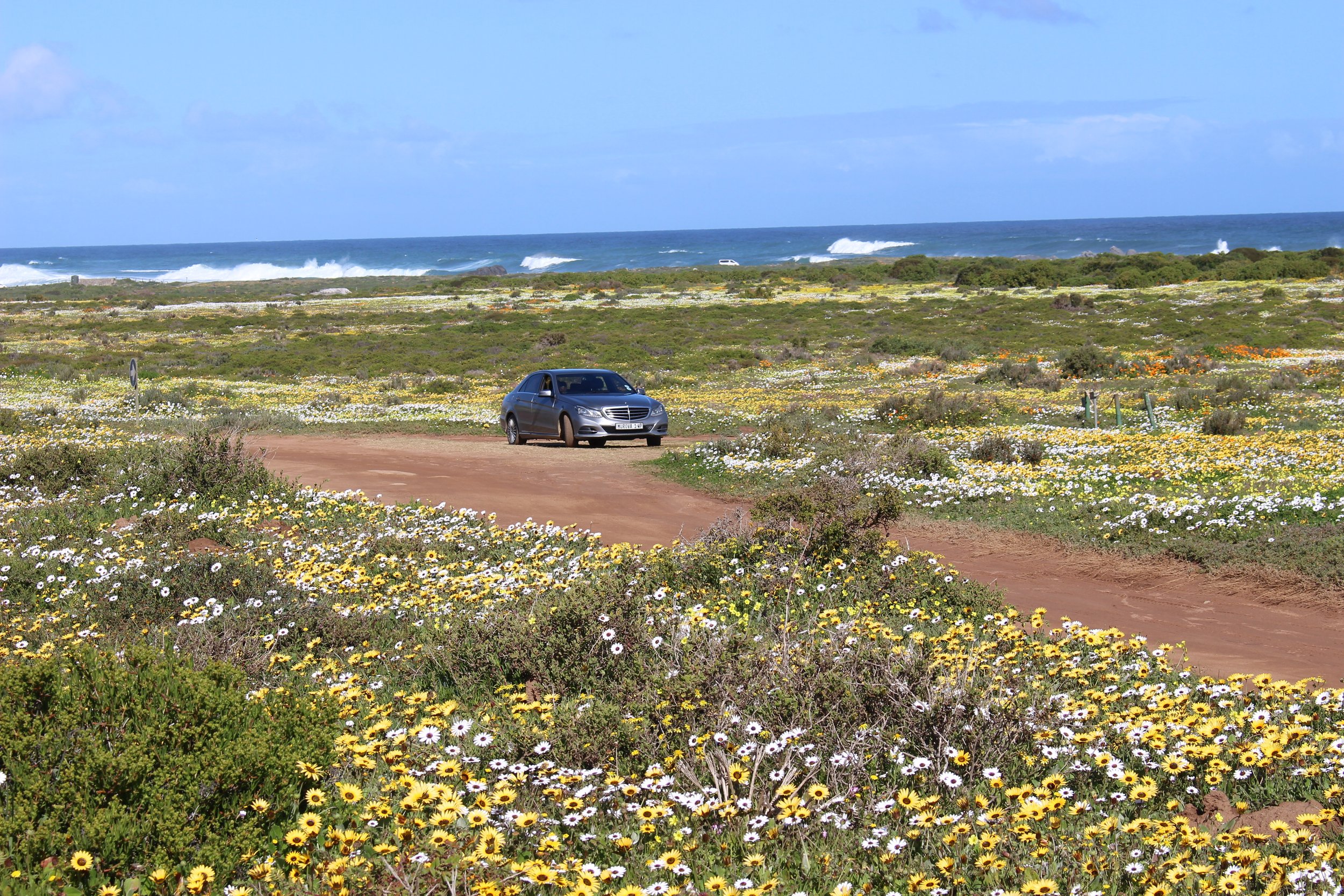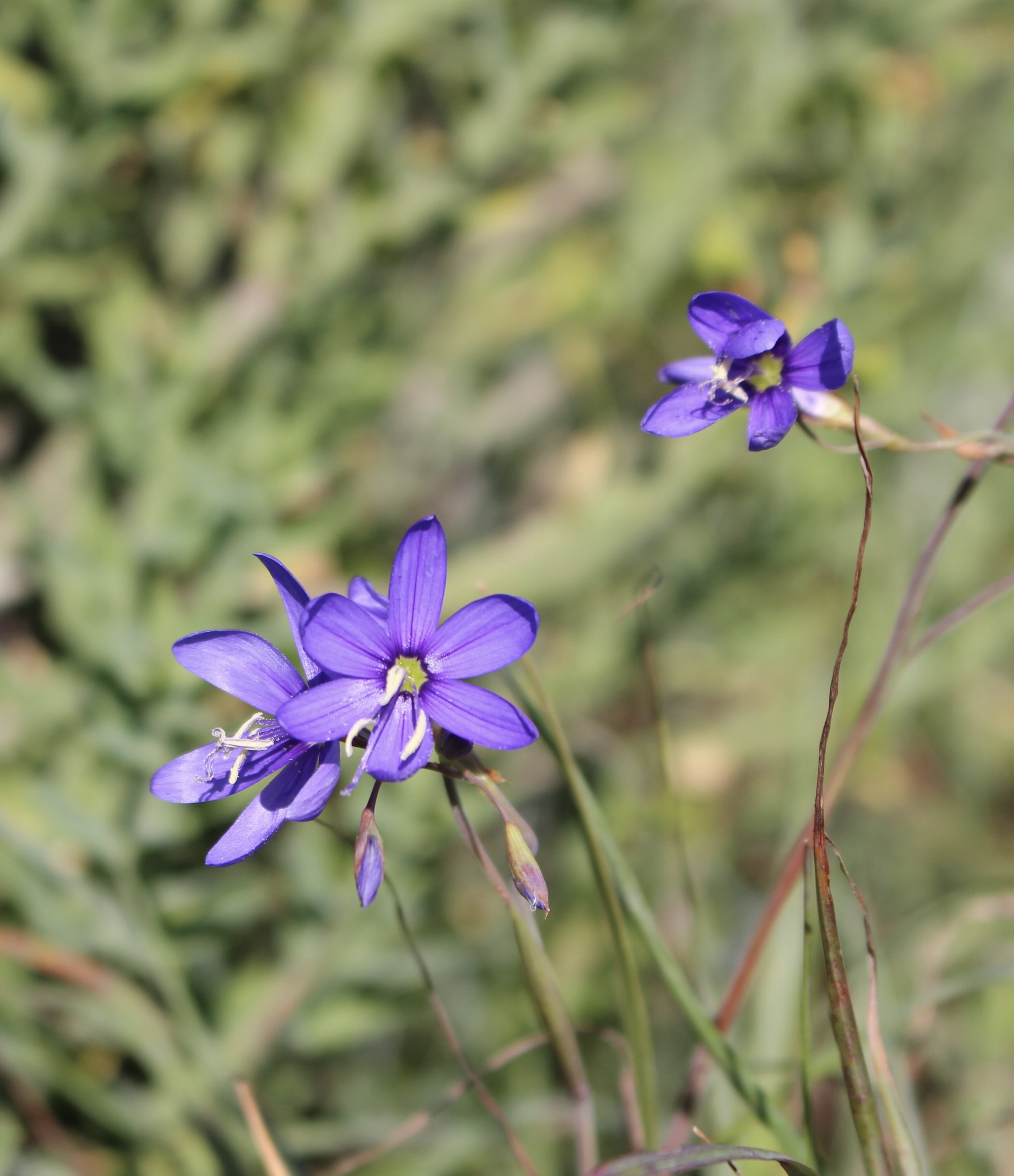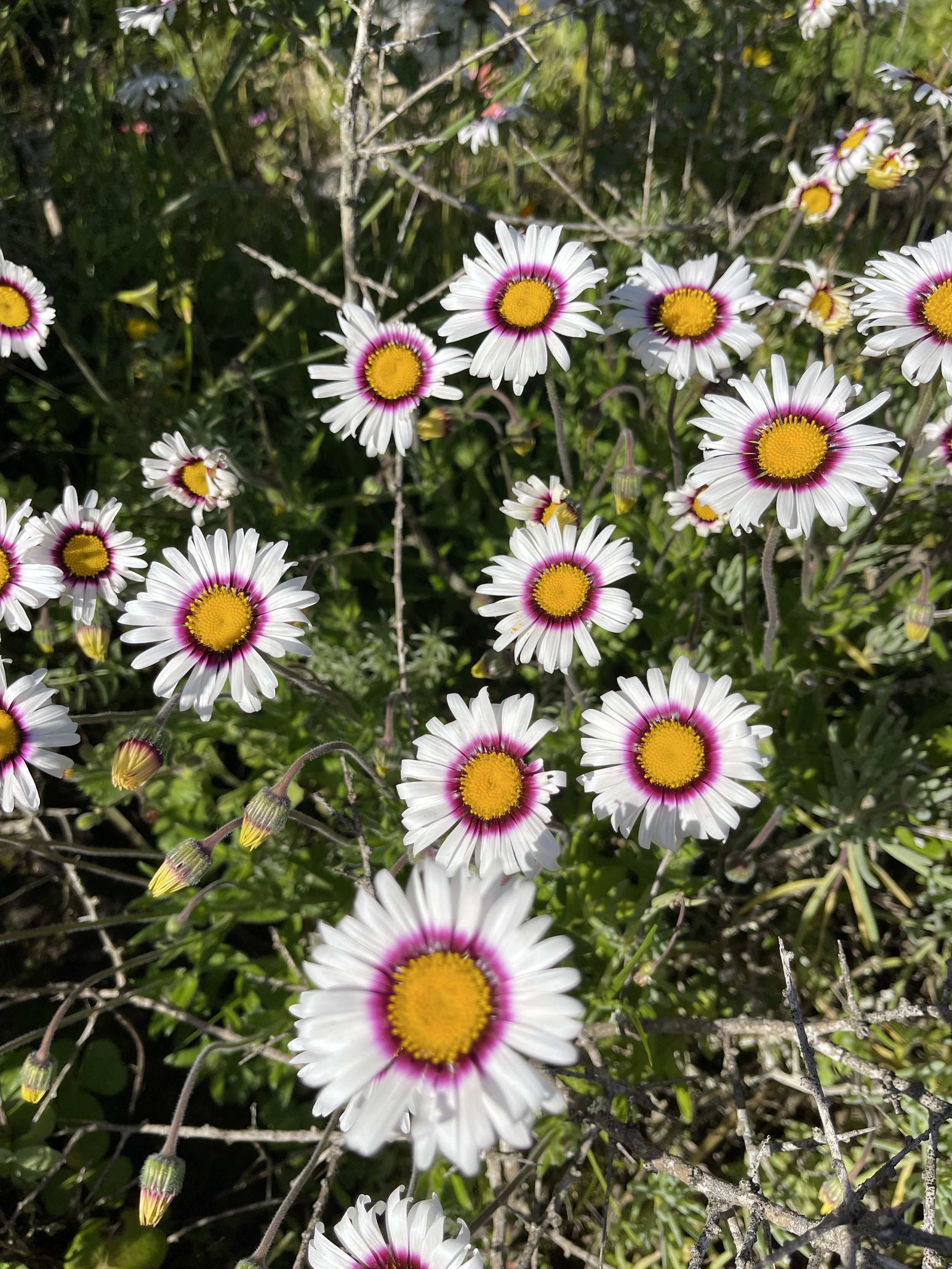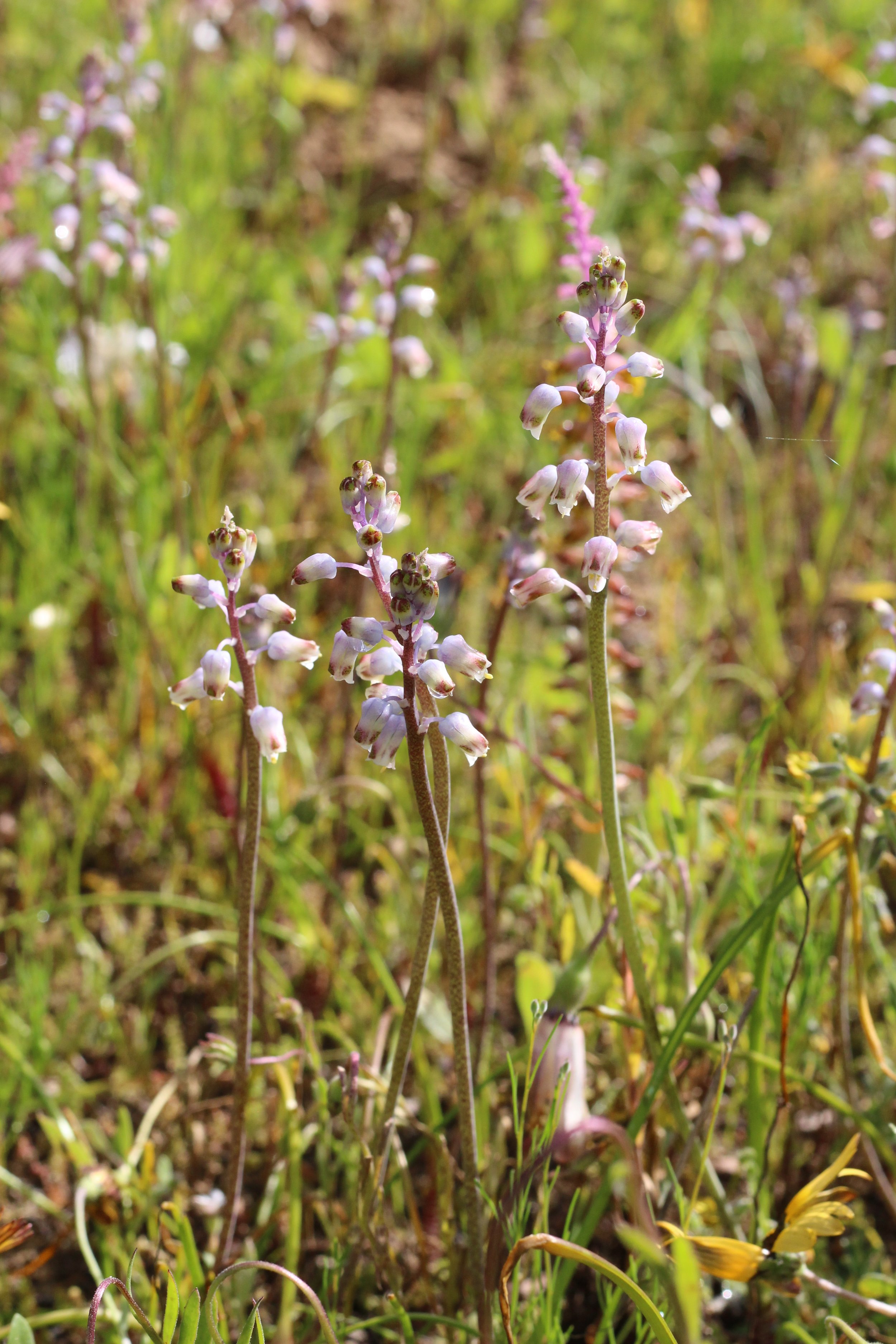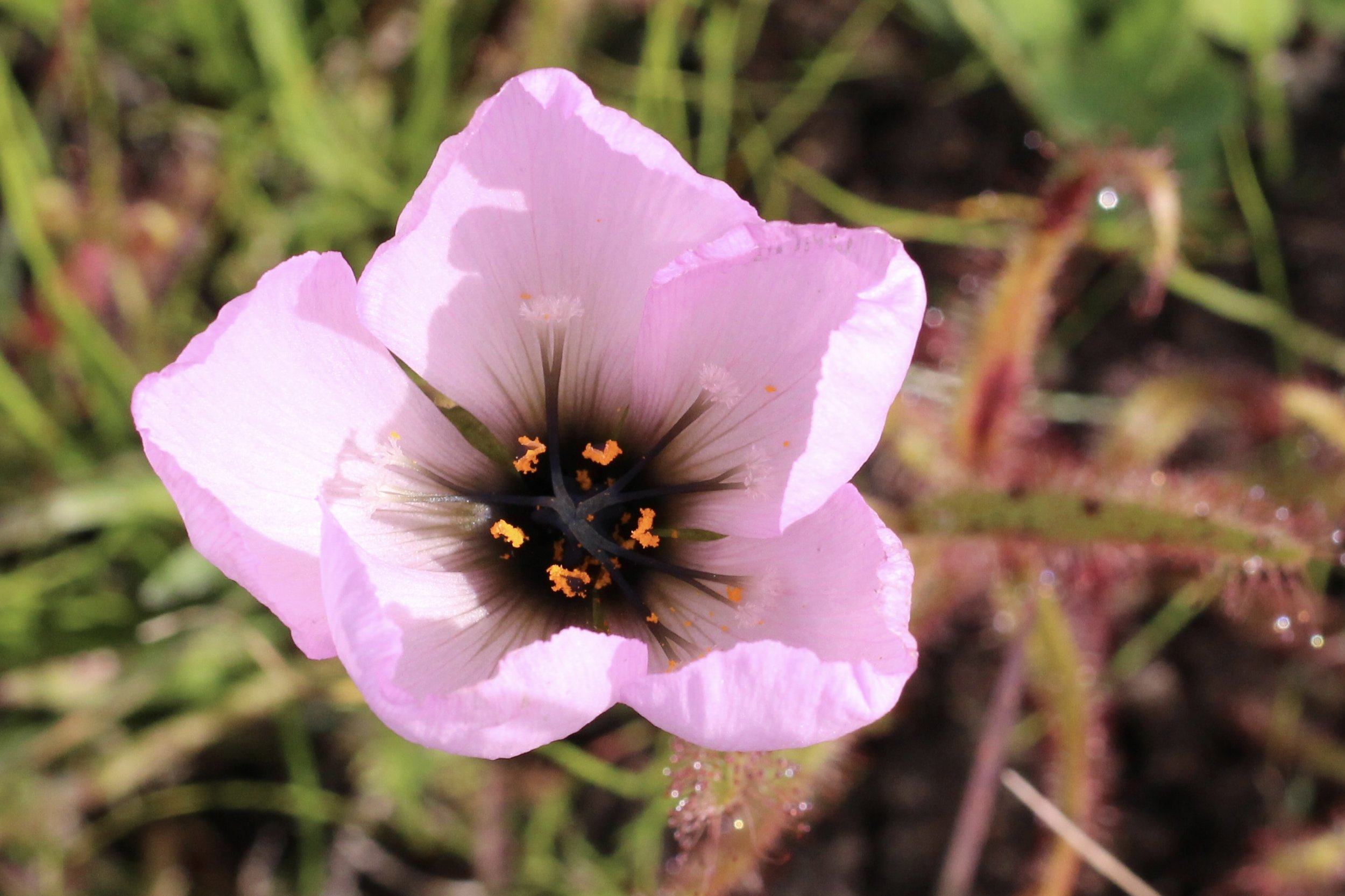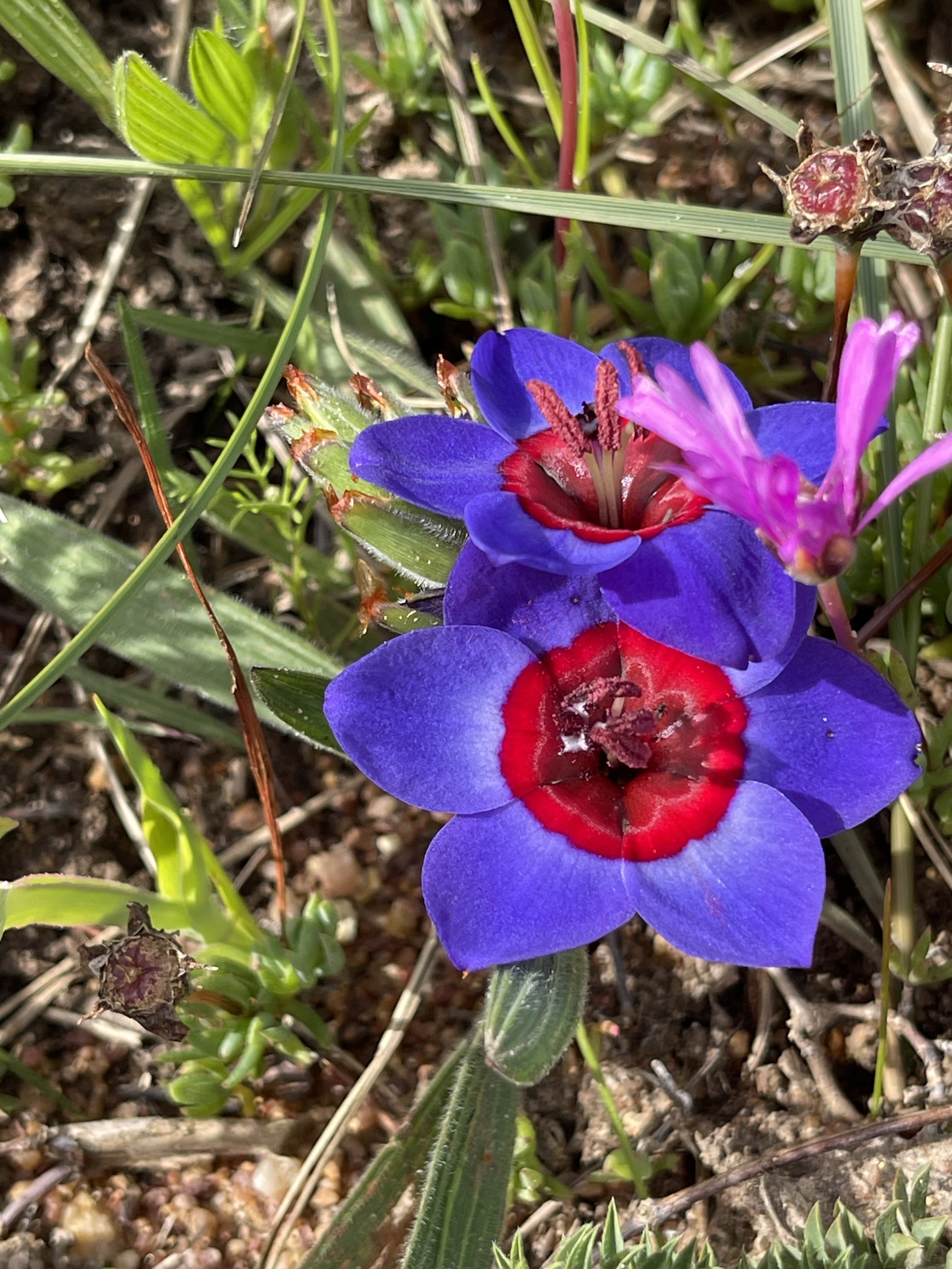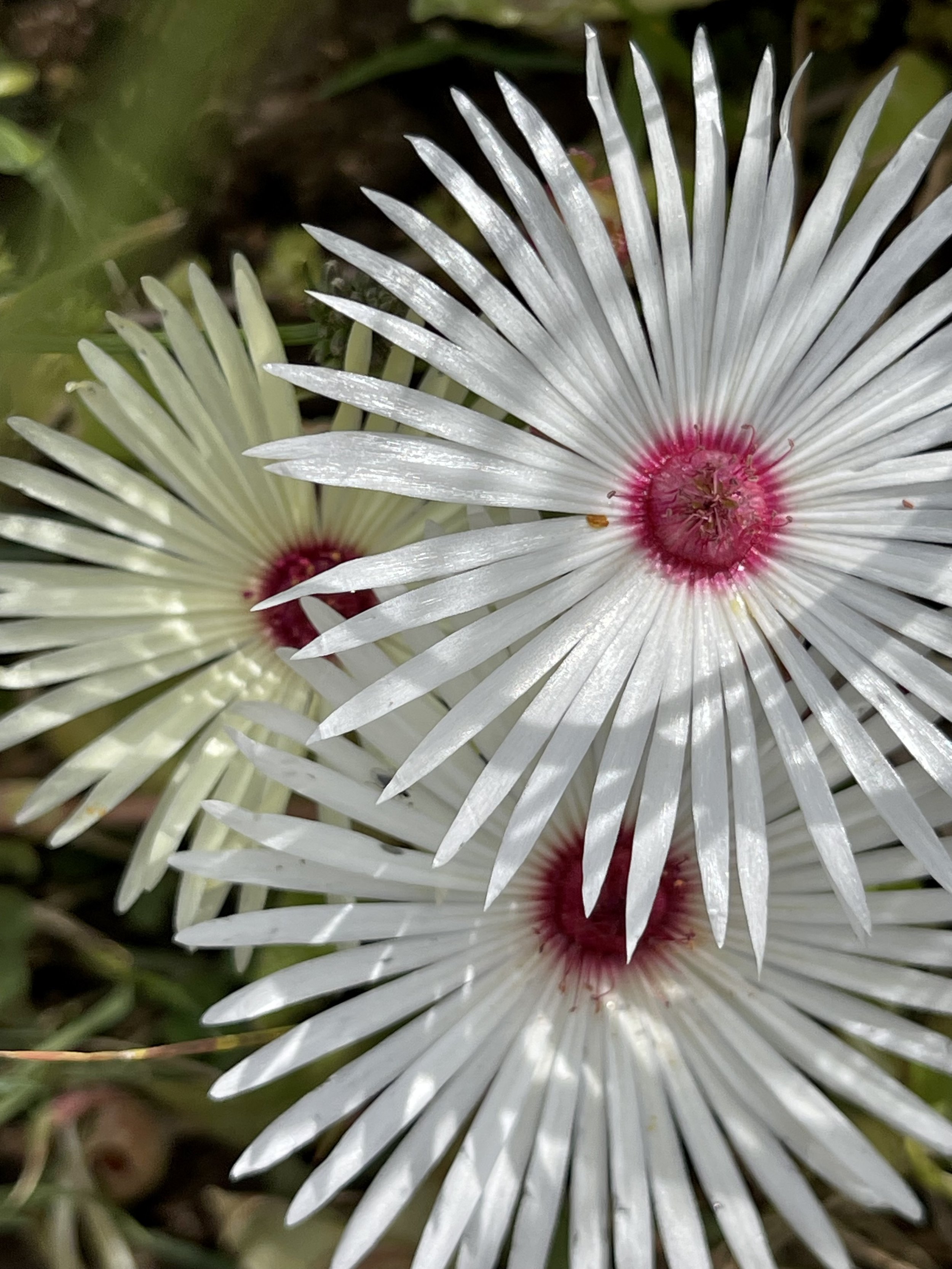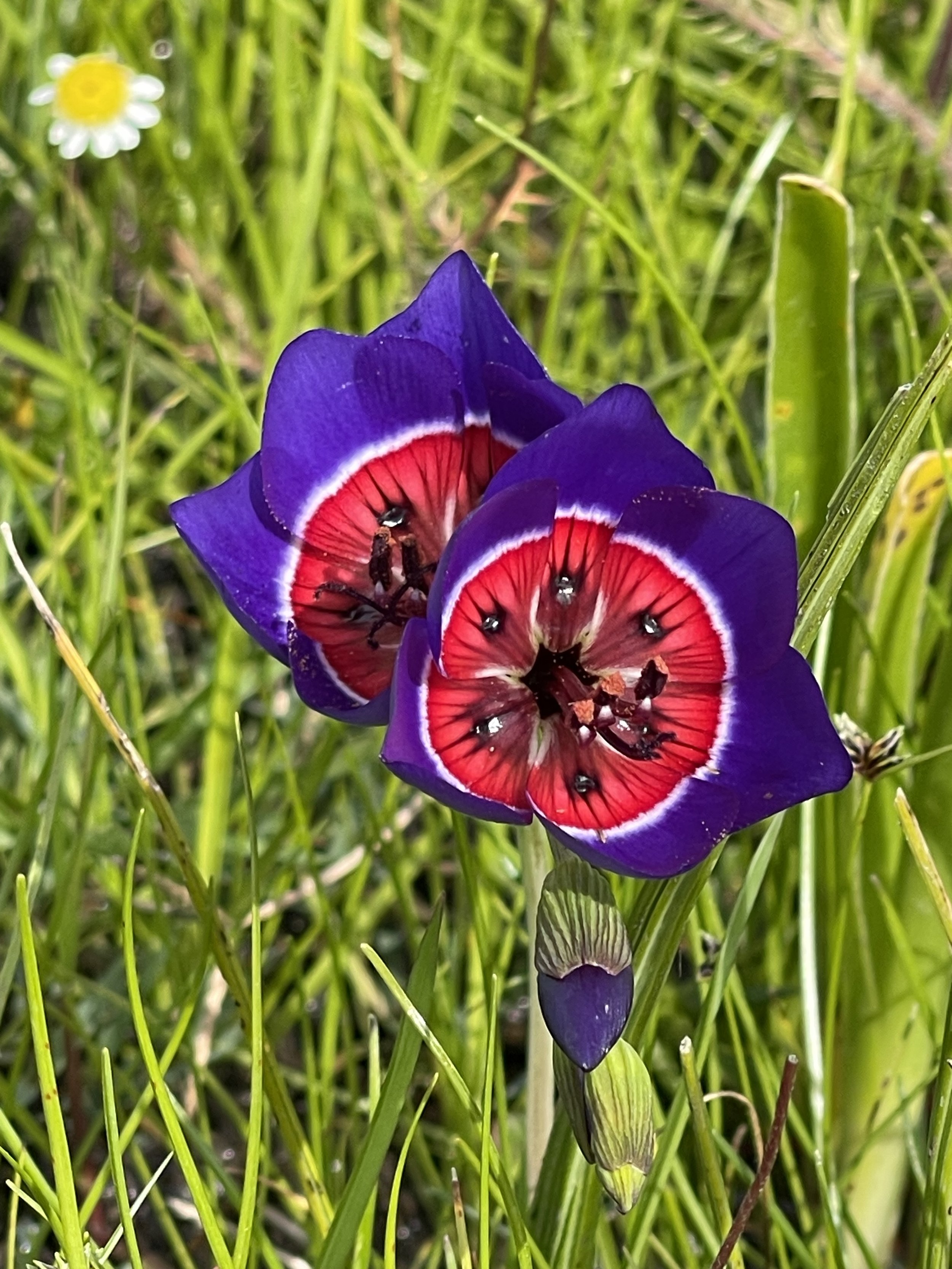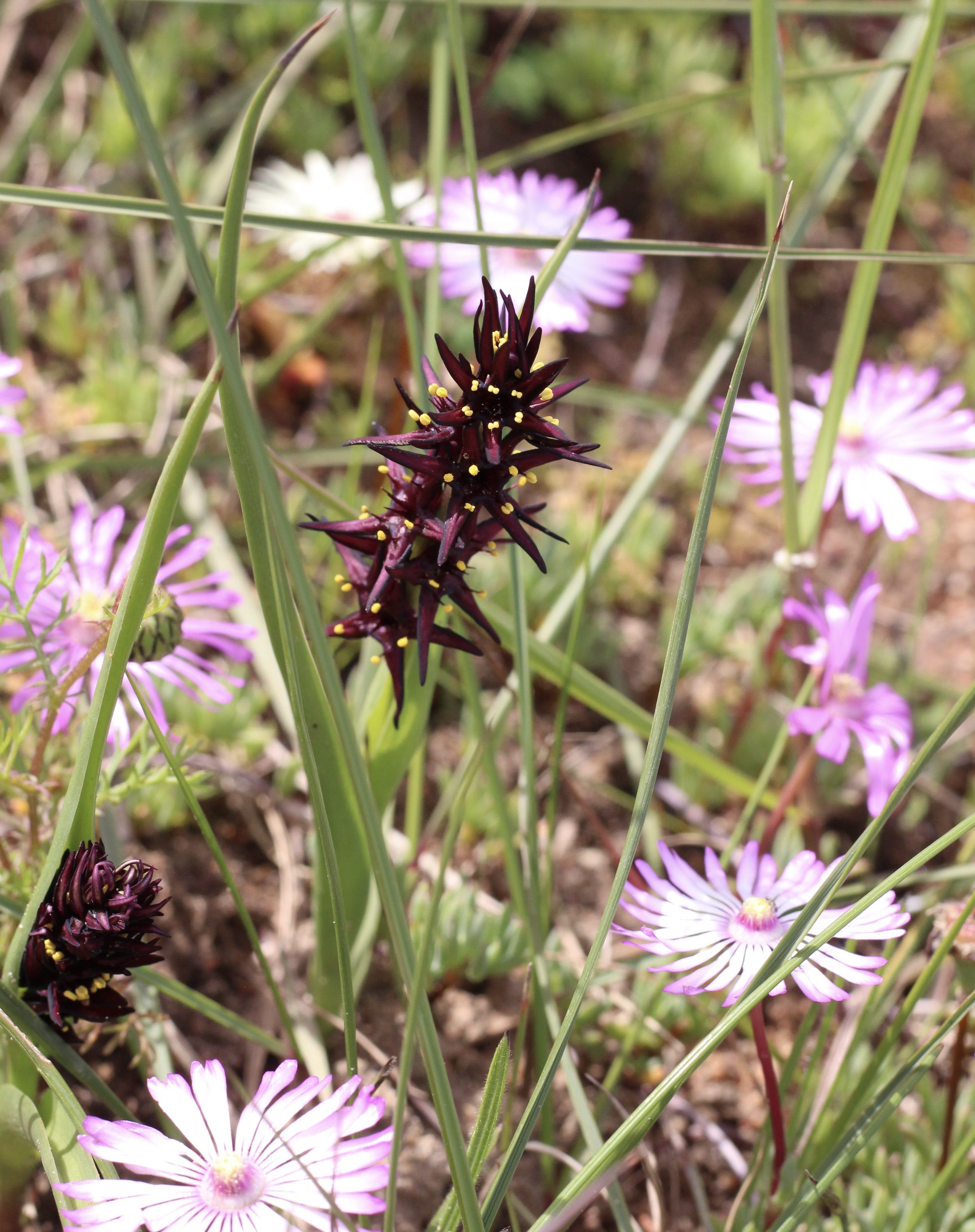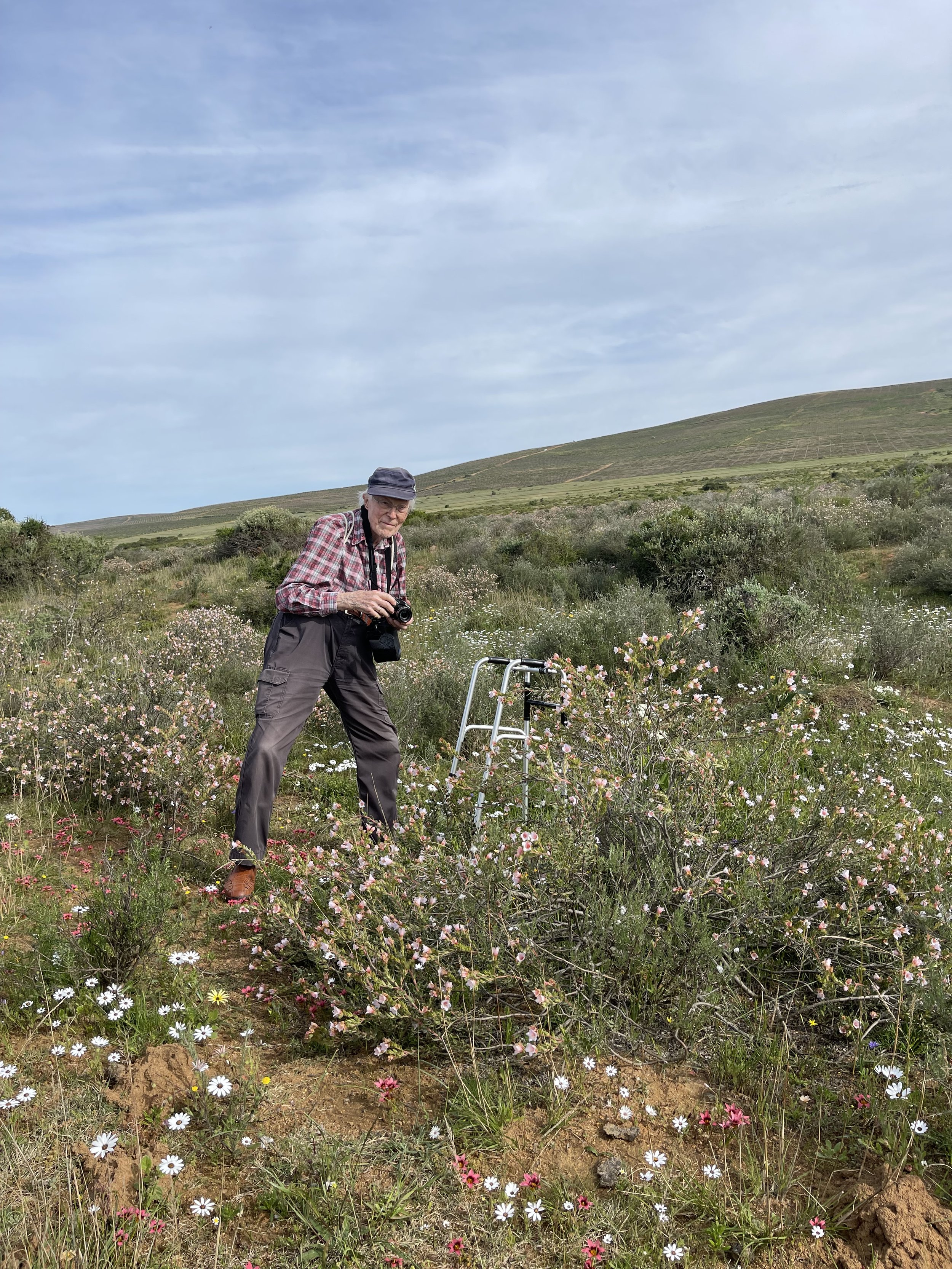You can’t plan a wildflower trip to South Africa. Not entirely. You can choose the season but not the weather. You can find areas but not exact spots. Unlike a guided safari where you are almost guaranteed to see ‘the big five’ in a national park, with flowers you can only put yourself in roughly the right place at about the right time and hope.
You hope for the rain to fall and then not fall. For the temperature hit eighteen degrees Celsius (so the flowers open) and you hope that the heat from the sun is not blown away by wind. As you drive hundreds of kilometres through six types of weather, you hope you will make it by 3pm when the flowers close, that the fog will drip and burn off, that you won’t get a flat tire (didn’t), or lost (did), or that the cell signal will hold (doesn’t), the power won’t go out for too long, and, and, and…all the wondering and wandering will be worth it because YOU WILL LOSE YOUR BOTANICAL MIND :)
South Africa is home to approximately 20,000 plant species (10% of all plants found on earth). The Cape Floral Kingdom is home to about 9600 species, 70% of which are endemic, meaning they grow naturally nowhere else on earth. The Cape Peninsula, a smaller area known for its exceptional plant diversity and endemism has over 2600 plant species (more than the UK) in an area smaller than London. Compared to other heathland ecosystems in California and Australia the Cape Floristic Kingdom, per 1000km squared, has 94 species; California 12 and Australia 14. It had long been a dream of mine to visit during flower season, so when word started to circulate that rains were indicating one of the best flower seasons in decades, I booked a ticket two weeks out and threw together an itinerary as best I could. My goals were to learn more about South African species in the cut flower trade, understand more about the farming of indigenous perennials, and to see plants introduced to global horticulture in their native habitats. What I didn’t factor in was the thrill of the hunt and the staggering beauty and complexity of South African flora. Truly, wonder never ceased.
South African natives from left (all the plants on this page are indigenous): 1. Veltheimia bracteata 2. Phylica pubescens 3. Strelitzia 4. Admiring Paranormus reflexus 5. Proteaceae: 115 species on the southwestern Cape alone 6. Floristic regions of the world 7. Mimetes cucullatus 8. Endangered ‘Splendid Pagoda’ Mimetes splendius 9. Leucospermum bolusii 10. Cotyledon obicularis 11. Melianthus 12.Sparaxis tricolor from Coral’s garden
Here’s a quick summary of my trip, followed by breakout galleries with image descriptions/scene setting: I started in Cape Town visiting the Kirstenboch Botanic Gardens day one (finally a botanic garden that cares about indigenous plants MORE than foreign collections. Yes, I know collections are important for conservation and research but nevertheless immensely refreshing). The following day after visiting the flower market, I met up with Coral Shortt, a floral designer who took me up into the fynbos and to a local flower farm. I moved out to Babylonstoren for two nights to participate in a fynbos walk with their ecologist, see the gardens, and met up with Leon Kluge in the Winelands (Leon is an international garden designer who does South Africa’s displays for Chelsea. He gave me excellent tips on finding wildflowers and helped identify one below), then I interviewed a cut flower grower and exporter near Paarl and zipped back to Cape Town. There I met up with a dear friend from the US/Pretoria, and the following day we set out on a four night adventure—first into the karoo, then to the Biedouw Valley and up to Namaqualand National Park. She left me at wonderful historic farm near Hopefield, where I was able to visit West Coast National Park, attend the Hopefield Flower Show, and spot a few more flowers near Darling on my way back to the airport. Am I tired? Deeply. That all fit into 11 nights (13 if you count the flying) and I wished I’d had a month. Am I still pinching myself? Yes. Am I still trying to identify plants? Of course. Would I return in a heartbeat? 100 percent.
From top left: 1. Peacock flower Pauridia capensis found behind Babylonstoren 2. Coral with a bouquet of fynbos species. (Fynbos is an Afrikaans word that roughly means treeless heathland. 80% of fynbos species are endemic). 3. Food security breakfast: locally grown guava, quince, macadamia, almonds, kumquats, buffalo mozzarella and biltong at Babylonstoren. 4. South African native, Serruria aka Blushing Bride 5. Leucospermum fields at Fresh Cap flower farm 6. Photographing fynbos foliage at Coral’s home 7. I mentioned safaris, where men carry guns to protect guests. No such thing with flower hunting. Everywhere I went I was warned of puff adders and cobras and even black mambas—though often the weather wasn’t warm enough to be too concerned. 8. Prized edible Water blommetjie aka Aponogeton distactyos.
KAGGA KAMMA NATURE RESERVE
We arrived late in the afternoon and had time only for a short walk, but a landscape I would return to. A beautiful borage relative, 1. Lobostemon fruticosus 2. Babiana ?karooica 3. Wild rosemary Eriocephalus africanus 4. Arctosis sp. 5. Hebenstretia dentata 6. Cancer Bush Lessertia frutescens 7. Muraltia spinosa 8. Hasty trip planning around road washouts by the fire at Kagga Kamma lodge.
THE BIEDOUW VALLEY
Pictured: 1. Gladiolus venustus 2. Arctosis spp. 3. The Beidouw valley in full bloom, August 19th, 2023. By summer it will be desiccated by temperatures of 45 Celcius. With thanks to my intrepid friend of 30+ years, Sarah Malm xo 4. Moraea miniata 5. Bulbinella caudafelis 6. Cyanella alba subsp. flavascens only grows in and around the valley 7. Beidouw beauties 8. Pelargonium magenteum (There are more than 200 species of Pelargonium, many scented, in SA) 9. Heliophilia with golden Ursina 10. Cederberg vista en route to the valley 11. Hesperantha bachmannii 12. Alonsoa unilabiata
NAMAQUA NATIONAL PARK
28% of the plants of Namaqualand are endemic. 1. Babiana hirsuta, a type of iris that traps mist, directing it towards its roots 2. Palette of dreams: bloom behind the Namaqua National Park office 3. One of countless members of the Ice Plant family, Aizoaceae, characteristic of ‘succulent karoo’ ecosystems. The southwestern Cape is home to over 2000spp. of Aizos 4. Ecological zones within Namaqualand. This set of pictures features plants of the coastal plain. 5. An asphodel, Trachyandra spp. 6. Felicia 7. Zaluzianskya affinis 8. For flower season (7 weeks) a ‘flower beach safari’ is set up on the site of an old diamond mining camp. It was chilly and damp, but the location could not be beat and the owners/staff most kind. 9. Carpobrotus quadrifidus 10. Dusk before stargazing 11. Nemesia bicornis also known as lilac mist 12. Didelta carnosa with blue Heliophilia 13. Pelargonium fulgidum 14. Drosanthemum with reflective petals 15. Dunes and beaches stretch for miles. The sand is soft so in parts of the park specialized vehicles are required (and/or flattening tires). The owners took us out in their Landrover; the rental didn’t cut it on the sandy roads. To wit: we rescued a car with said Land Rover. 16. Small succulents of Namaqualand are threatened due to poaching. NEVER buy plants on Etsy and educate yourself about the trade in endangered species. Much to say here, but species are still being discovered. Plant poaching is profoundly impacting South African succulent populations.
HANTAM BOTANIC GARDENS, NIEUWOUDTVILLE
Tricky weather for flowers (12-14 C and rain) with a couple hundred kilometres on dirt roads, but we made it to the ‘bulb capital of the world’. 1. Lachenalia 2. Nemesia cherianthus 3. Bulbinella 4. Moraea tripetala 5. A reason to return in the spring, Brunsvigia bosmaniae 6. Lost in Namaqualand 7. Diascia veronicoides 8. Ixia rapunculoides 9. Hesperantha pauciflora (closed due to weather) 10. A baboon on the descent from Nieuwoudtville 11. Moraea miniata 12. Oh to have had a sunny day! Hantam Botanic Garden poster.
KERSEFONTEIN & HOPEFIELD
From left: 1. The Hopefield Flower Show which celebrates local flora. Farmers and community members bring in plants and soil and reconstruct various veld landscapes indoors, like museum dioramas complete with ostrich eggs and taxidermy. Incredible. 2. Kersefontein guest farm (circa 1770) where I had planned to stay one night and lingered for three due to the wonderful company and my host, Julian Melck, who on my last afternoon in South Africa played Bach on an organ at the Hopefield church for the flower show and sealed the deal for my return to South Africa. (I also met Kit at the farm…who has launched a garden supply business in the UK called Vinca. Check it out!) 3. In Namaqualand I was lucky to see this plant growing in the sand dunes, but not in flower: Ferraria crispa 4. Gladiolus elatus 5 & 6: Without a whiff of pretension, wild foods were served at Keresfontein, including water lilies, springbok pie, and the asparagus-like spring treat Trachandra ciliata. 7. Laperirousia jacquinii 8. Wurmbea stricta
WEST COAST NATIONAL PARK
During flower season, the peninsula around Postberg opens to visitors. The park contains approximately 1200 plant species and numerous animals. I saw an ostrich on a sand dune, its neck stretched into the blue sky, it’s feet in purple flowers—a moment I will never forget. 1. Moraea fugax 2. Arctosis, Osteospermum, Gazania, Ursina and Dimorphotheca (I think) 3. Diascia collina 4. Romulea hirsuta 5. Looking inland from the peninsula 6.Cleretum apetalum with a pollinating beetle 7. In Cape Town, around the winelands and up by the west coast, I used a driver which saved me time, felt safest in the city, and made my work easier. Innocent, my driver, enjoyed the time flower hunting and staying over with me at Keresfontein. 8. Geissorhiza aspera 9. Innocent found this African penguin when I was off in the dunes looking for flowers. He got a few great pictures of it standing up and gave it a pat, worried it was sick. We notified a ranger who explained the bird was simply taking a break from fishing and that it was fine to say hello. This was close as I wanted to get as they are a threatened species, but a complete thrill that was topped about half an hour later when we drove into the veld and spotted Cape zebra and bontebok grazing in flowers. 10. Felicia elongata. 11. Salvia africana-lutea (without it’s caramel-coloured flowers) with Pelargonium fulgidum 12. Lachenalia spp.
DARLING
A sundew, Drosera cistiflora 2. Peacock flowers emerging 3. Babiana rubrocyanea Endangered baboon flower 4. Cleretum spp. 5.Geissorhiza radians is highly threatened. 6. Wurmbea marginata 7. Hesperantha falcata 8. A fellow flower fiend out with his walker.
Until next time South Africa x CG


